Refresh
The Quiet Before the Storm? Not Quite.

CES’s first day of exhibits is Thursday and the official press day is Wednesday so you might expect today (Tuesday) to be a dead time. In fact, when Tom’s Hardware Deputy Managing Editor Paul Alcorn went to pick up his badge, he snapped this picture of a basically empty line.
However, today is also a day when a number of major press announcements rolled out that are going to have a real impact on the market and your next PC build. Nvidia made the RTX 4070 Ti official (opens in new tab), giving it an MSRP of $799 while also announcing a full series of RTX 4000 series cards for laptops (opens in new tab) that range from a 4090 to a 4050.
Intel also launched its 13th Gen mobile CPUs (opens in new tab) , along with 16 new, locked desktop Raptor Lake chips (opens in new tab) that range from the Core i3-13100 on the low end to Core i9-13900 on the high end.
To take advantage of the new mobile CPUs and GPUs, we’ve seen laptop announcements from Asus (opens in new tab), Acer (opens in new tab) and Dell / Alienware (opens in new tab). All of these launches were expected as we usually see Intel and Nvidia roll out chips at CES while PC vendors immediately incorporate the chips into new computers.
What’s on tap for the rest of today? At 5 pm PT, CES Unveiled — an expo where companies show their new wares to journalists — starts. We’ll be there to take a peek and see if we see anything new and noteworthy. Often, Unveiled isn’t very interesting for us, because it doesn’t have a lot of PC or enthusiast tech exhibitors. But we’ll see.
Asus Targets Keyboard Modders with Latest Clacker
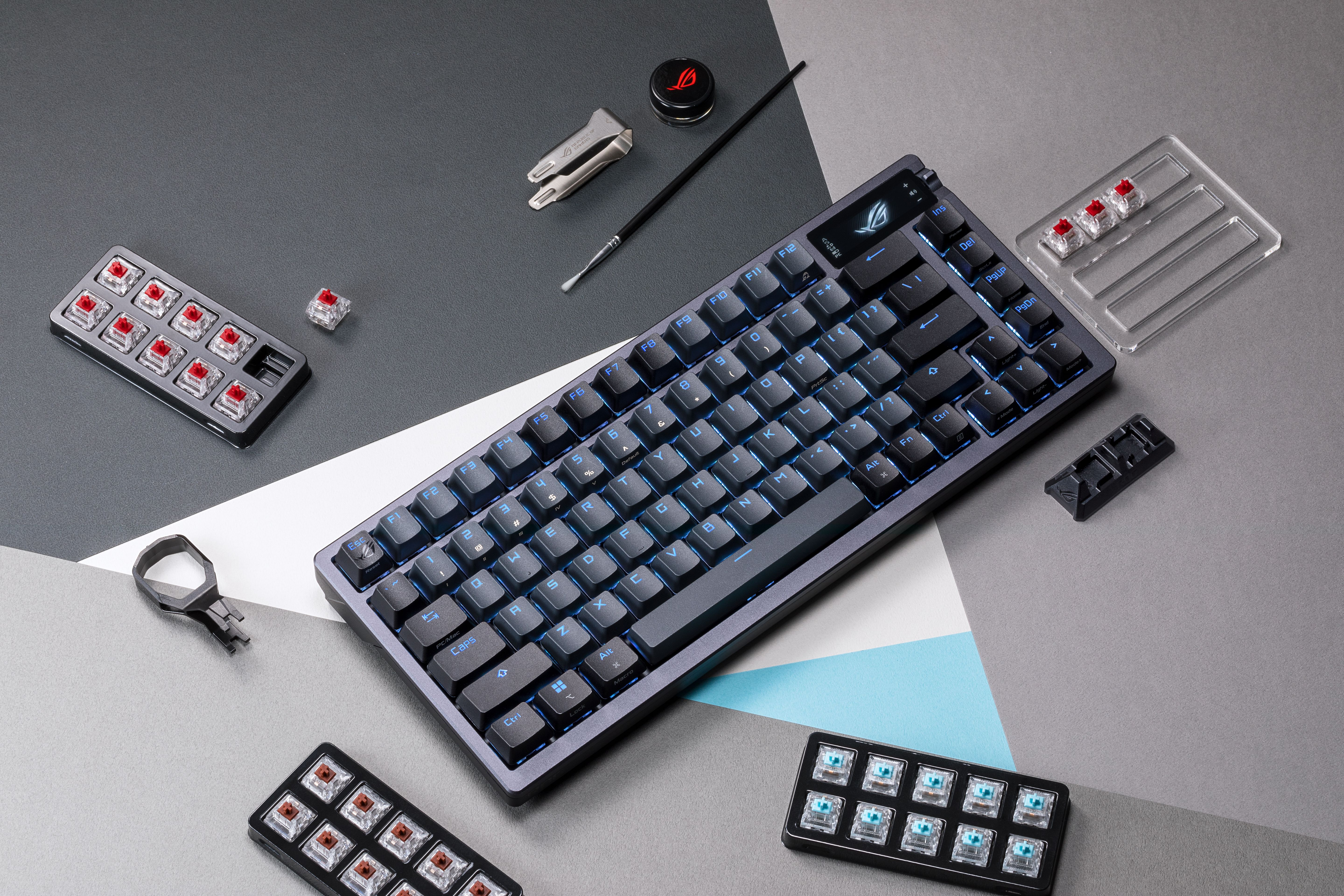
When it comes to keyboards, there are three kinds of people: those who will use any $10 pack-in keyboard without complaint, those who want one of the best gaming keyboards (opens in new tab) and those who want to build or modify their own keyboards. Asus’s ROG gaming brand has released some noteworthy gaming keyboards in recent years, including the ROG Strix Flare II Animate (opens in new tab)and ROG Strix Scope RX (opens in new tab). Now, the company is targeting keyboard modders with its ROG Azoth wireless keyboard.
Due later this month for a pricey $250, the ROG Azoth is a 75-percent wireless keyboard with a silicone gasket mount, pre-lubricated switches and a three layer dampening structure that includes a silicon foam-lined base, a Poron pad and a silicone pad. Designed to increase stability and limit ping noises, these are features that many enthusiasts build into their custom keyboards or expect from high-end mechanical keyboards.
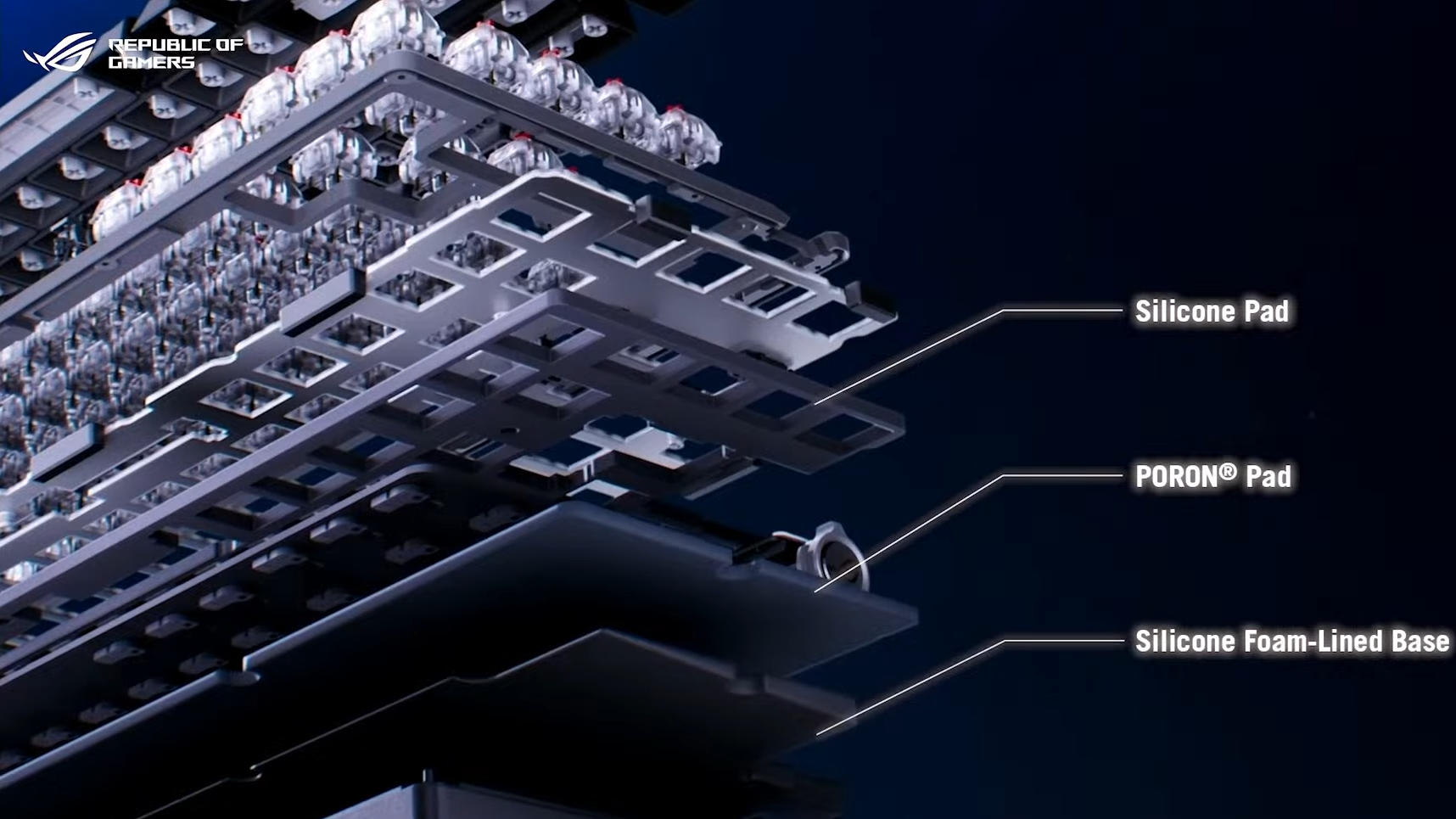
If you don’t like Asus’s own NX Switches (available in red, brown and blue), you can hot swap them out. And, if they aren’t lubed to your liking, you can use the included switch lubing kit which has Krytox GPL-205-GDO lube and a switch opener.
The keyboard is compatbile with costar stabilizers if you want to switch out your stabs to change the feel. Its keycaps are PBT, double-shots with shortened stems that are designed to reduce key wobble. The legends are transparent so they can let the RGB lighting through.
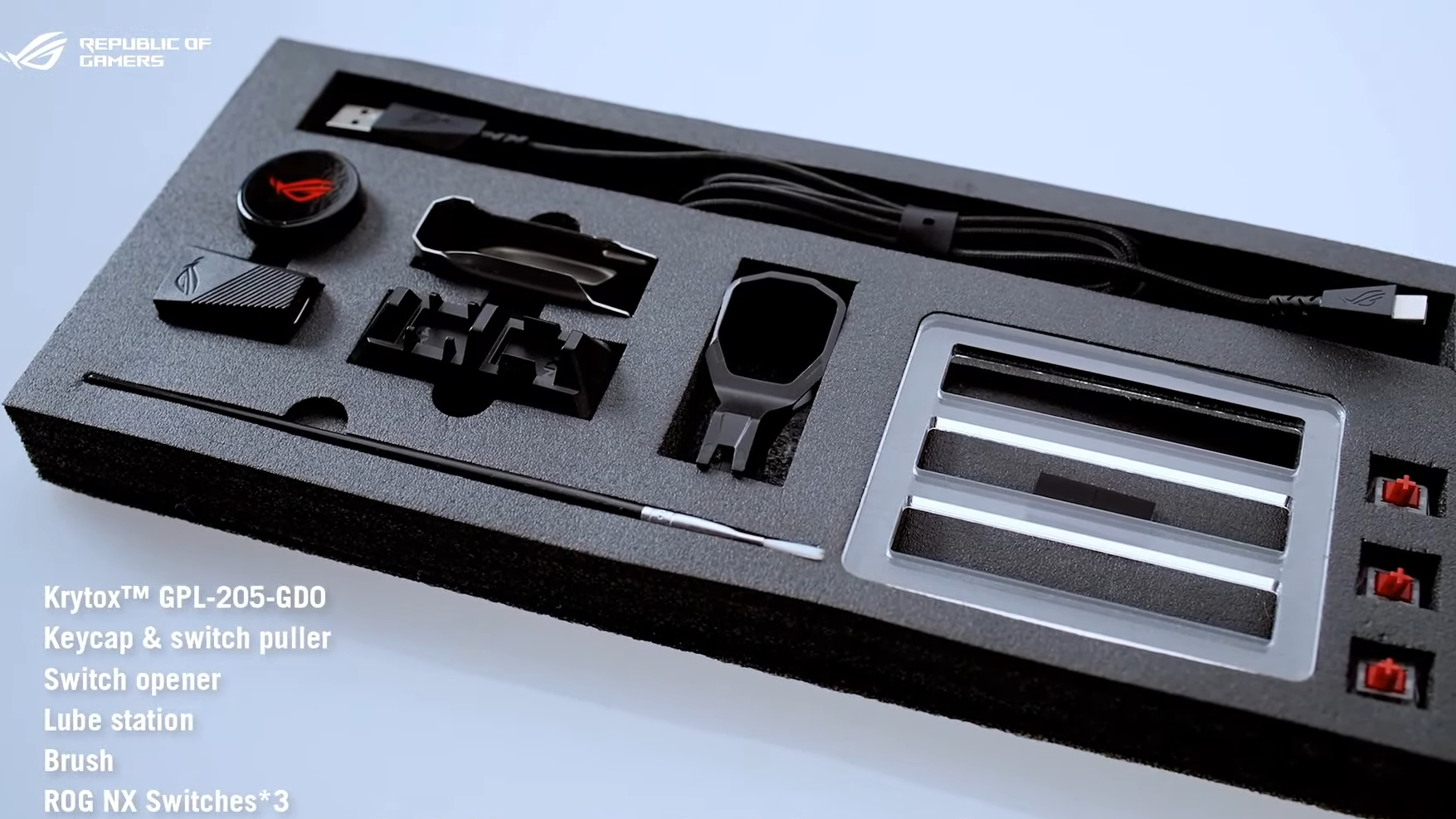
The Azoth also has a built-in LED screen in its upper right corner, which can show custom animations or give you status updates on the wireless connectivity or battery life. A dial to the right of the LED screen lets you change modes or you can do so via Asus’s Armoury Crate software.
The Azoth can connect to your PC in one of three ways: via wired USB-C, via 2.4-GHz wireless or via Bluetooth. There are three different Bluetooth profiles so you can switch among multiple computers.
We haven’t had a chance to test out the Azoth in person, though we hope to get some hands-on time with it or perhaps to do a review in the near future. With this keyboard, it’s clear that features such as switch lubing and case dampening are moving from the high-end, DIY kits to mainstream gaming keyboards. That’s a good thing for everyone.
Nvidia’s Eye Contact Feature is Creepy, But it Works
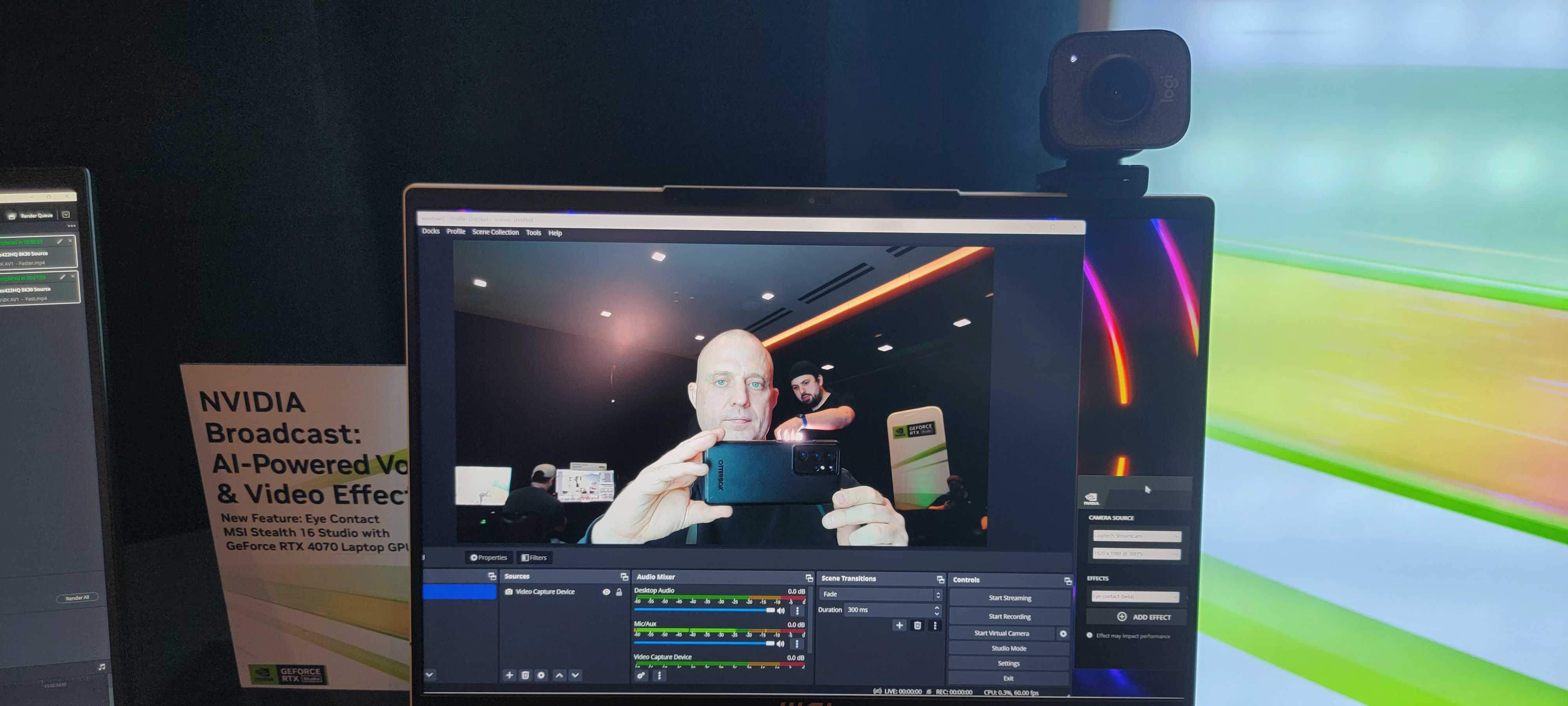
One constant problem with video conferencing: You want your call partners to think that you’re looking straight at them, but you’re actually gazing at a window on your desktop rather than straight into the webcam. Whether the problem is that you’re multitasking (and not paying full attention) during the call or just that the Zoom, Teams or Meet window is not perfectly aligned with the center of the webcam, looking askance is a subtle violation of the social contract.
In the next version of its Broadcast software, version 1.4 to be precise, Nvidia has a solution which it calls “Eye Contact.” Simply put, the software uses A.I. to modify the image of your eyeballs so that it always looks like you are starting straight ahead. Because Nvidia Broadcast serves as a virtual webcam driver, you will be able to use the feature in any video conferencing or recording software you want.
Deputy Managing Editor Paul Alcorn had a chance to test out the Eye Contact feature at Nvidia’s CES demo suite and we can say with authority that it works really well. As he looked up, left and right, the real-time camera output continued to show his eyes looking straight forward. Paul notes, however, that when he turned his head sharply enough, the feature turned off.
Below, is an Nvidia video showing how the Eye Contact feature works.
Like other kinds of video enhancements such as virtual backgrounds or noise filtering, the Eye Contact feature raises question of authenticity. If the system is redrawing your eyeballs to make it look like you are staring straight ahead, is it enabling you to “lie?” In effect, you are creating a sortof deepfake, a deepfake of yourself.
On the other hand, given that video conferencing creates an inherently virtual situation, is using A.I. to enhance your image really a problem? If you were talking to someone in person, you’d be looking them in the eye, but the nature of webcams makes this scenario more difficult to achieve online so Nvidia’s software is correcting for it. Either that, or it’s making you look like you’re paying attention to someone when you’re actually checking your email in another window.
Whatever the case, Eye Contact seems to work really well. Nvidia says that its Broadcast 1.4 software, which is a free download and works with any Nvidia RTX GPU, will be available later this month.
Upcoming Nvidia Tech Uses A.I. to Upscale Video to 4K
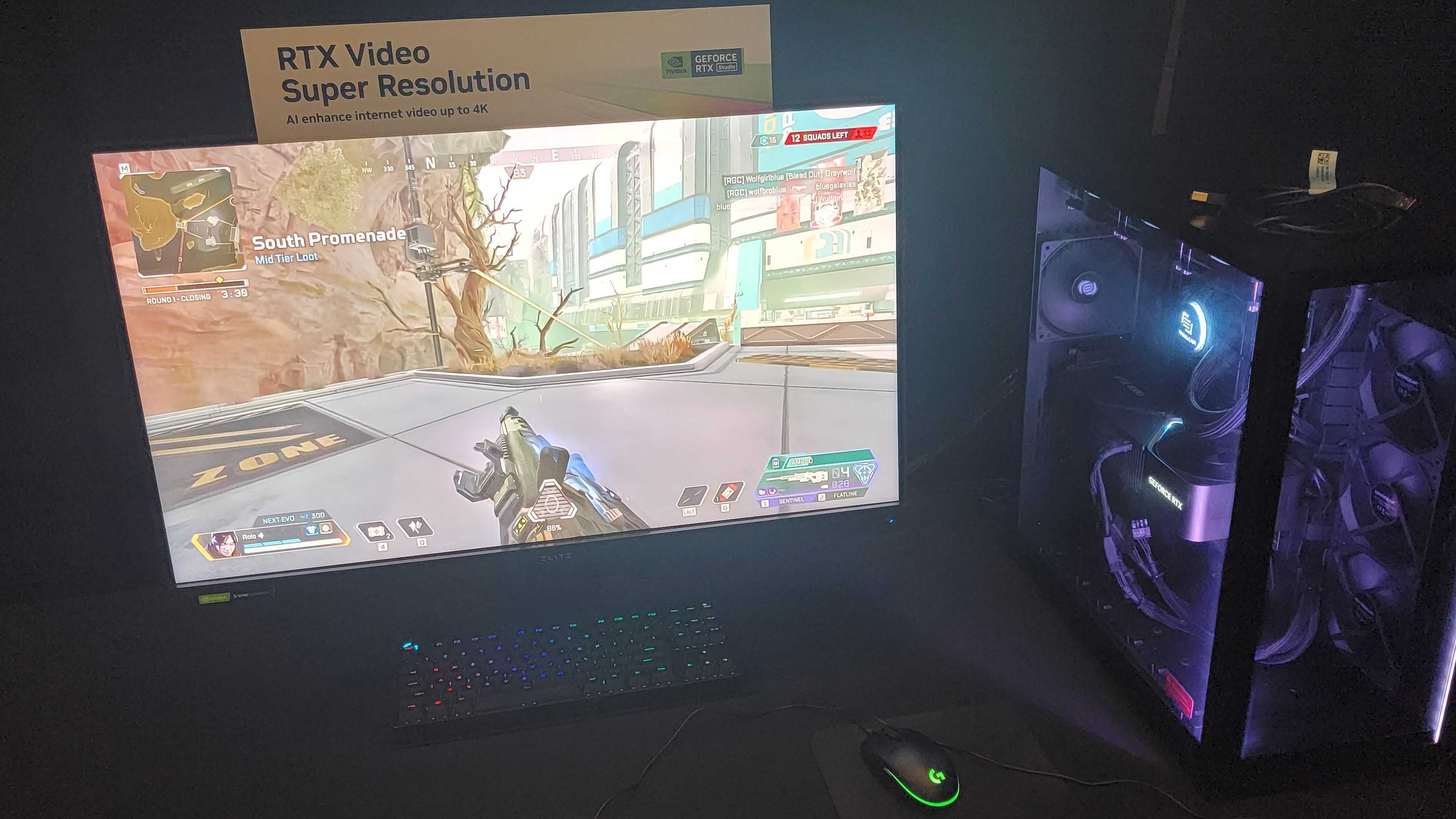
One of Nvidia’s more interesting CES 2023 announcements involves a technology it calls RTX Video Super Resolution, which can take a video from YouTube, Netflix or another streaming service and convert it from 1080p to 4K or 720p to 2K. Due in February, the feature will require RTX 3000 or 4000 series GPUs, at least at first, and will be automatically triggered by Nvidia’s GeForce Experience software, though it will run on videos streamed through either Chrome or Edge browser.
At Nvidia’s CES demo suite, Deputy Managing Editor Paul Alcorn got a chance to see a live demo of RTX Video Super Resolution in action as it was turned on and off on a clip from the game Apex Legends. The Apex Legends clip was streamed from YouTube and was natively 1080p. However, with Super Resolution enabled, fine details like the blades of grass on the ground appeared noticeably sharper. You can see Nvidia’s own demo video which uses the same Apex Legends clip we saw below.
An Nvidia representative told Paul that, depending on the performance of the graphics card you use, the upscaling process should use between 10 and 20 percent of your GPU. The rep also said that the process can only upscale video by 4x so, if it’s 1080p video, it can upscale to 4K, but if it’s a lower resolution, it can’t get that high. They also said that the feature may be coming to RTX 2000 series GPUs sometime.
What we don’t know is how well this upscaling will work on live action video. Apex Legends doesn’t have the very best graphics around and what really matters for 4K upscaling are streaming movies and TV shows.
The implications of real-time, A.I. video upscaling are pretty significant. Some streaming services, including Netflix, make you pay extra for 4K video, but with Nvidia’s technology, you’d get the equivalent (though upscaling is never as good as native) for free and without all the bandwidth 4K video consumes. In many cases, people have 4K monitors but the video source isn’t even available in 4K.
The initial demo Paul saw was impressive, but we’ll withhold final judgment until we get to test RTX Video Super Resolution on our own computers with videos of our choosing.
This 55-inch, OLED TV is Totally Wireless Including The Power
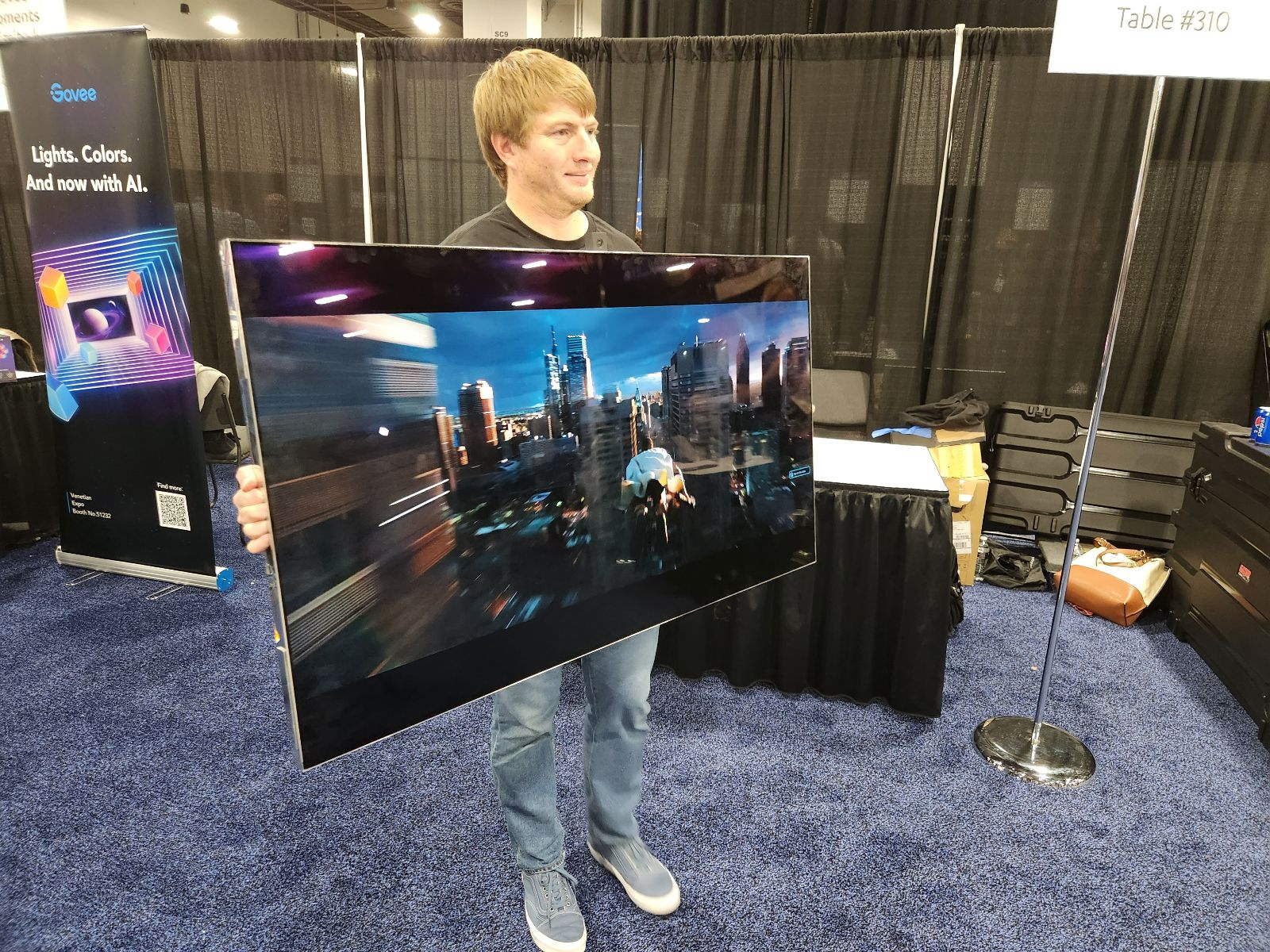
At Tom’s Hardware we don’t normally talk much about TVs, unless we’re using them as monitors. However, at the CES Unveiled press event, we saw Displace TV, a truly unique display that gets its power from batteries, its video from a Wi-Fi 6E base station and its controls from hand gestures.
At its booth, the company had a representative holding the 20-pound TV in his hands. Tom’s Hardware Content Director Jeremy Kaplan had a chance to briefly watch the screen as it looped through a series of movie trailers and noted that playback was flawlessly smooth with sharp and colorful images.
The 20-pound,55-inch OLED display gets its power from four hot-swappable batteries. The company claims that the batteries will last about a month on a charge if you watch TV for around 6 hours per day. Because the batteries are hot-swappable, you can charge one while the system runs on the others.
Displace says that the TV will “magically stick” to your walls using its “proprietary active-loop vacuum technology,” which only requires a light push and no brackets or screws at all. This sounds like a high-tech suction cup and we are skeptical, and we didn’t see it mounted during the demo.
You can also combine up to four of the TVs together into a single, 110-inch display by putting them next to each other. In lieu of a remote control, you can use gestures, voice or touch to control the menus. There’s a built-in camera to capture your gestures. We did not see any of these controls demoed at CES Unveiled, but the idea of them sounds neat.
The base station has some computer parts inside, including an AMD CPU, an Nvidia GPU and a Wi-Fi 6E radio. The company has not disclosed exactly which CPU and GPU models it’s using.
The idea of a wireless, portable TV that “magically” sticks to any wall is interesting. Imagine carrying your TV from one room to another in your home or lining your walls with TV screens, without worrying about how close they are to an outlet.
Past wireless display technologies such as Intel WiDi and WiGig have failed to catch on and have largely been disappointing. So we’d really want to test this to see what the latency is like and if it’s good enough for gaming.
So this is interesting, but we don’t know yet how well the Displace TV works or even what it costs. The company says that it will begin taking pre-orders on its website this month with units shipping by late 2023. We recommend caution.
RTX 4070 Ti Tested and Reviewed: Great for 4K Gaming
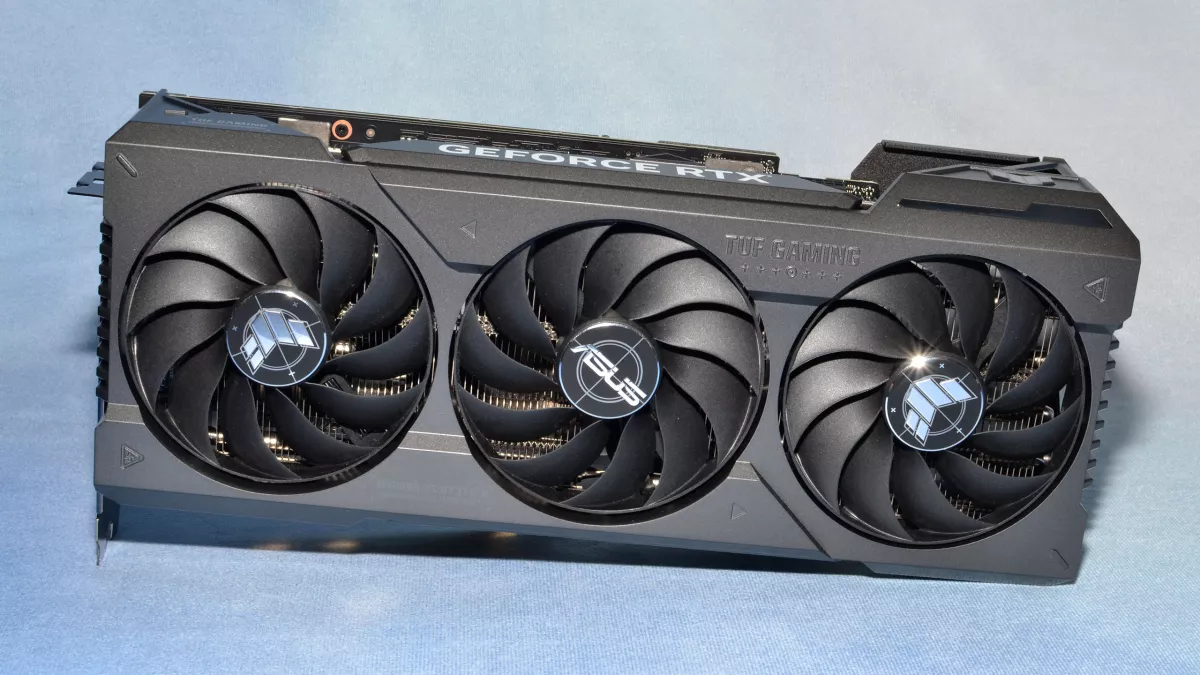
Yesterday, Nvidia announced the RTX 4070 Ti and today we have a full, very-thorough RTX 4070 Ti review (opens in new tab) published. We’ve had a 4070 Ti-powered card under embargo for a few weeks and we’ve been testing it in a ton of scenarios and comparing the results to other GPUs.
To get the full story, you really need to read the review, but the long and short of it is that the RTX 4070 Ti is a great card for 4K gaming with ray tracing off and 2K gaming with it on. However, at $799, it’s still quite expensive and, if you already have top-of-the-line prior-gen cards such as the RTX 3080 Ti or RTX 3090, it’s slightly better but not worth the upgrade.
That being said, if you are building a new system or your current card is less powerful than an RTX 3080, the RTX 4070 Ti offers really strong performance. In our 4K gaming tests, the GPU played our test suite of games at an average of 69 fps. That number jumped to 75.5 fps when we overclocked the 4070 Ti, boosting its maximum clock speed by 175 MHz (the regular boost clock is 2,610 MHz).
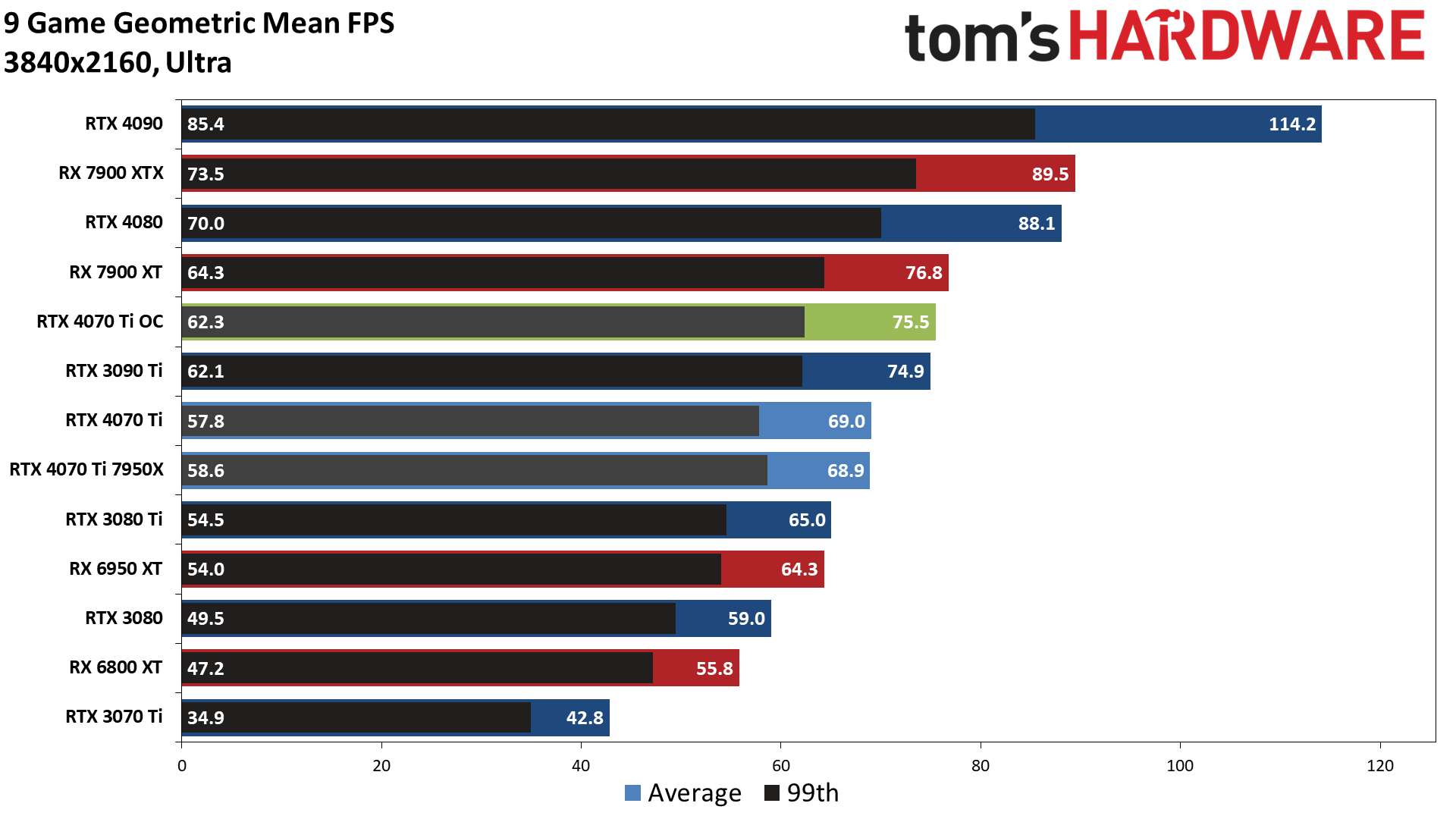
With Ray Tracing enabled, 4K games were playable (35.1 fps) with DLSS off and pretty smooth (58.8 fps) with DLSS2 on. But remember that not every game supports DLSS.
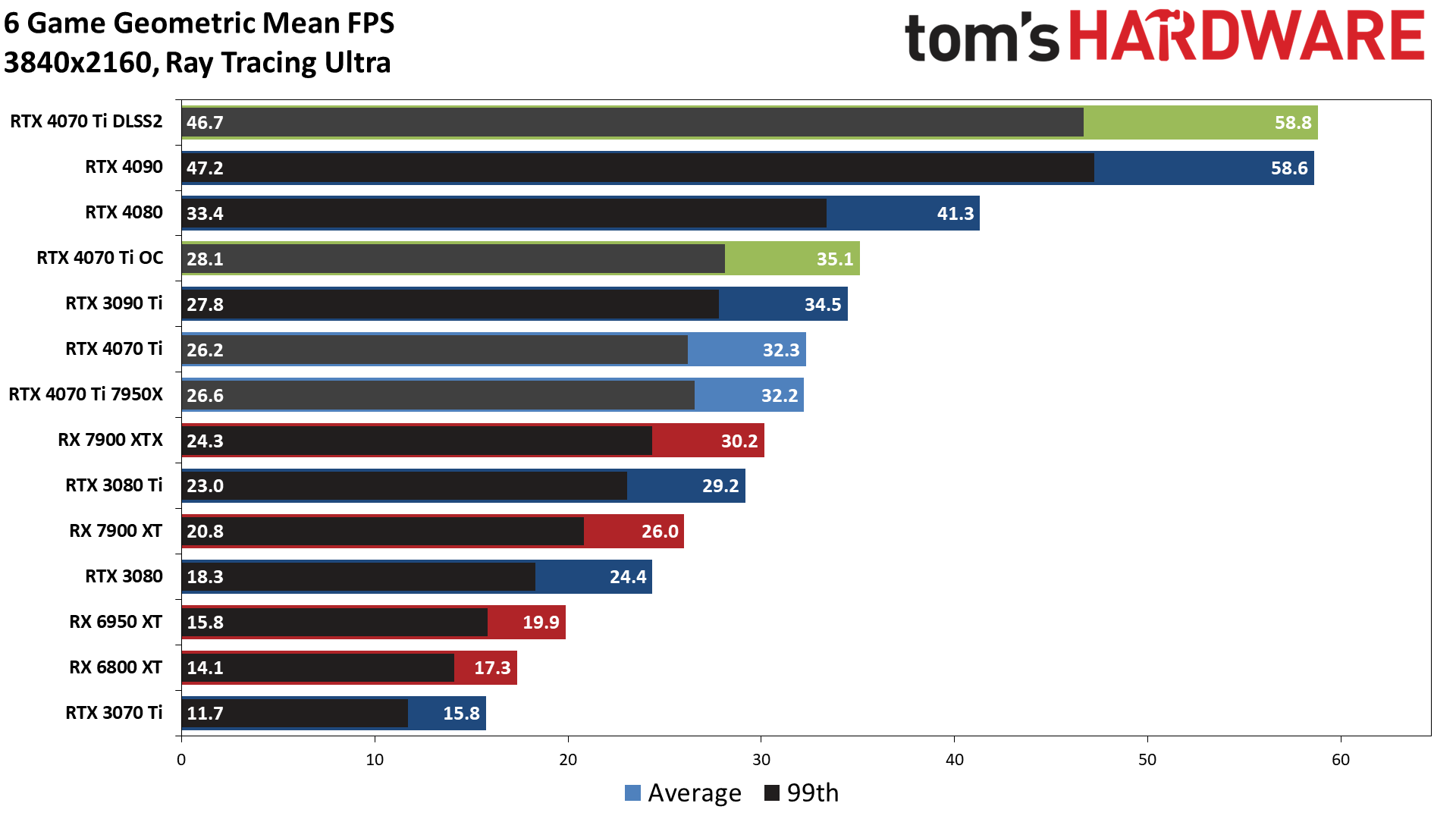
At 1440p resolution, Ray tracing was much smoother, hitting 102.9 fps with DLSS2 and 62.7 fps without DLSS.
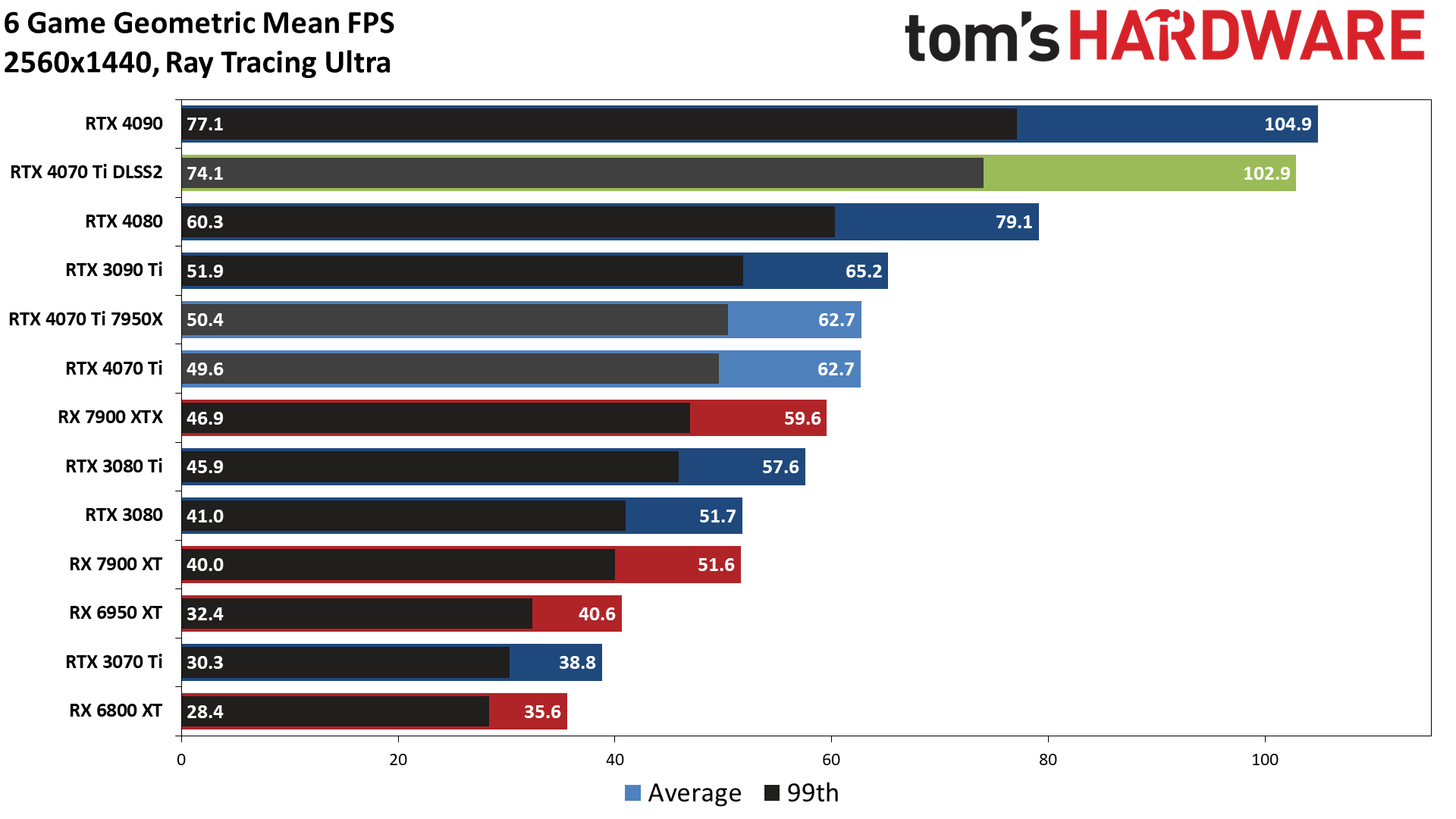
We also found that the RTX 4070 Ti was pretty power efficient, using 265W while looping Metro Exodus. That’s a nice step up from the prior-gen RTX 3070 Ti and from the RTX 3080 and 3080 Ti cards which it beats.
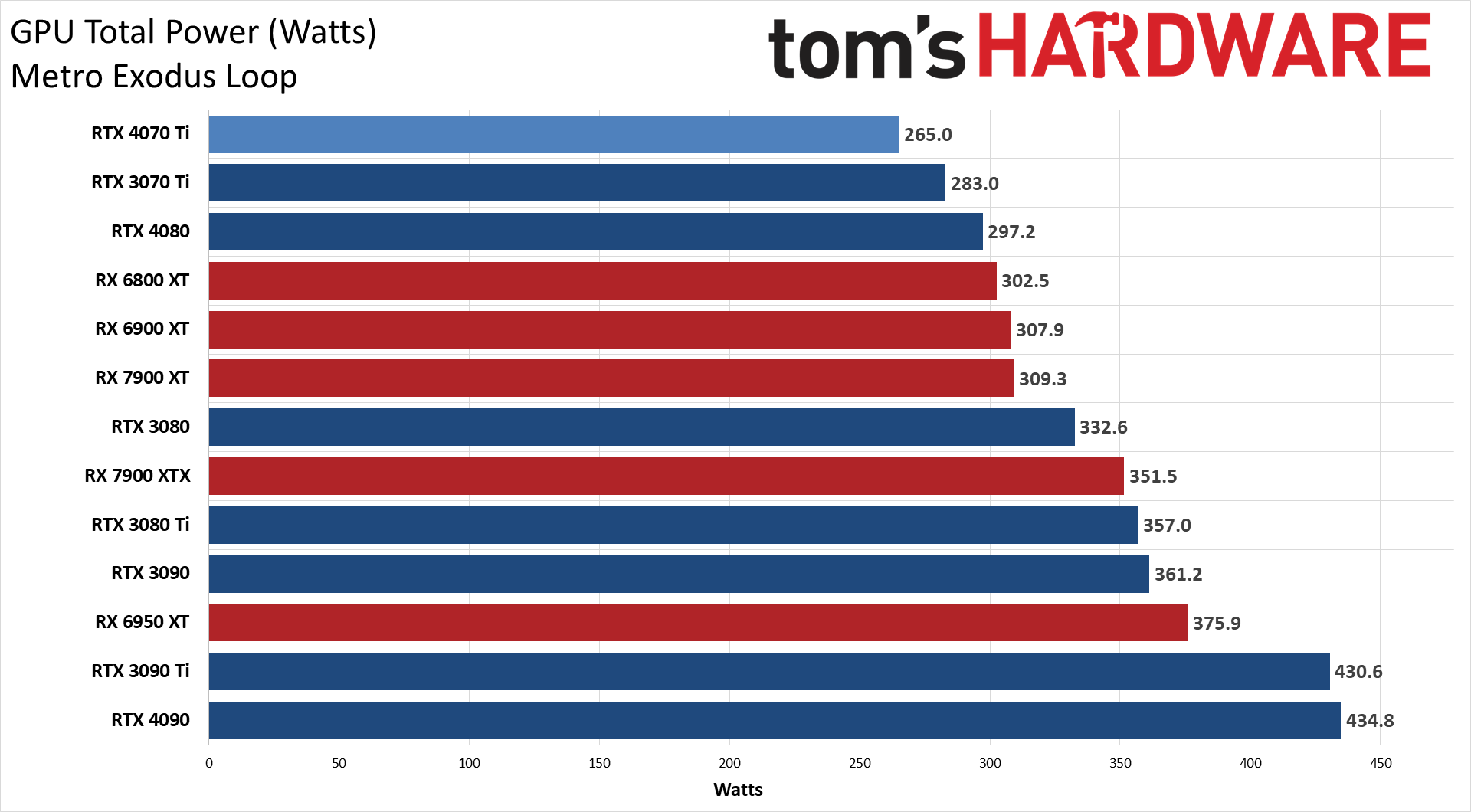
In short, this is a powerful card, but it’s also a pricey one.
Wait. What? HP’s Dragonfly Chromebook Has Better Specs Than its PC Sibling
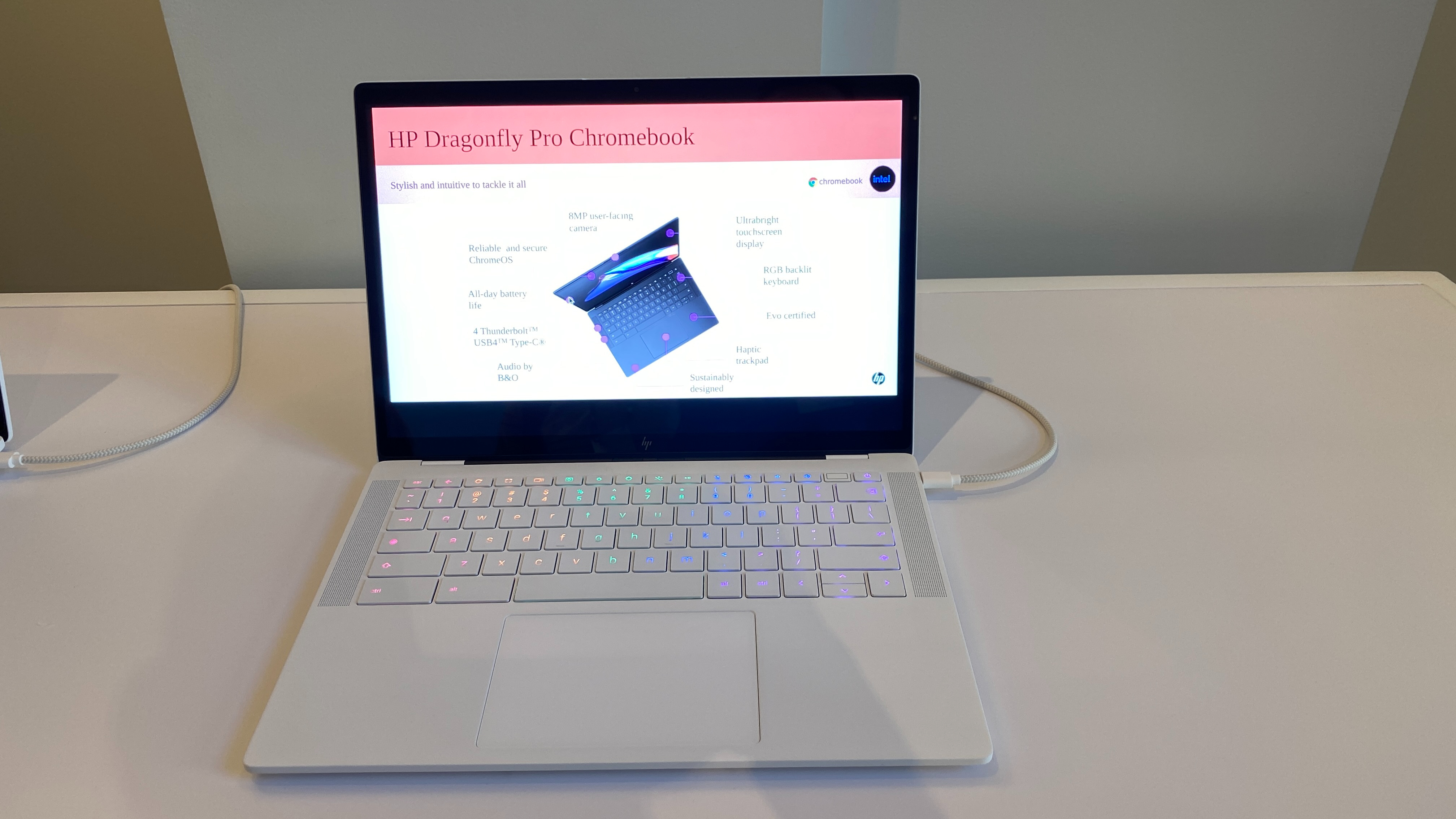
We’ve been big fans of HP’s previous-gen Dragonfly series of laptops. These lightweight laptops have been among the best Ultrabooks, thanks to their bright displays, excellent battery life, wide port selection and good typing experience. For examle, the Dragonfly G3 lasted a full 14 hours on our battery test.
So our interest was piqued when we saw HP’s new set of Dragonfly Pro laptops. As we said in our news post about the Dragonfly Pros, there are two units: a Windows-powered PC that has an AMD processor and an Intel-powered Chromebook.
At a pre-CES press event, the company told us that the laptops are targeted toward freelancers who need to do a lot of remote work. They even talked about how some hypothetical Gen Z workers could make it through their day with these laptops.
What’s weird here is that the Chromebook is way better specked than the Windows one. WIth the Chromebook, you get a 2560 x 1600 display that goes all the way up to 1,200 nits and an 8-MP webcam. However, with the Windows Dragonfly Pro, you get just a 1920 x 1200 that’s 400 nits and a 5-MP camera. The Chromebook has an attractive RGB keyboard, but there’s only a white backlight on the Windows model.
Now, HP has not revealed pricing for these laptops, but I expect that the Chromebook is not going to be cheap. Perhaps, with its mere 256GB SSD, it won’t be as expensive as the Windows Dragonfly Pro, but I’d guess that it’s going to be pricey for a Chromebook.
So the question is: why does the Chromebook get a better screen and webcam, both features that a mobile worker would really want as those 1,200 nits really help if you’re trying to work outdoors or near a window on a sunny day. And that 8-MP webcam should be great for conferencing. And who are the deep-pocketed freelancers that want an expensive Chromebook?
I guess we’ll see.
First PCIe 5.0 SSD Tested: Yeah, It’s Fast
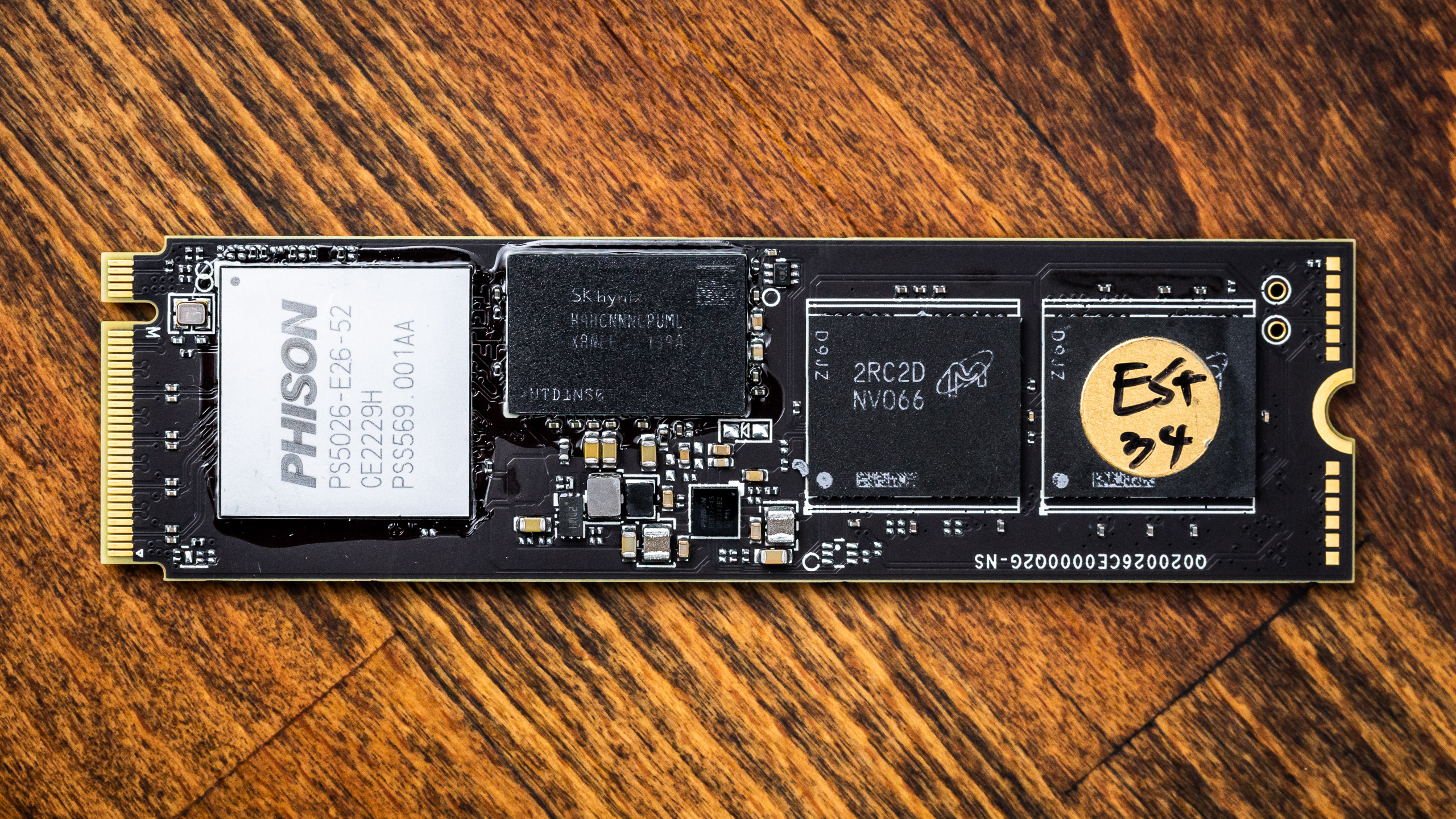
We’ve been waiting what seems like forever for someone to finally come out with a PCIe 5.0 SSD that consumers can buy. While we still don’t have a shipping drive, Phison is showing off its E26 controller, which is going to power SSDs from a lot of OEMs very soon. We got an engineering sample of an SSD with a Phison E26 controller inside and were able to run an extensive array of tests , which we’ve documented in our Phison E26 SSD Preview article.
We tested a 2TB sample which blew away all of the leading PCIe 4.0 drives, including the Samsung 990 Pro (which sits atop our list of the best SSDs) on most becnhmarks. For example, on 3DMark’s SSD performance test for gaming, the E26 sample scored 5,443 to the 990 Pro’s mark of 4,816.
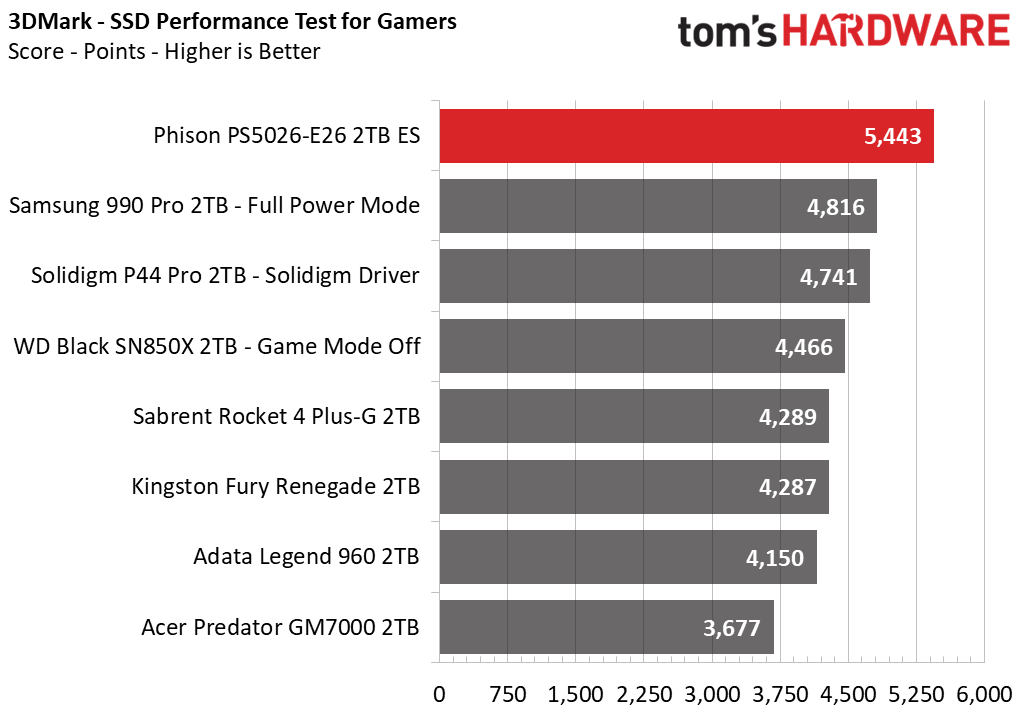
Its peak sequential read with a 1MB QD 8 in Crystal Disk Mark was 10,212, besting Samsung’s drive by more than 50 percent.
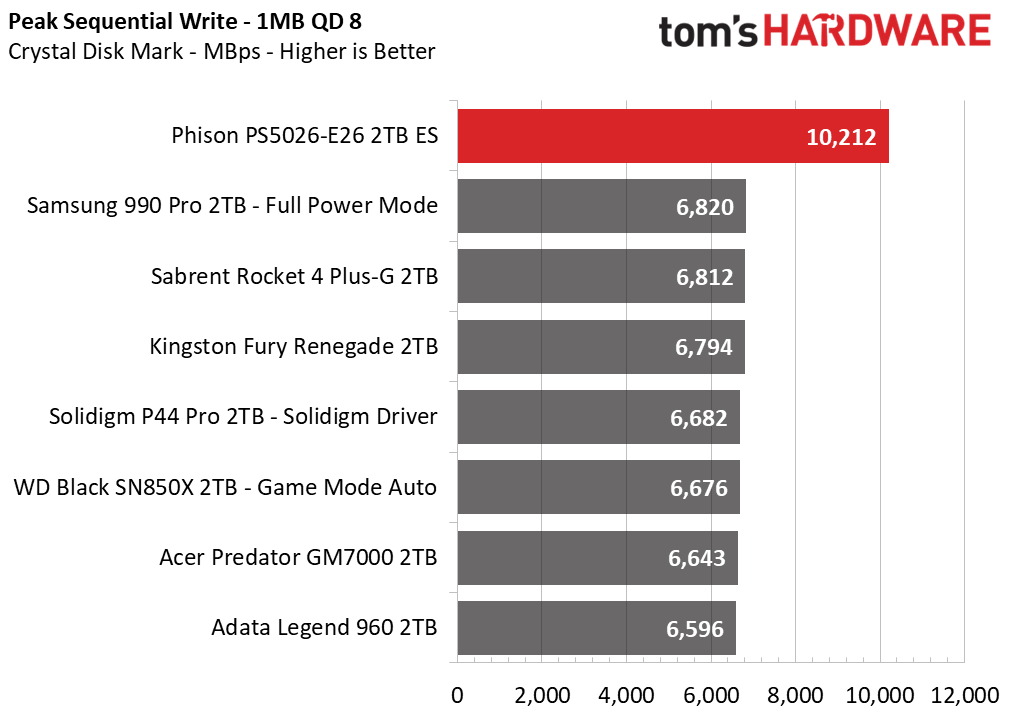
However, results were more muted at the all-important size of 4K QD 1 for reads and writes, where Phison’s sample SSD was actually a few microseconds behind the 990 Pro.
So what does the Phison E26 sample SSD tell us about the future of storage in 2023? We’ll see a lot of PCIe 5.0 drives and their sequential transfer rates will be strong but to really get the benefit of the increased bandwidth, we’ll need games and other apps that use DirectStorage (opens in new tab), a Windows 11 feature that promises much faster loading.
ASRock Collected Enough Rings From First Sonic Motherboard to Make Another One
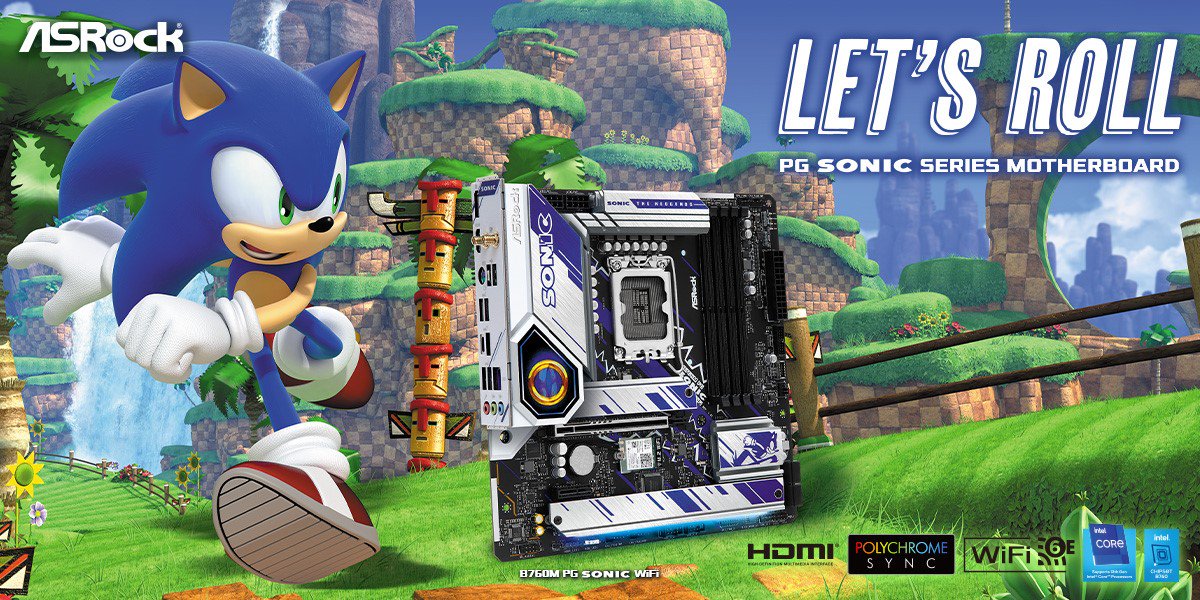
Among ASRock’s B760 motherboards is a special edition Sonic the Hedgehog micro ATX board. This is ASRock’s second Sonic-themed board; The first was a higher-end Z790 option.
The Special Edition B760M PG Sonic WiFi has a heatsink for the VRM, M.2 SSDs and PCH in a Sonic-themed design, which senior editor Andrew Freedman can’t stop talking about in our staff chat. The board is built with six-layer PCB, features Dragon 2.5 Gbit Ethernet and Wi-Fi 6E. There are three M.2 NVMe 4×4 SD slots and four SATA III ports, so plenty of room for storage.
Of course, there’s also Plychrome Sync ARGB lighting, which you can use for blue (to make it more Sonic-y), red (for “& Knuckles” flair) or any other color you want.
In the video above, you can see ASRock’s non-Sonic B760M boards, including the Steel Legend WiFi and Pro RS series.
Asus’s 16-inch Portable Monitor Has a Lot Going for It
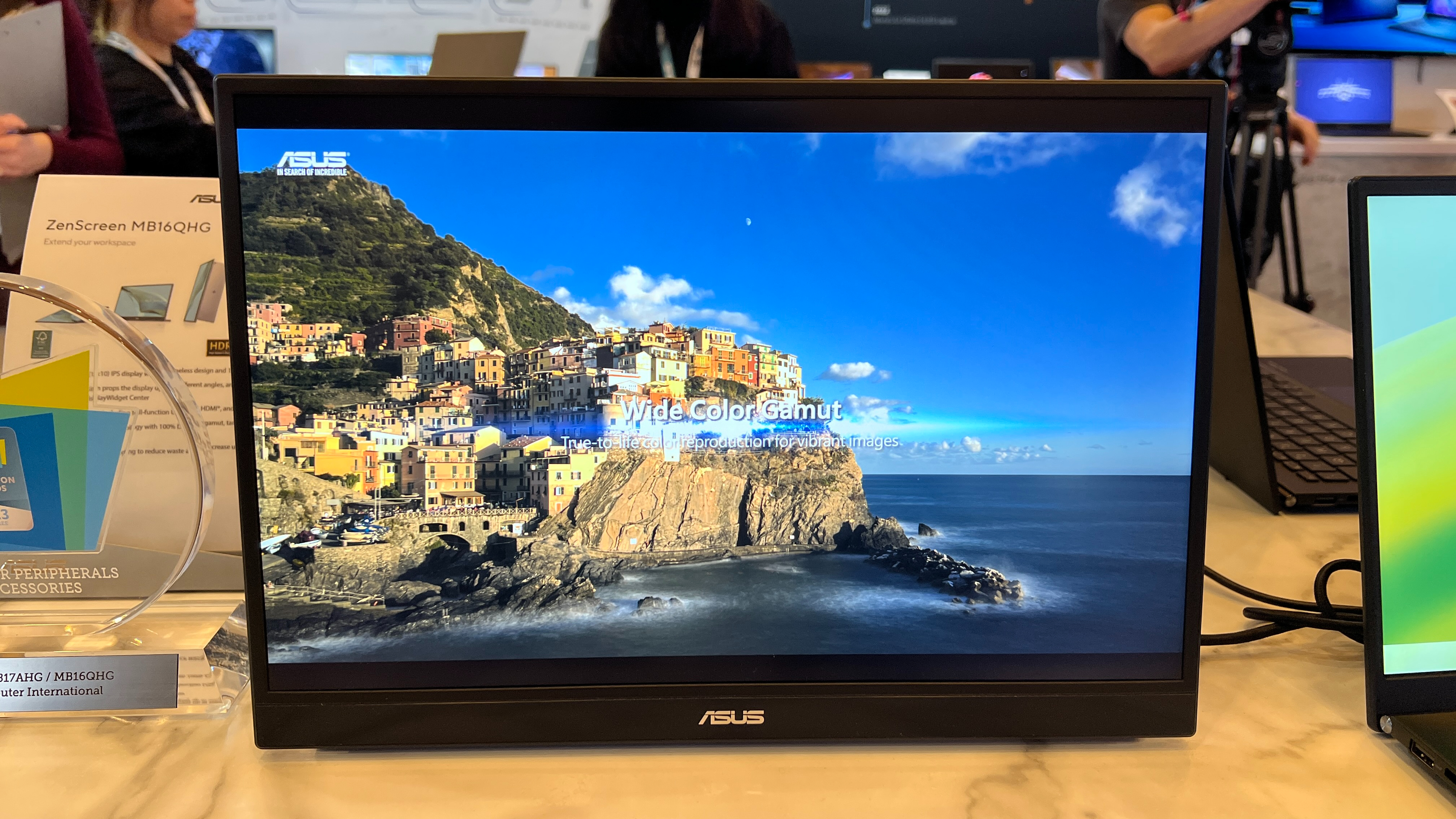
Everyone who travels for work even a little bit should own a portable monitor. It’s really important to have two, three or even six screens on your desk so, at the very least, you should have a second display when you hit the road. We maintain a list of the best portable monitors and we’re constantly testing new models to see which one might belong in your bag.
Today, we got a chance to see Asus’s new MB16QHG monitor, a 16-inch portable display that stands out from the crowd with its 2560 x 1600 resolution, 120 Hz refresh rate and HDR400 support. Oh, and it promises to reproduce a whopping 100 percent of the DCI-P3 color gamut, something most desktop monitors can’t approach.
Senior Editor Sarah Jacobsson Purewal had a chance to see the MB16QHG at Asus’s CES booth where it was showing a video demo reel. She said that the colors were decent, but a little washed out in that particular demo. The built-in, L-Shaped kickstand did a good job of holding the monitor up and, considering that many prior Asus monitors forced you to use a horrible origami case to prop them up, this is a huge step forward for the brand.
Sarah also said that the monitor feels so light that she thought it might easily tip over, but on the other hand, that makes it extremely easy to carry. Asus did list the official weight in its press materials.
If you don’t like the kickstand, the monitor also has a screw thread so you can mount it on a tripod arm. It can connect via HDMI or USB-C, making it a solid choice not just for your laptop but also for using with a Raspberry Pi.
In addition to the MB16QHG, Asus also announced a 17.3-inch portable monitor called the ZenScreen M17AHG which operates at 1920 x 1080 with a 144 Hz fresh rate and also can mount on a tripod. Then there’s the 23.8-inch, 1080p ZenScreen MB249C which is large for a portable screen but weighs just 6.2 pounds (2.8 kg) which is light for what it is.
However, of these three monitors, we’re the most excited by the MB16QHG because of its high resolution, integrated kickstand and wide color gamut. An Asus rep said that the MB16QHG is due out later this year for somewhere between $300 and $4000.
Thermaltake’s Magnetic Fans Let You Swap Blades
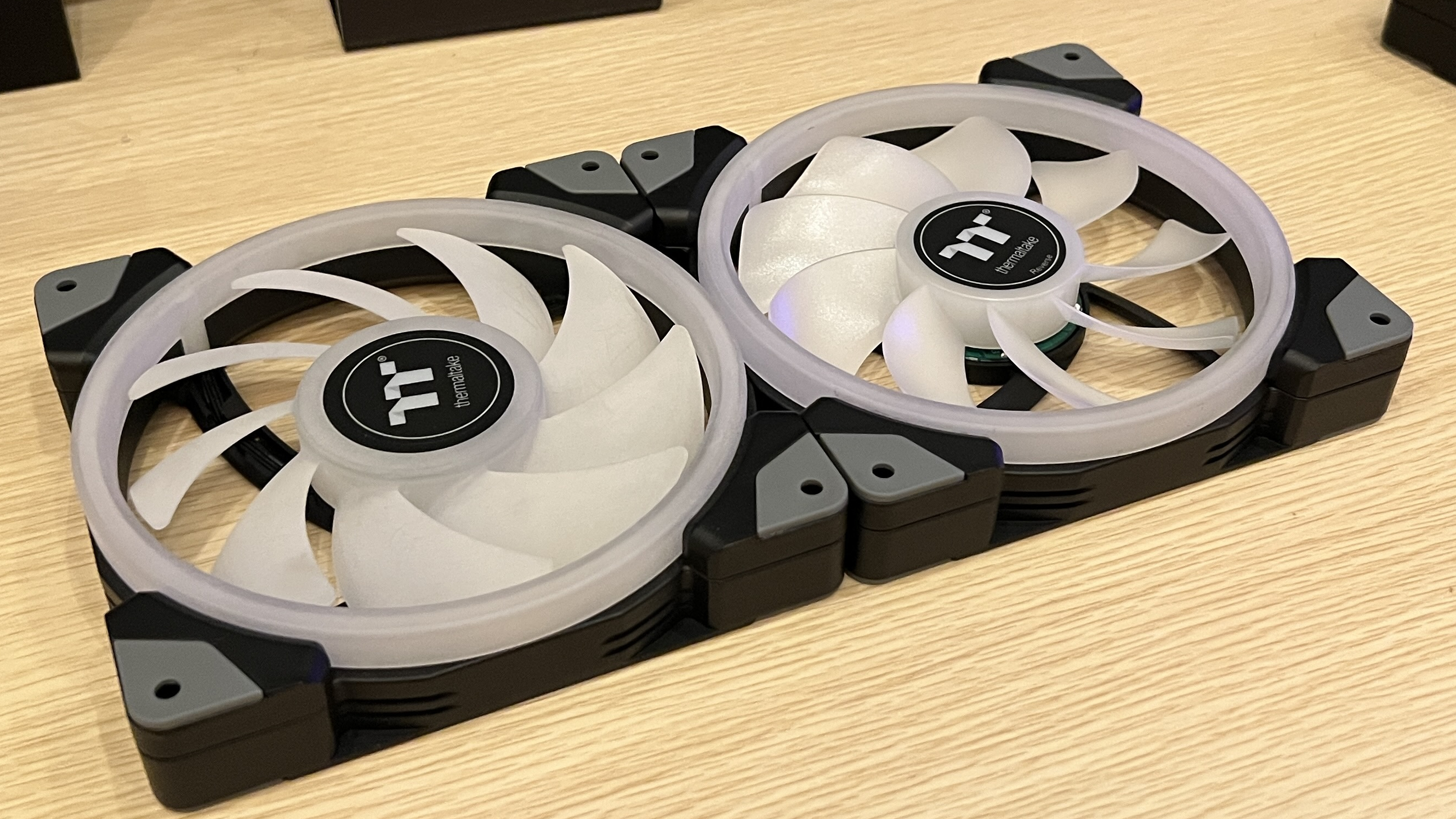
It’s rare that we get excited about a case fan, but Thermaltake’s new Swafan EX12 and EX14 fan sets have gotten our attention. At the company’s CES suite, Senior Editor Sarah Jacobsson Purewal had a chance to examine the magnetic fans which come in sets of three and came away impressed with their design and utility.
Available in February at $109 for a three pack of the 120mm Swafan EX12 or April at $119 for a three pack of the 140mm EX14, the fans snap together magnetically so you only need to run a single cable from your RGB controller or motherboard to control all three.
We’ve seen magnetic, daisy-chainable fans before as we’ve tried out Lian Li’s UNI fan SL120. However, the Swafans have another trick up their sleeves: they come with two sets of blades for each fan: a regular blade and a reverse fan blade. So, if you want to change the airflow direction of a fan, all you need to do is pop out its blade and replace it with the opposite kind.
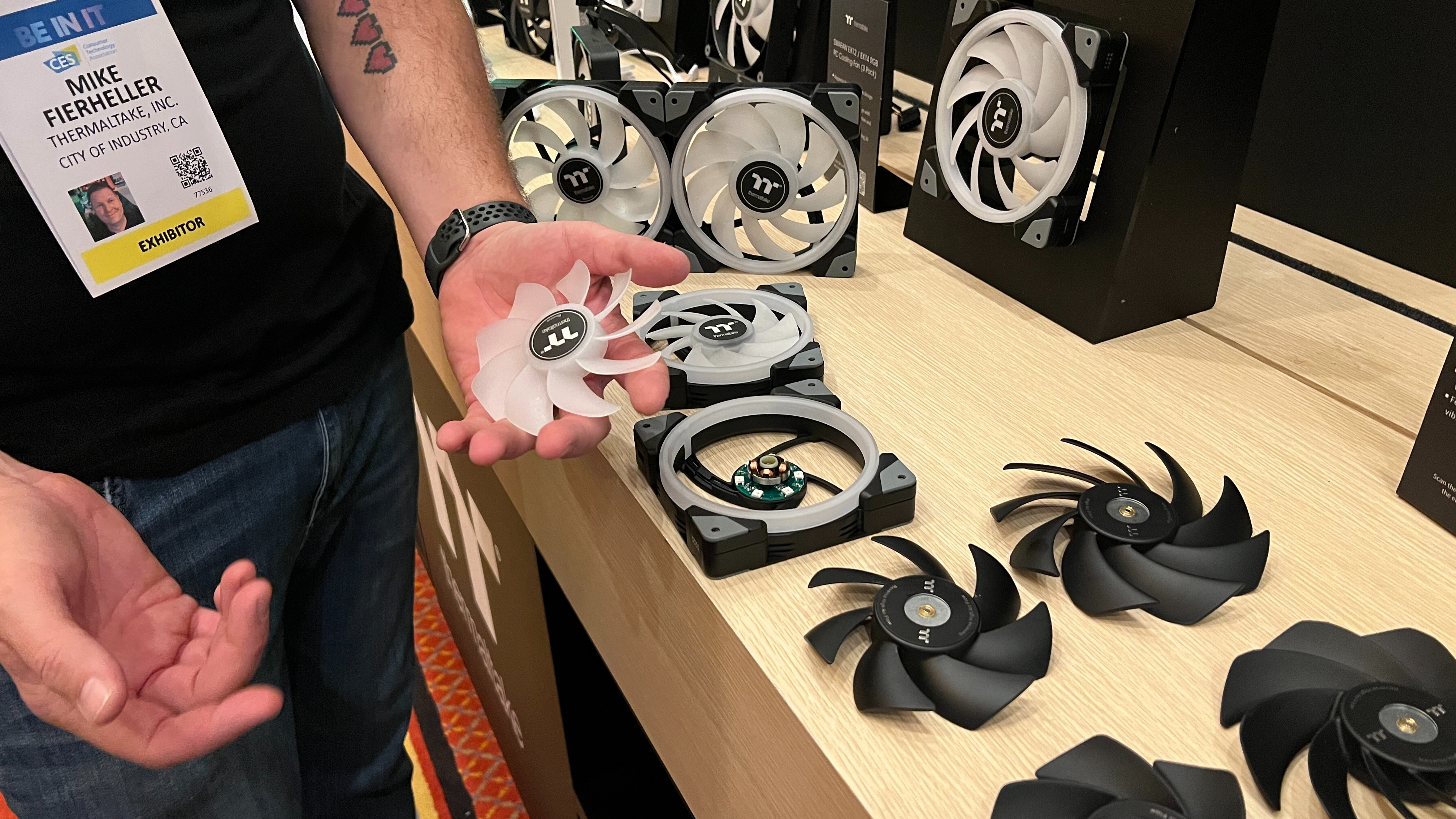
Sarah noted that, in the demo she saw, the blades popped in and out without the need for tools. She also found the magnetic snapping action of the fans as they connect to each other to be really sturdy and strong.
The Swafans each have dual LED rings with 20 addressable RGB lights which you can control via Thermaltake’s TT RGB Plus 2.0 software). The 120mm EX12 promises 56 to 57 CFM of maximum air flow while the 140mm EX14 is rated for 79 to 81 CFM.
Follow AMD’s Press Conference Live

Update: The press conference has ended but our full AMD press conference live blog (opens in new tab) remains if you want to catch up with the events as they happened.
Tonight at 6:30 pm PT, AMD CEO Lisa Su is giving a keynote address, where she is expected to announce a slew of new products, including more AMD Ryzen 7000 series CPUs and perhaps a successor to the Ryzen 5 5800X3D, which is the company’s leading gaming CPU because of its copious 3D V-Cache.
To keep up with all the action, Deputy Managing Editor Paul Alcorn is running a dedicated AMD press conference live blog (opens in new tab). Check it out in order to keep abreast of all of Team Red’s announcements. The conference is also being carried live on YouTube (opens in new tab), but we recommend keeping an eye on our live blog (opens in new tab), which will provide Paul’s expertise and context in real-time.
AMD Launches New CPUs Including the 7950X3D
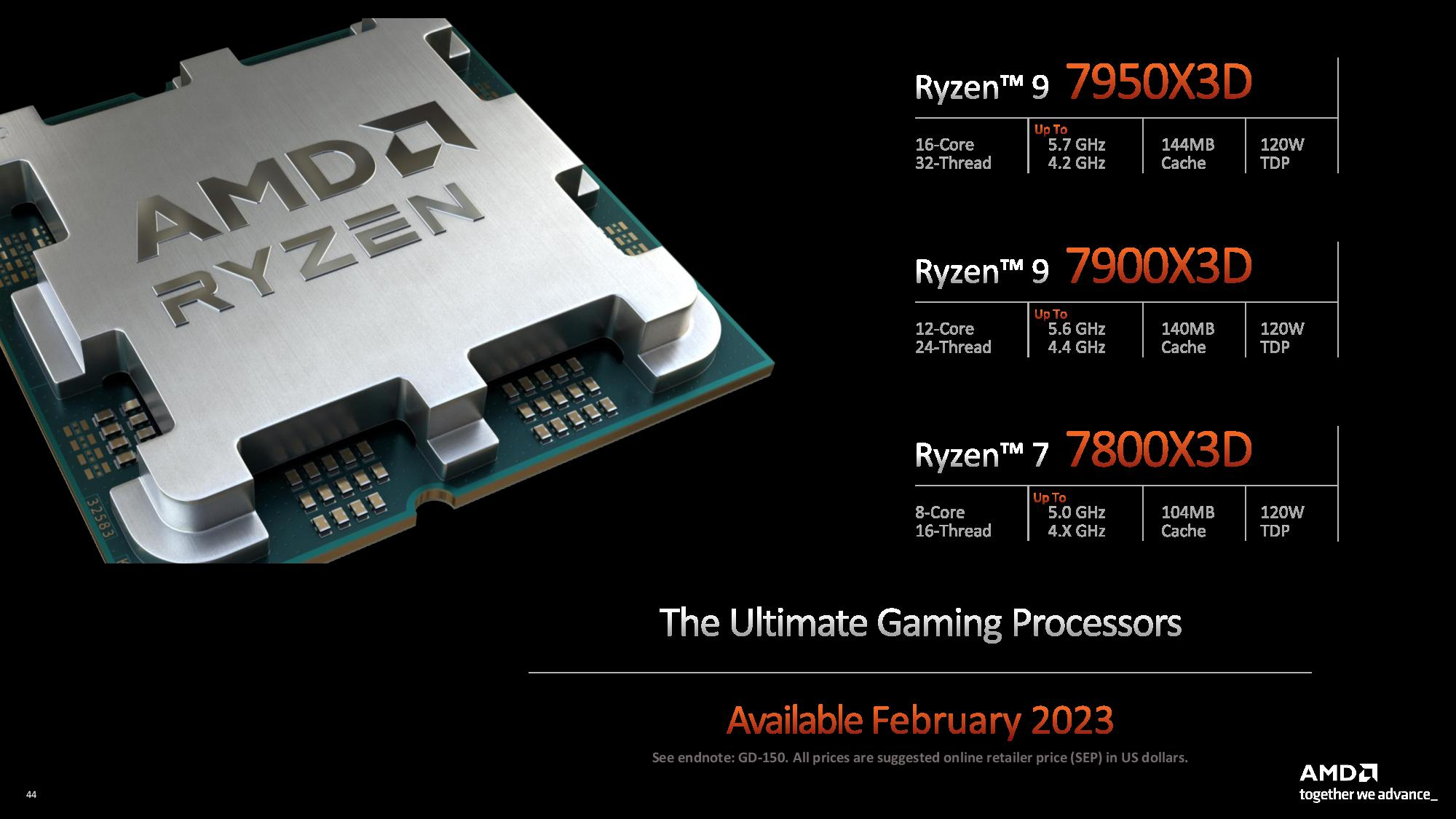
Holy cow! AMD just fired a big shot across bough in its never-ending battle with Intel for desktop CPU dominance. At the company’s press conference, Team Red CEO Lisa Su announced a slew of new mobile and desktop chips, including three CPUs that come loaded with 3D V-Cache: the Ryzen 7 7800X3D, Ryzen 9 7900X3D and Ryzen 9 7950X3D.
These chips have 8, 12 and 16 cores, along with 104, 140 and 144MB of L2 / L3 cache. The top-of-the-line 7950X3D has a boost clock of 5.7 GHz, before overclocking! All of that 3D V-cache is going to make these chips very competitive against the best CPUs for gaming and there’s a good chance that Intel’s 13th Gen Raptor Lake chips, including the Core i9-13900K, take a back seat to AMD.
As Deputy Managing Editor Paul Alcorn notes in his article on the Ryzen 7000X3D chips, AMD is claiming that they the 7950X3D beats the 13900K by 13 to 24 percent in 1080p gaming.
The company also announced a slew of new laptop chips, ranging from the budget-oriented 7020 series to the ultraportable 7040 series and the gaming-centered 7045 series.

We’ve got all the details on AMD’s mobile CPUs in our article on AMD’s new mobile chips. The company is also taking the mobile graphics fight to Nvidia with its new Radeon RX 7600M XT (opens in new tab), which the company claims is faster than a desktop RTX 3060 card.
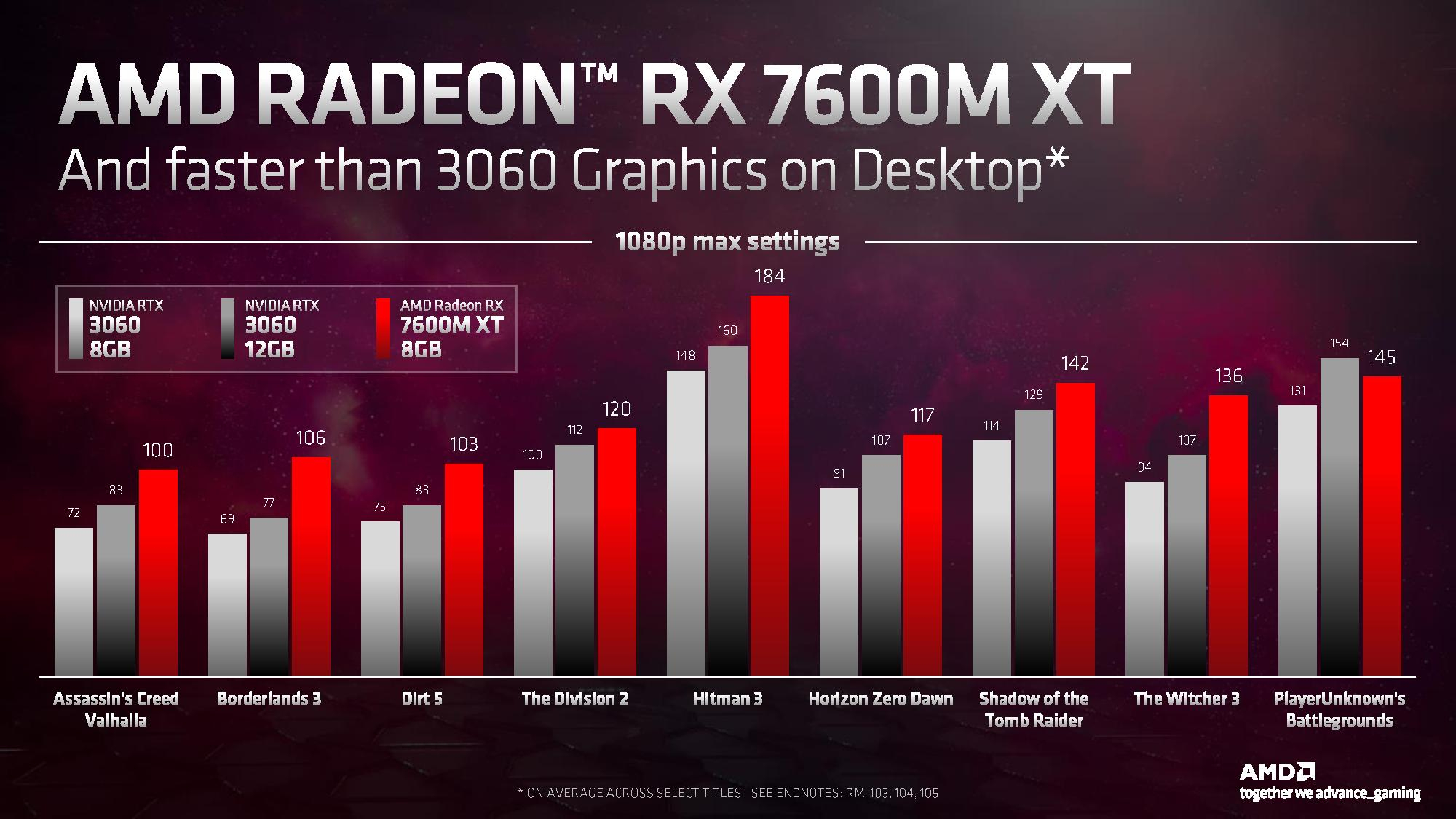
We’ll have to see how all of these chips stack up to the competition when we get to review them and systems based on them later this year.
Viewsonic’s Portable 4K Monitor is Sharp, Colorful and Stylish
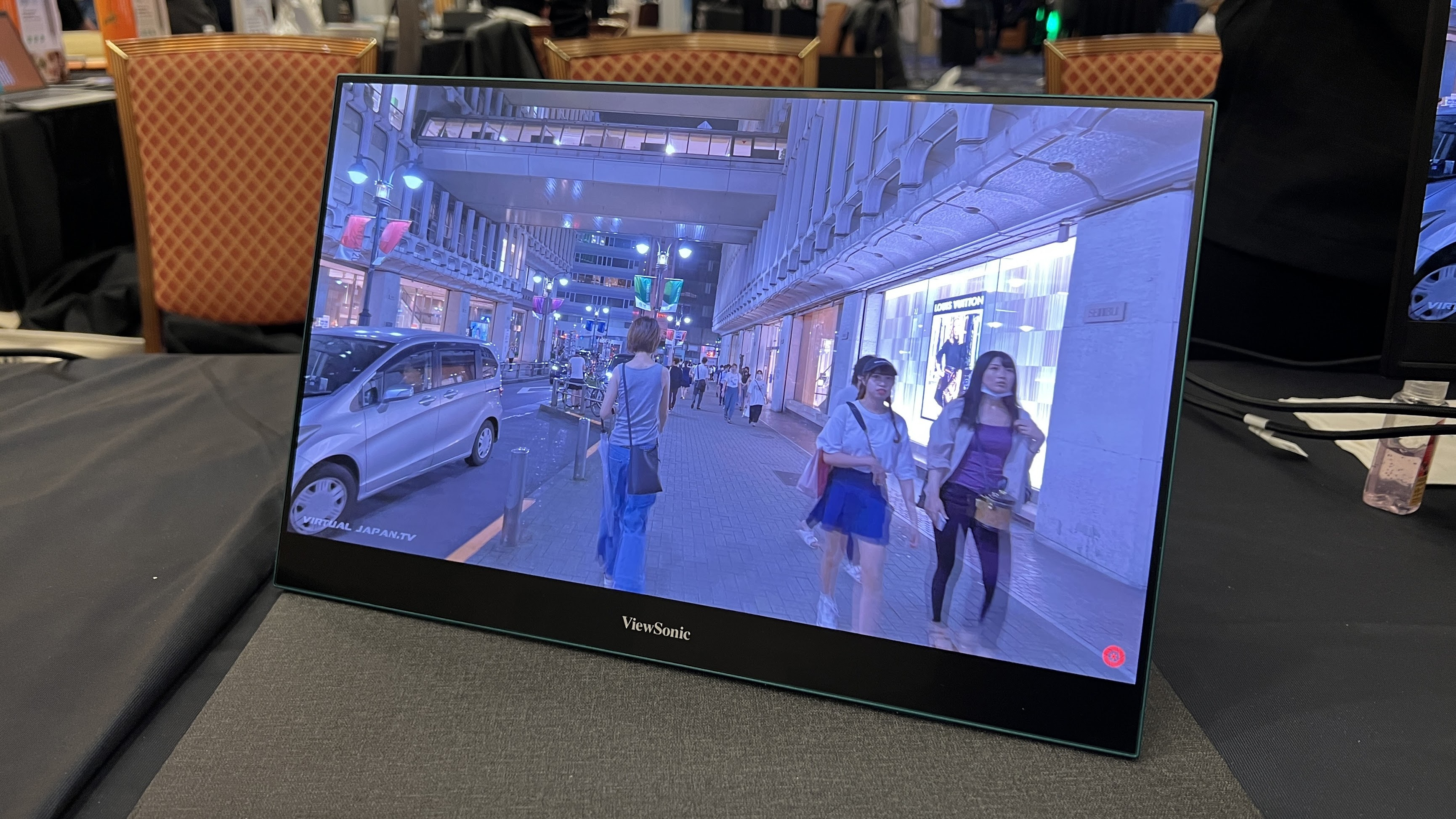
This has already been a great CES for portable monitor debuts and Viewsonic has just made it that much better. Tonight at the Pepcom event (a night-time show where companies show off their wares for press), the screen company showed off its upcoming VX16-OLED, a 15.6-inch, portable monitor that outputs at 4K with OLED color, 400 nits of brightness and 100 percent coverage of the DCI-P3 color gamut.
Senior Editor Sarah Jacobsson Purewal got a close look at the Viewsonic VX16-OLED while it was playing a walking tour video of Shibuya, a neighborhood in Tokyo. She said the images were crisp and mostly colorful, but she was even more impressed with the monitor’s lightweight and attractive design.
The entire back surface is a metallic teal color, which is a really sleek look that you don’t get on other portable monitors. More importantly, there’s a very sturdy built-in kickstand to keep it propped up. A Viewsonic rep told her that the monitor weighs less than 2 pounds and is less than an inch thick when the kickstand is folded in for travel.
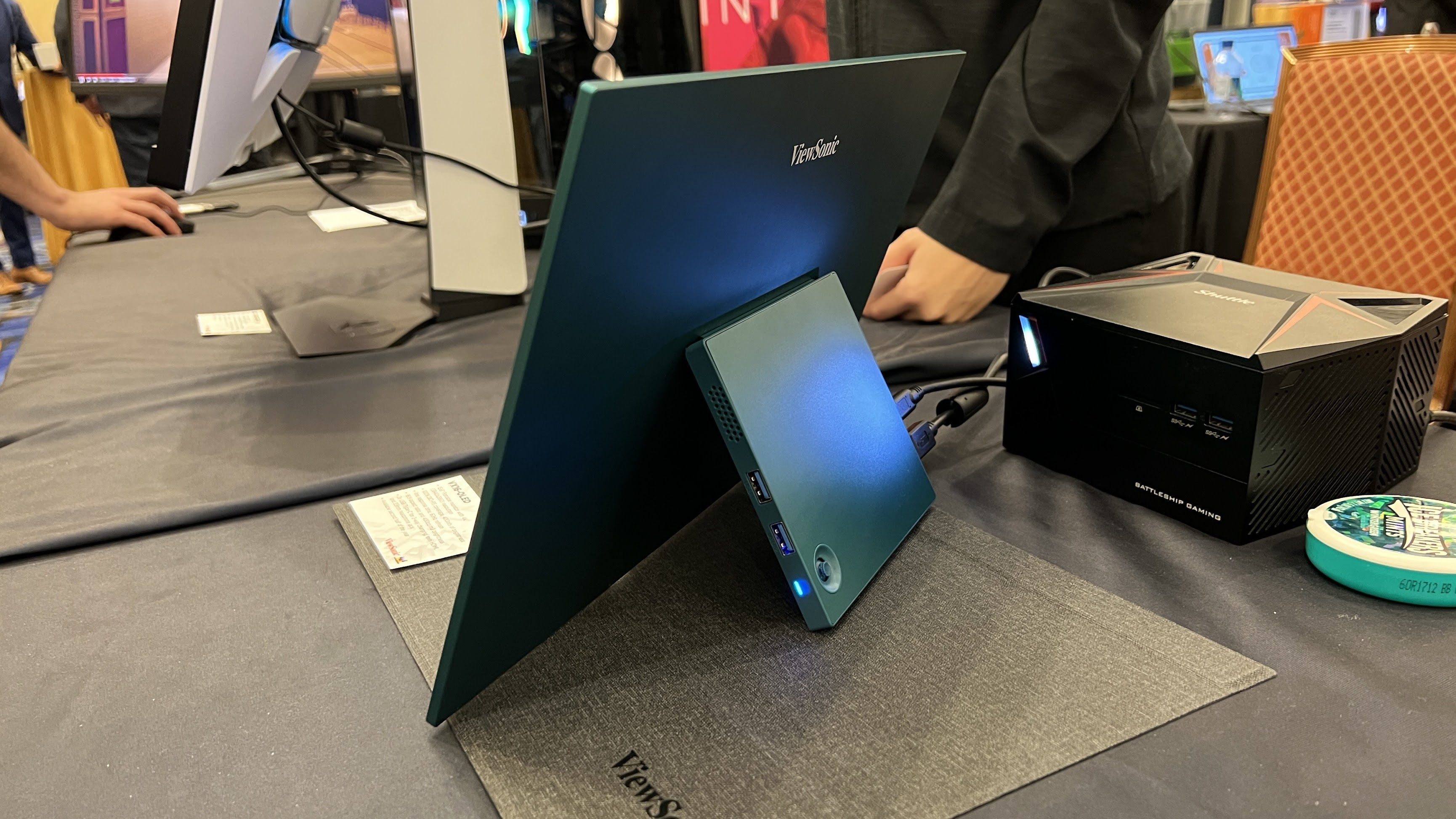
The VX16-OLED is due out in the second half of 2023. There’s no official price yet, but a rep told Sarah that the company is hoping to keep it to less than $400.
Finally, Some Gaming Laptops That Aren’t Black, Gray or White
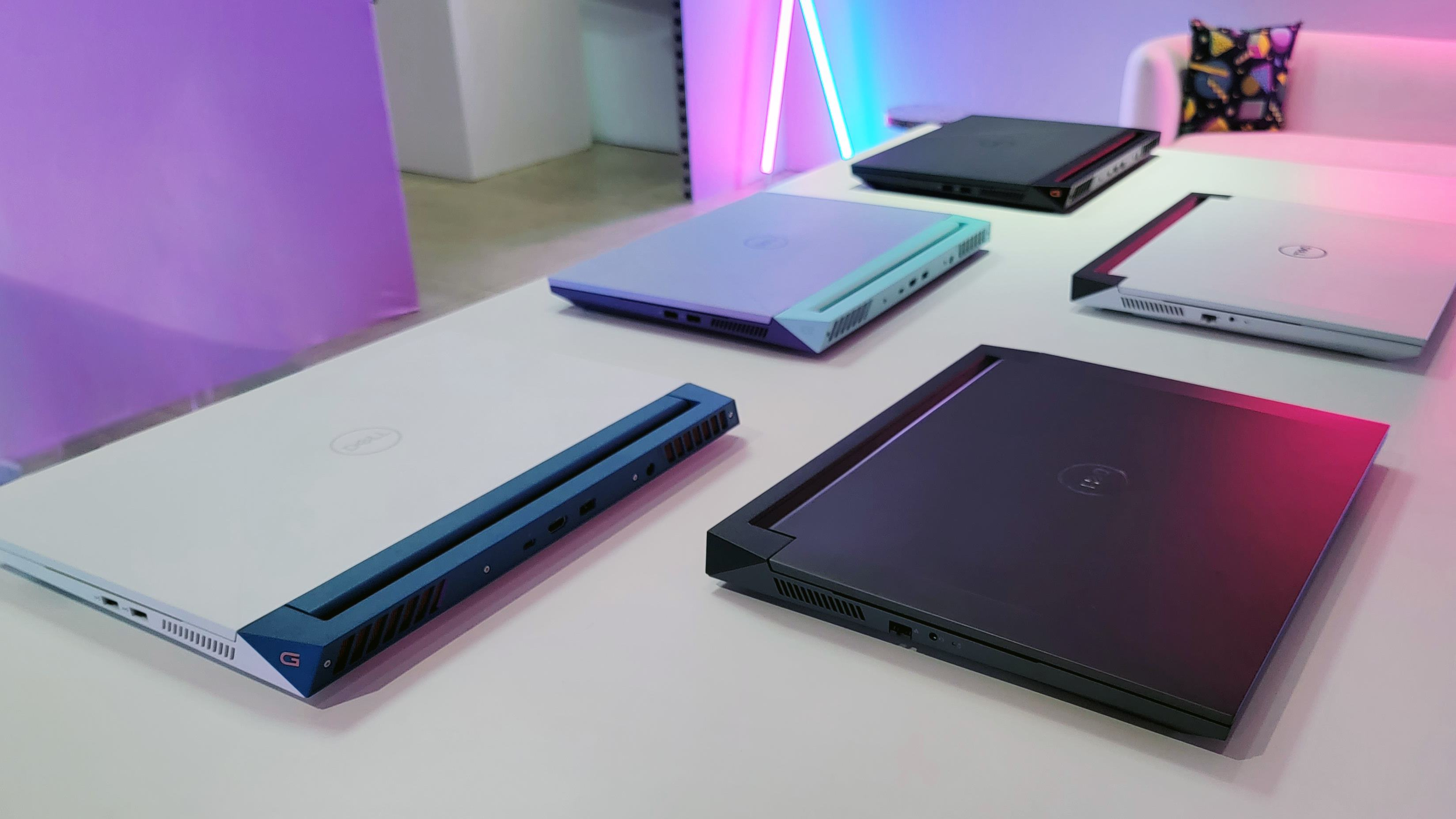
As we reported earlier this week, Dell is refreshing its G15 budget gaming laptops (opens in new tab) with a slew of bold colorways. While the laptop chassis shape is basically the same as on the 2022 model, you will now be able to get the laptop in Pop Purple with a Neo Mint back and Quantum White with a Deep Space Blue back. And for anyone who likes boring, there’s Dark Shadow Gray with a black back.
We had a chance to see these new G15s at Dell’s pre-CES demo suite and we really liked the bold “Pop Purple” on the first one and the tealish “Deep Space Blue” on the second one. You just don’t see color combos like these on most laptops, because companies are afraid that they’re going to make a whole lot of units that nobody wants.
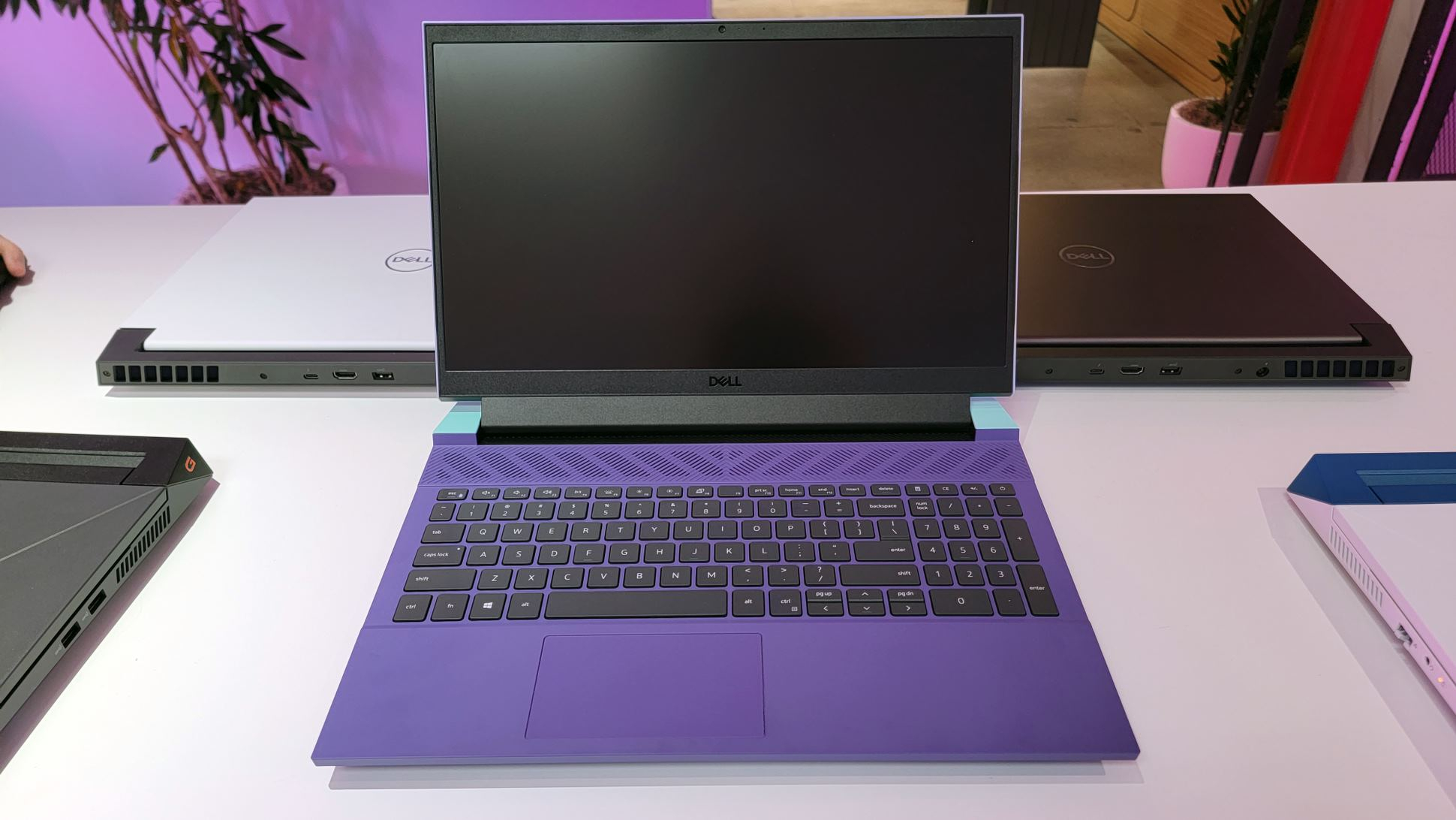
We’ve also heard off the record from many OEMs over the years who have told us that third-party sellers who move a lot of product are too risk-averse to stock colorful laptops. “People say they want colors, but then choose black or white,” is the kind of thing we often hear in conversation.
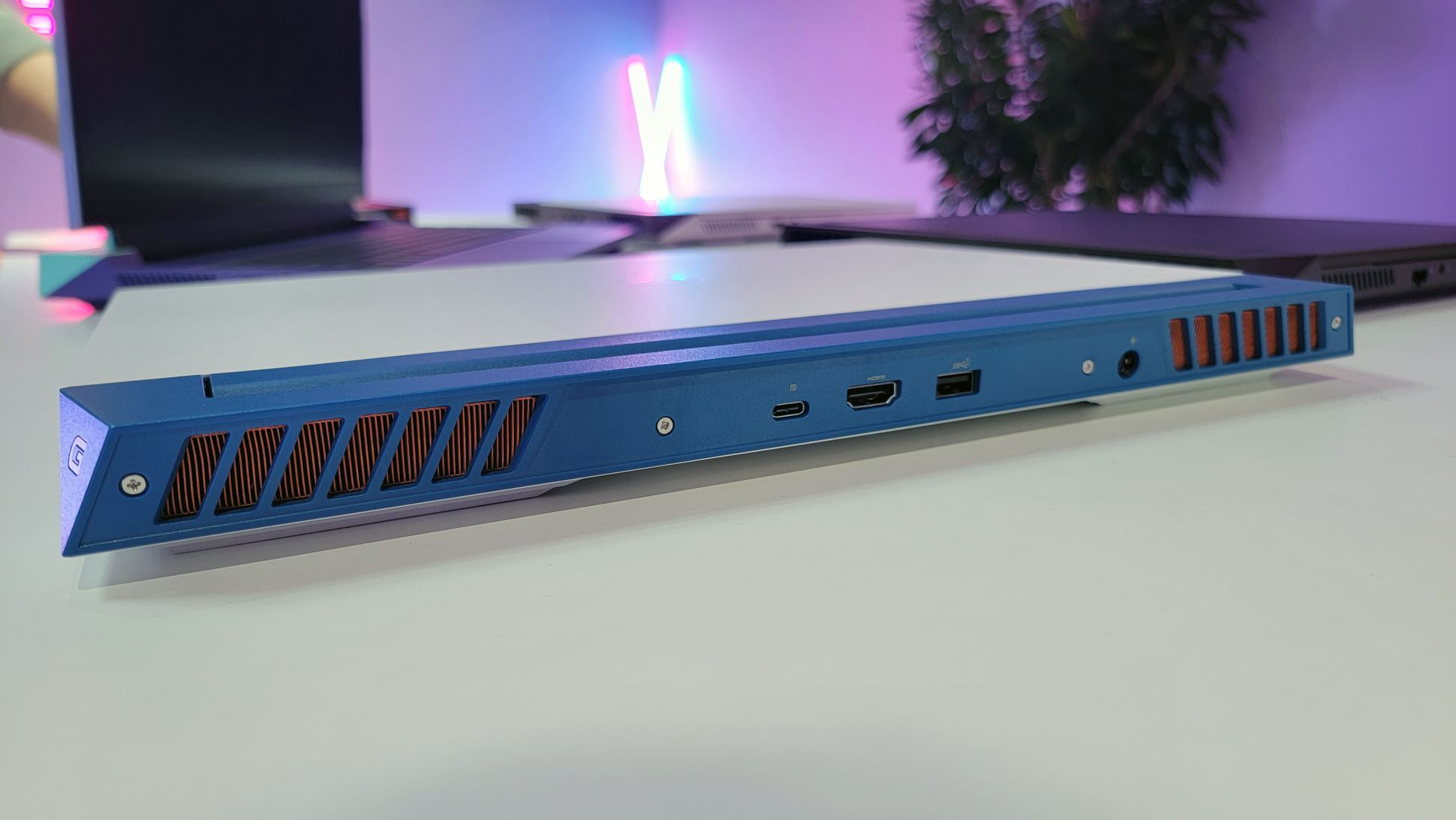
So kudos to Dell for taking a risk. Apart from the colorful chassis, the G15 will be available with Intel 13th Gen CPUs that go up to a Core i9-13900HX, Nvidia RTX graphics, a choice of 120 or 165 Hz 1080p panels, up to 32GB of RAM and a variety of storage options. No word yet on pricing or availability.
Plugable’s New Docking Station is Made for Multimonitor Paradise
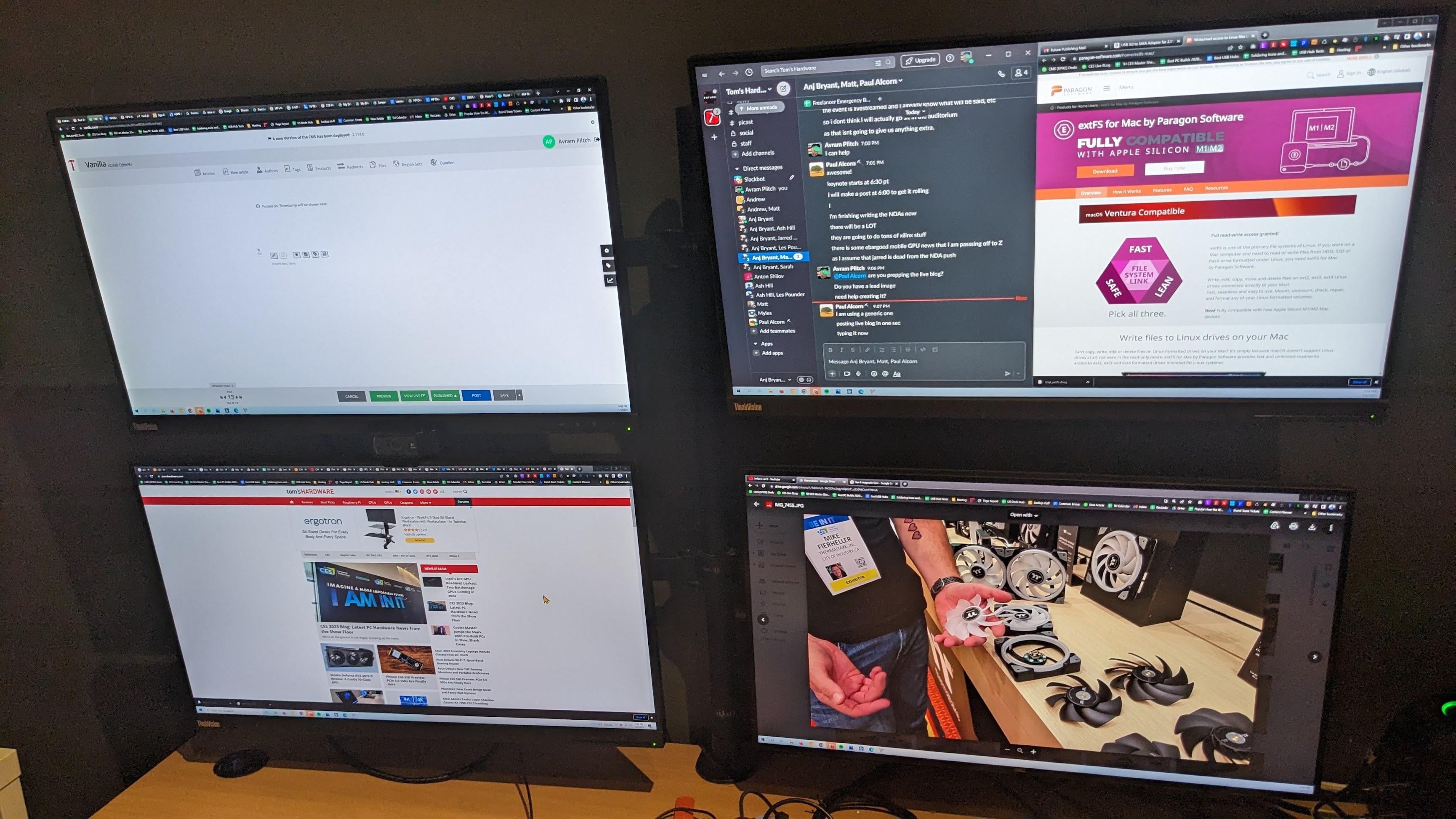
As I type this post, I am staring at my lower left monitor, but it’s just one of my four, 27-inch 4K displays. Right my displays are hooked up to my desktop PC, but if I want to attach them to my laptop, a ThinkPad X1 Carbon with a Thunderbolt port, my options aren’t great. There just aren’t a ton of docking stations out there that let you attach your ultraportable laptop to a quad-display setup.
Enter Plugable’s brand new TBT4-UDZ, which made its debut yesterday at CES. Senior Editor Sarah Jacobsson Purewal got to look at this attractive, aluminum docking station, which has two HDMI and two DisplayPort connections that can all be used together, each at up to 4K 60 Hz. The dock uses Thunderbolt 4, though Thunderbolt 3, Thunderbolt 4 and USB 4 are cross-compatible so it should work with laptops that support those other standards as well.
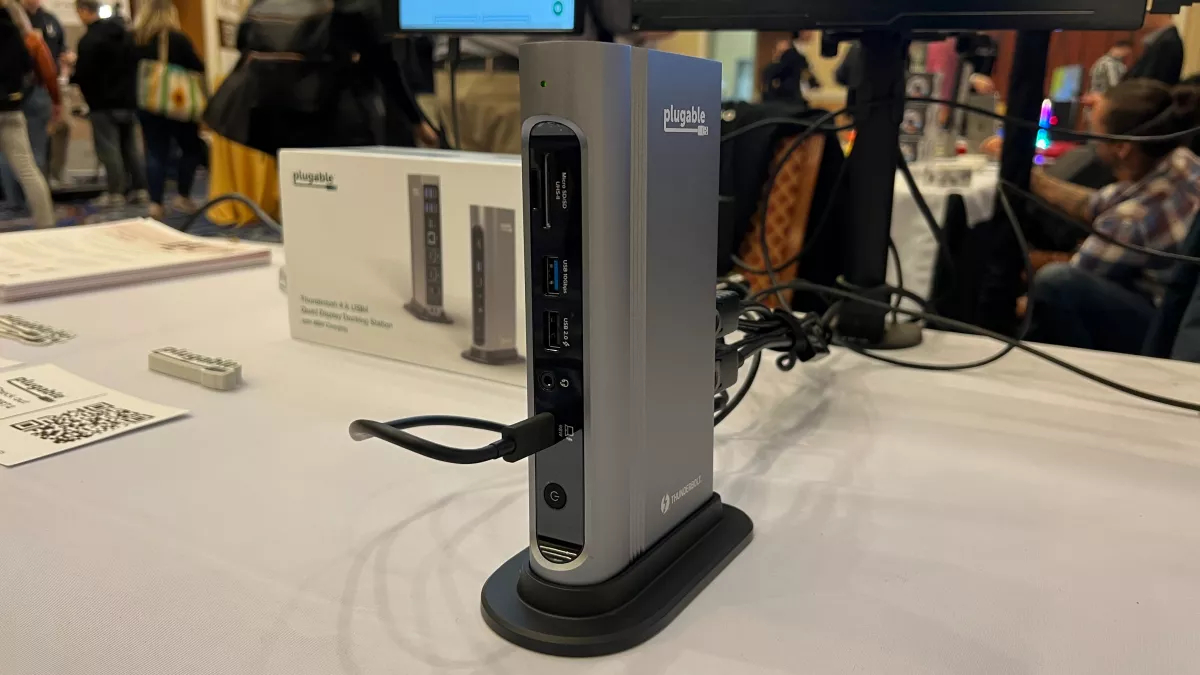
In addition to its four-monitor support, the $299 Plugable TBT4-UDZ has six USB Type-A ports, two of which can operate at up to 10 Gbps (USB 3.2 Gen 2) and it has a USB-C 10 Gbps output port, a 2.5 Gbps Ethernet connection and both SD and microSD card readers.
If you’ve got a quad-monitor set up (and if not, you should), this sounds like a very compelling option. The TBT4-UDZ is up for pre-order on Amazon right now (opens in new tab) and will be shipping in a couple of weeks.
Our Day Today: MSI, Gigabyte, Cooler Master, and More

Believe it or not, this is the first official day of CES. The show floor is open now and all the regular attendees are getting their first looks at the booths and products. If you’ve been following our CES 2023 coverage, you know that CES press events started on Tuesday so, for us, this is actually day three.
Here are some of the companies we expect to meet with today:
- MSI
- Gigabyte
- Cooler Master
- InWin
- Hyte
- Deep Cool
- Frore
We also expect to be combing the exhibits at Showstoppers, a night-time press event at the Bellagio where dozens of smaller exhibitors have booths. We’ll be reporting on anything we find interesting from any of these vendors. So stay tuned.
First PCIe 5.0 Laptop Shows 12,300 MBps Reads
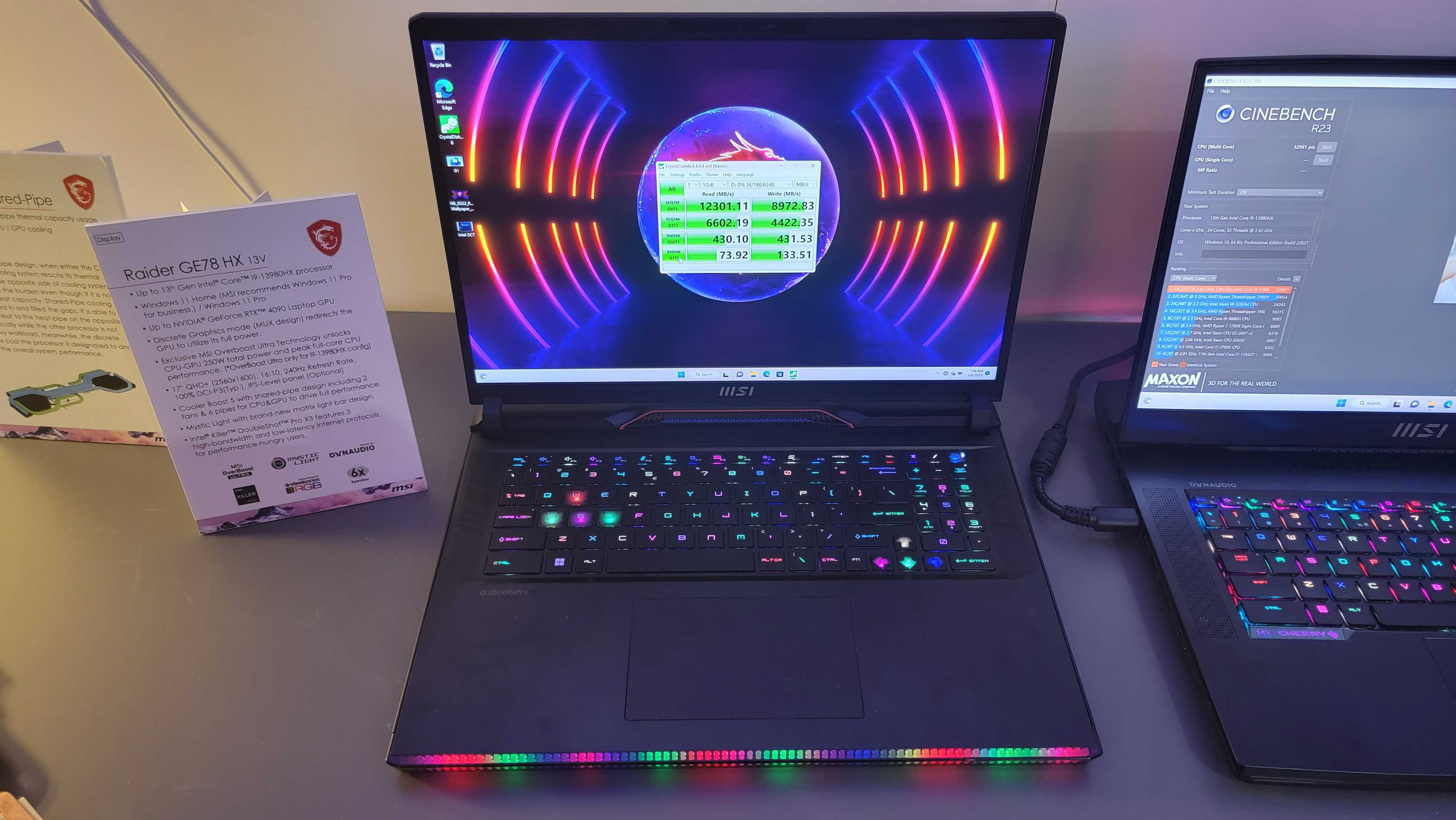
Breaking news from MSI’s CES suite . . . We’ve seen the first laptop with a PCIe 5.0 SSD and it’s the Raider GE78 HX. The company ran Crystal Disk Mark, showing sequential read speeds of 12,301 MBps and write speeds of 8,972 MBps. We’ve learned that in its booth, MSI is using an MSI Spatium 570 Pro.
We’re doing a more detailed write up shortly.
The Raider is one of MSI’s flagship notebooks at CES, and will come in both a 16-inch and 17-inch size. It also has a 16:10 display, support for the latest chips from Nvidia and Intel.
The Raider GE68HX will start at $2,299 with an i9, RTX 4060, 16GB of RAM and 1TB SSD, and go up to $2,6999 with an RTX 4070, 32GB of RAM and a 2TB SSD. The GE78HX will begin at $2,999 with an i9 and RTX 4080, and to pout with an i9 and RTX 4090 at $3,999. It’s expected in the middle of February.
MSI’s 49-inch Super Ultra-Wide Curved Gaming Monitor is Larger Than Life
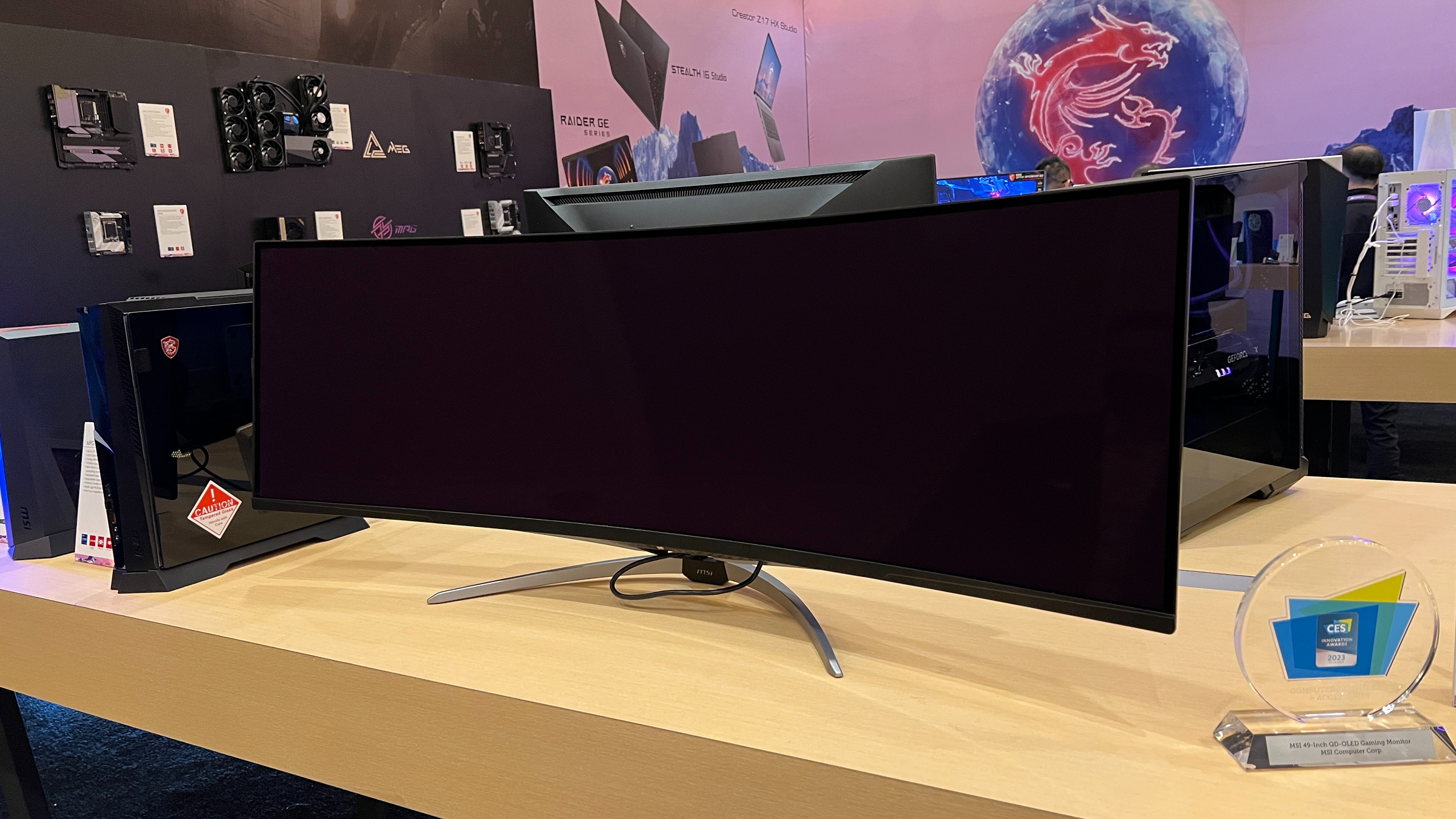
MSI first teased its “Project 491C” super ultra-wide curved gaming monitor back in late November and made it a point to state that it would show up at CES 2023. Well, the 491C made an appearance at CES in prototype form, and our Senior Editor Sarah Jacobsson Purewal was able to see it up close.
Unfortunately, the prototype monitor had a few teething issues, as shown in the image below. With that said, the 491C will be an absolute beast when it goes on sale. The massive monitor features a 49-inch 5120 x 1440 resolution panel boasting a 0.1 ms GtG response time and a lofty 240Hz refresh rate. In addition, the 491C uses a Quantum Dot OLED (QD-OLED) panel, which should deliver excellent contrast.
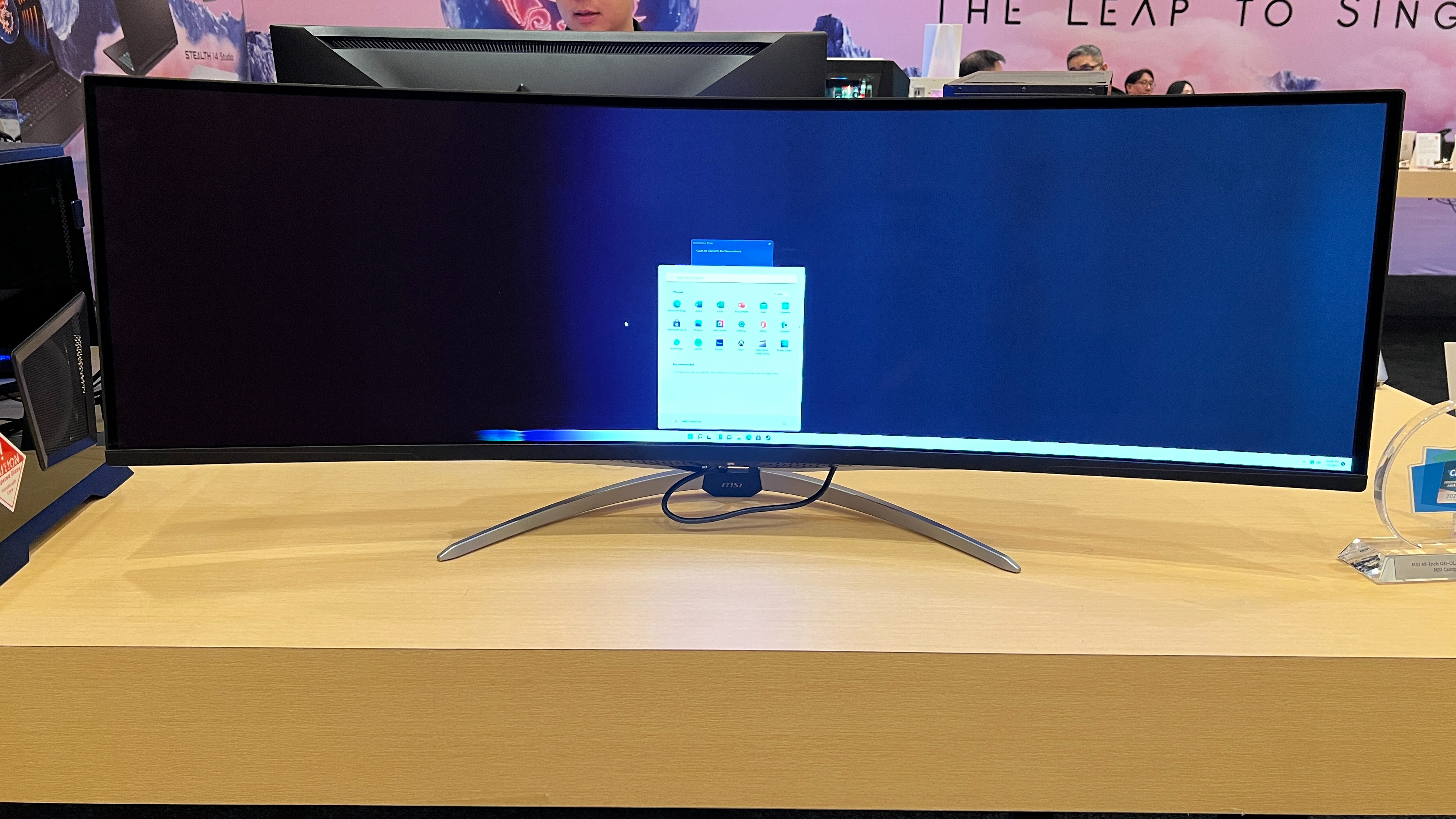
MSI says that the 491C is DisplayHDR True Black 500 certified and can hit a peak brightness of 1000 nits. As for connectivity, there are two HDMI 2.1, one DisplayPort, one USB-C (DisplayPort Alt-Mode) with Power Delivery 65-watt support.
Hopefully when we swing back by the MSI both, the 491C will be in a fully-functional state.
PCIe 5.0 SSDs Finally Appear From MSI, Gigabyte

They’re here! CPUs and motherboards that supported PCIe 5.0 go all the way back to 2021 at the debut of Intel 12th Gen “Alder Lake” processors. However, it’s 2023 and consumers still can’t buy a PCIe 5.0 SSD. Today, though, we’re getting our first look at PCIe 5.0 SSDs that you will be able to buy later this year.
First at MSI’s CES suite, we got a chance to see the MSI Spatium M570 Pro and MSI Spatium M570. Due out later this year, these drives are available in 1, 2 or 4TB capacities and the Pro model promises up to 12,000 MBps reads and 10,000 MBps writes. MSI even had CrystalDiskMark benchmarks running which showed the M570 Spatium Pro hitting and even exceeding these numbers.
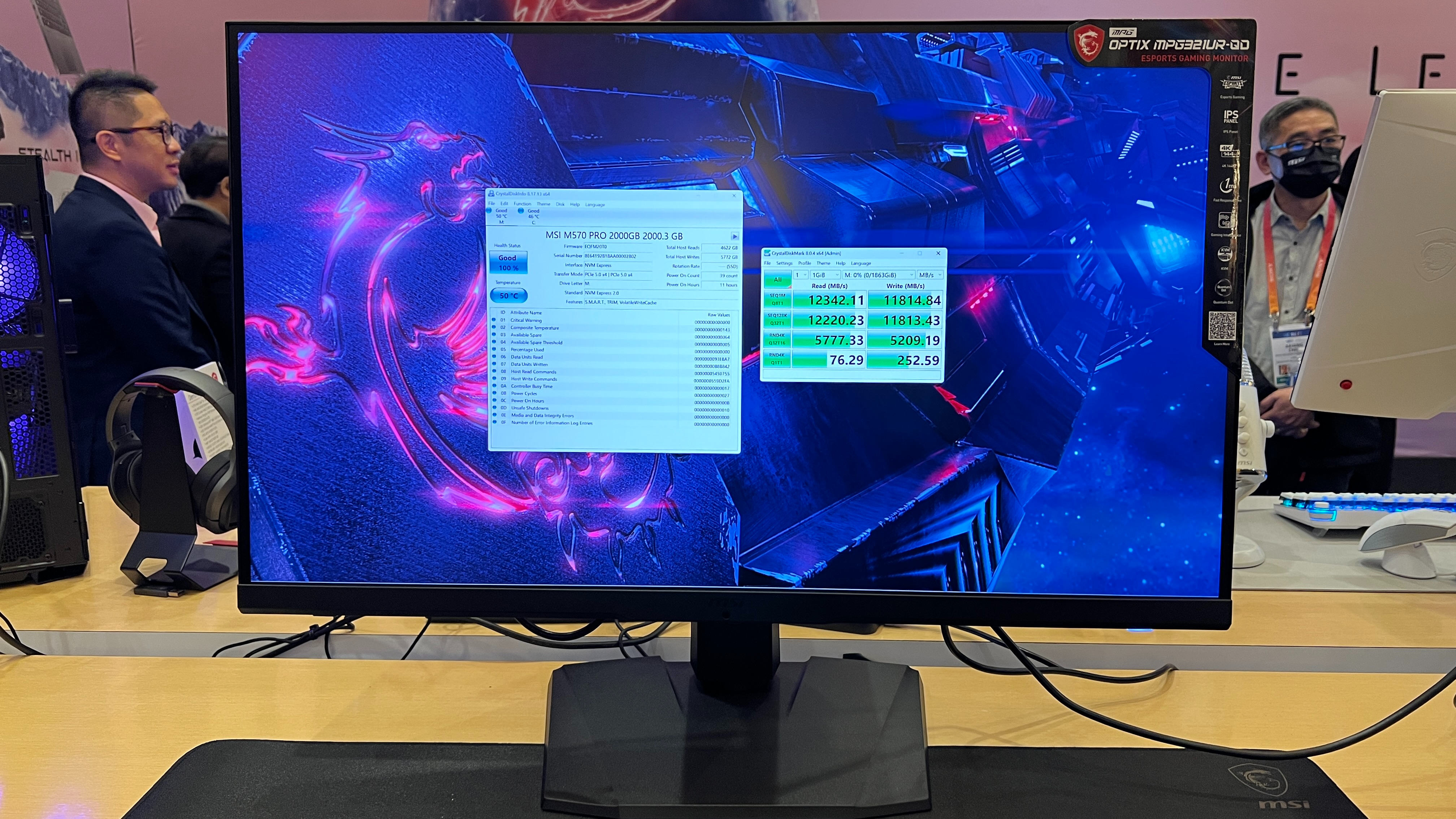
But wait. There’s more. At Gigabyte’s CES suite, the company showed us its upcoming Aorus Gen5 10000 SSD, which uses the same Phison M26 controller as the MSI drives and, like the Spatium M570 Pro, promises 12,000 and 10,000 MBps reads and writes.
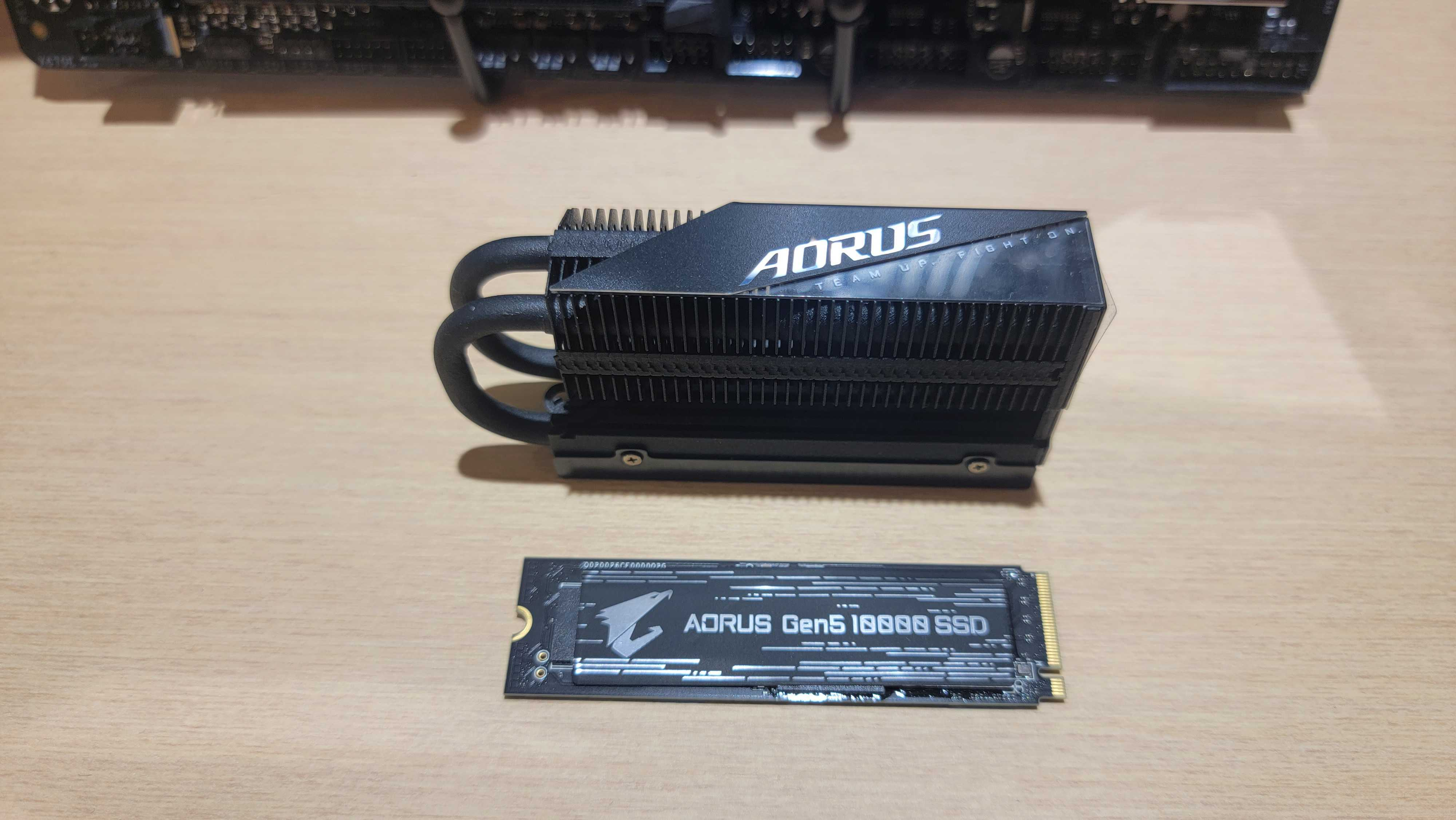
So where does this leave us? It seems like SSDs based on the Phison E26 controller, which we benchmarked yesterday, are going to be everywhere this spring and on display at CES. There’s no pricing yet for any of these drives, but we expect them to cost more than the PCIe 4.0 drives which dominate our list of the best SSDs. You’ll even find the PCIe 5.0 drives in some MSI laptops (opens in new tab).
MSI’s RadiX BE22000 Turbo Wi-Fi 7 Router Comes With Auto-Rotating Antenna

We’ve seen some rather crazy-looking routers over the years, including the recent eight-legged antennae Asus ROG Rapture GT-BE98 and RT-BE96U Wi-Fi 7 routers. However, MSI is drawing a lot of attention with something we rarely see on wireless routers via its new RadiX BE22000 Turbo: motorized antennae.
The RadiX BE22000 Turbo has four antenna blades that sprout from its base. However, according to MSI, these antennae can dynamically detect the location of the client connecting to the router and “change the antenna pattern for [the] best performance.” Unfortunately, MSI didn’t elaborate on what criteria determines which wireless clients get preferential treatment regarding antenna redirection or how much of a performance improvement is noticeable versus fixed antennae.
Looking past the trick antennae, the RadiX BE22000 Turbo is a Wi-Fi 7 router providing up to 22 Gbps of bandwidth spread over three bands. In addition, the router features automatic artificial intelligence-based QoS, 320MHz channel bandwidth to deliver a 4x speed uplift versus Wi-Fi 6 and enables multi-link operation to boost performance for a single client. As for wired connectivity, the RadiX BE22000 Turbo is equipped with two 10 GbE ports and four 2.5 GbE ports.
Could a Dual Screen Laptop Succeed? Lenovo Makes a Compelling Case
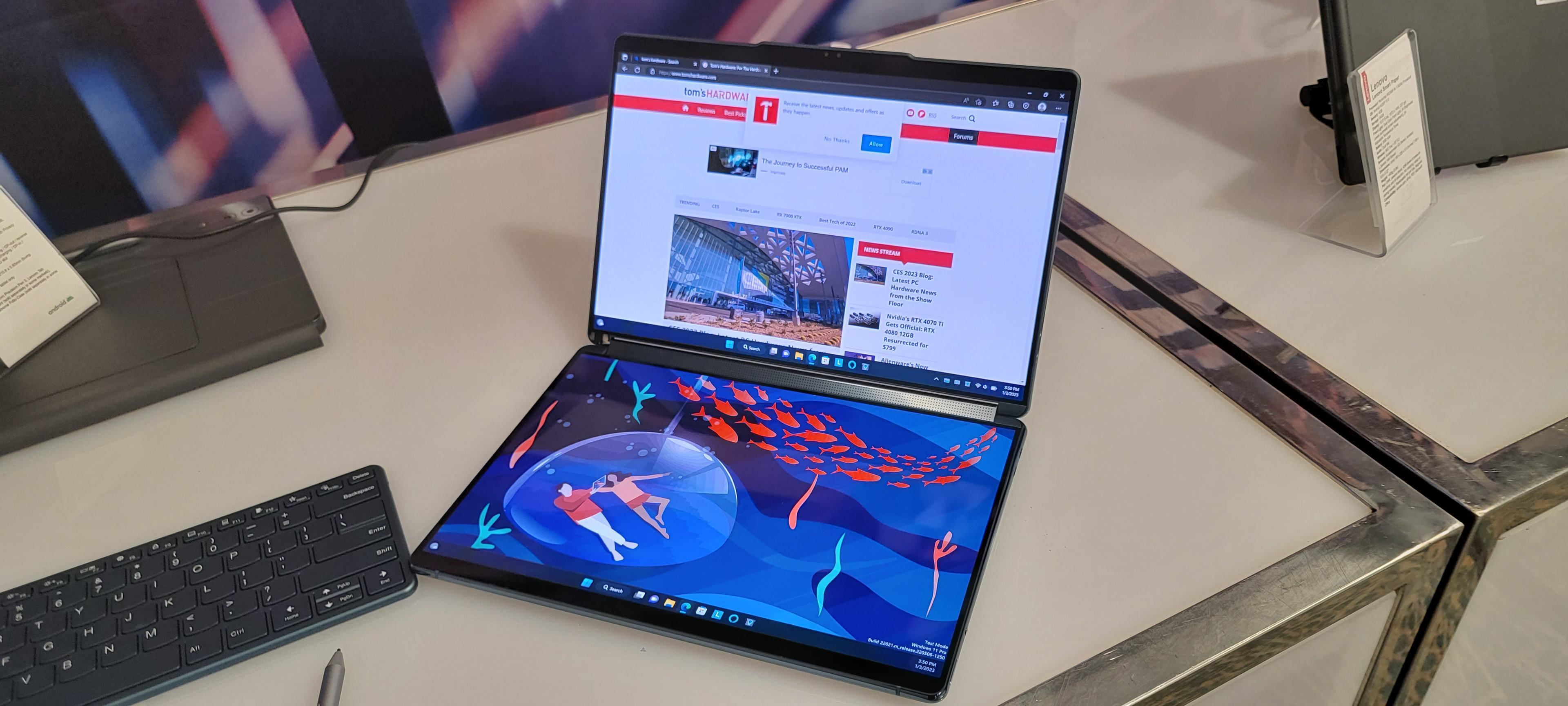
As someone with four screens at home, I’ve followed the various attempts at a dual-screen laptop with great interest. In the last dozen years or so, we’ve seen laptops with slide-out second screens, those with smaller screens above the keyboard or on the touchpad and, most prominently, those where the a second screen appears on top of the base in lieu of a physical keyboard and touchpad.
The category of foldable, dual-screen laptops has a long but checkered history. Acer came out with the Iconia 6120 all the way back in 2011, but that laptop never made it to a second generation. Lenovo has had two generations of its ThinkPad X1 Fold, the latest being announced this past fall. And Microsoft teased the dual-screen Surface Neo in 2019, but cancelled the project.
Today, Lenovo is making the latest attempt with its Yoga Book 9i and the results seem pretty impressive at first glance. Deputy Managing Editor Paul Alcorn had a chance to test out the laptop and its dual, 13-inch OLED displays at Lenovo’s CES suite and found the design compelling.
Paul really appreciated the bright, vibrant colors at the 2.8K screens, but was particularly taken by the device’s ability to use multitouch gestures. By swiping four-fingers down from the top panel, he put the Yoga Book 9i into waterfall mode, which is one giant screen. Using an 8-finger swipe turns the bottom screen into a touch keyboard, which you can also drag around.
He noted that you can put an app bar above the virtual keyboard if you want. In the pic below, you can see a bar with the weather and Microsoft news headlines on it.
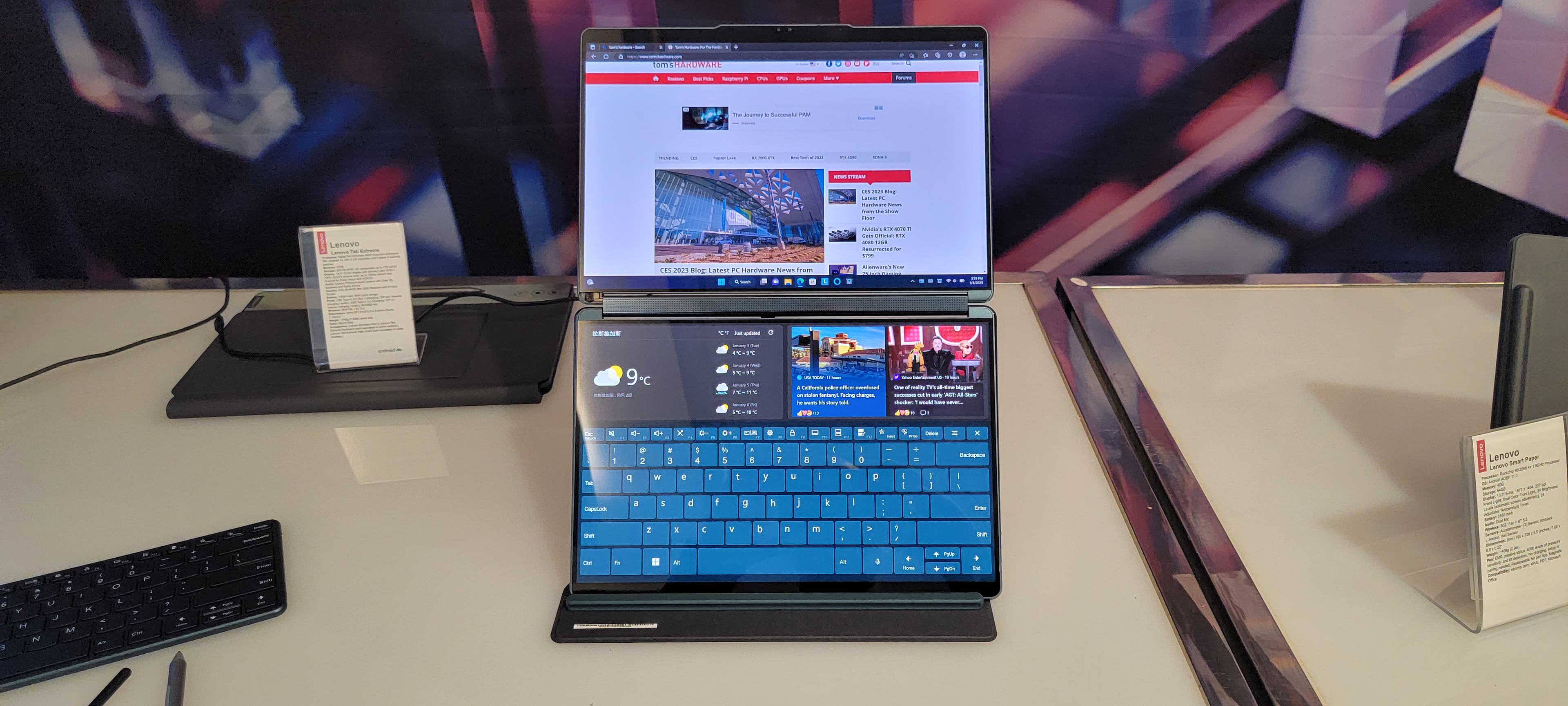
However, typing on a display wasn’t exactly his cup of tea (it wouldn’t be mine either) . Fortunately, Lenovo will sell a Bluetooth keyboard you lay on top of the bottom screen to solve this problem.
Paul also noted that the two displays seem to have the same weight, which makes for an unusual lap experience. Where we’re used to laptops being bottom weighted, the Yoga Book 9i has two sides that feel about the same weight. Paul also found the hinge very sturdy and strong during his hands-on.
So the question remains: do enough people want dual-screen, foldable laptops for the Yoga Book 9i to get a second-generation model next year or is this just another experiment without staying power?
It looks like Lenovo has done the work to make the build-quality compelling on the Yoga Book 9i, but at $2,099 to start (before you get the keyboard), this is an expensive risk for consumers to take. The success of this laptop may hinge (pun intended) on its battery life and on the benefits consumers perceive from having a second screen in lieu of a keyboard.
It’s clear that having two monitors brings you more productivity, but folks can also buy one of the best portable monitors for less than $300 and use it with any laptop they want.
Cooler Master’s MK770 Keyboard is Packed with Colorful Typing Goodness
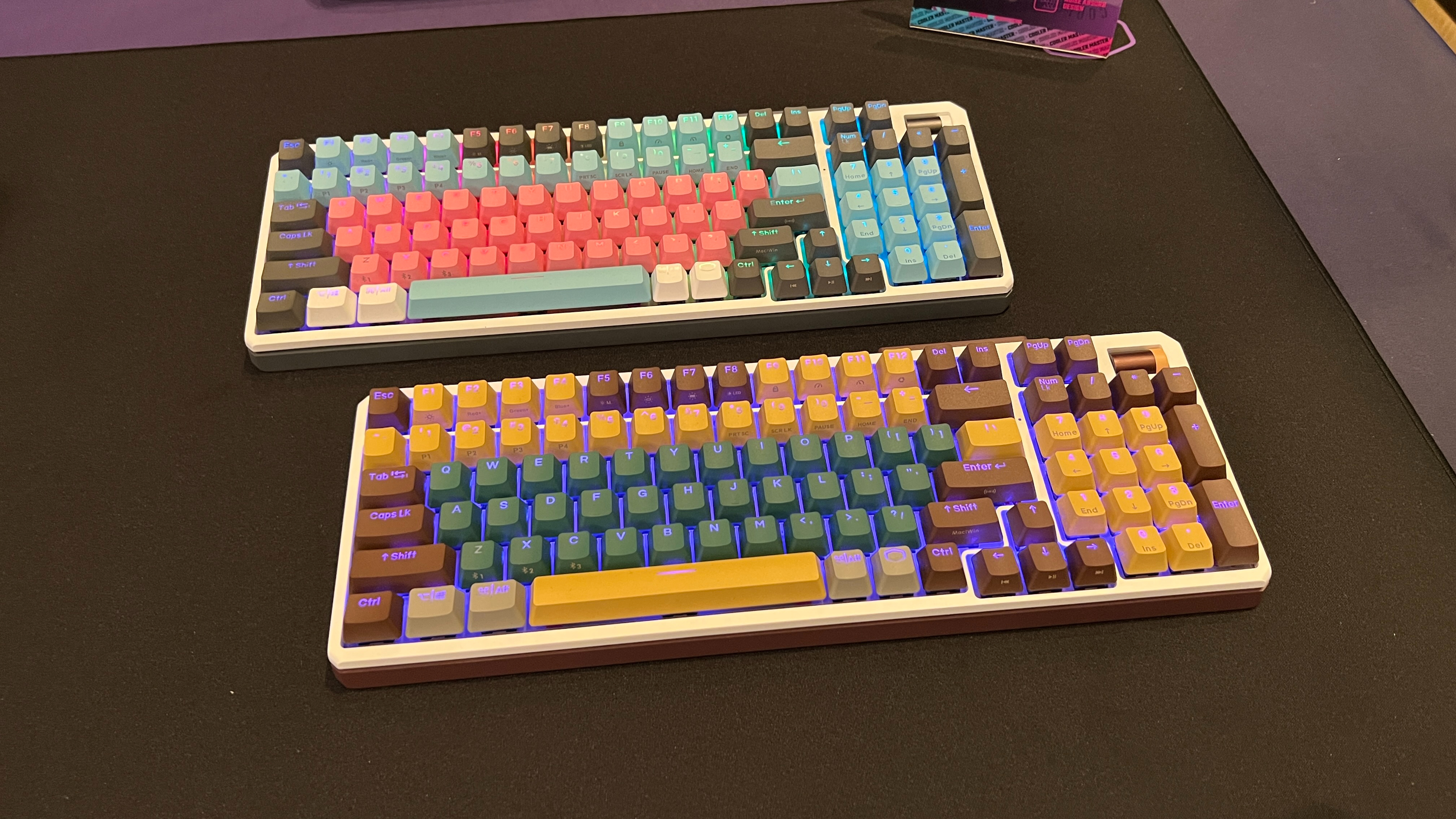
As always, CES is packed with peripherals, but most of them just don’t stand out. Cooler Master’s MK770 keyboard would stand out in any crowd, thanks to its eye-catching colorways. The 96-percent keyboard comes in four different styles: Cyan / Magenta / Gray, Mint Green / Forrest Green / Off white, Fruity Pebbles and (our fave) the AOT Theme which is a mix of forest green, brown, tan and gray. The latter one is supposed to remind you of Attack on Titan, but also looks a lot like Boba Fett’s Mandalorian armor.
But the MK770 is more than just a stylish clacker; it has a slew of features designed to make you more productive. The keyboard connects to your computer wither through 2.4 GHz wireless, one of three Bluetooth profiles or via a USB-C wired connection. It has silicon padding to dampen hollow sounds, gasket mounting for a more cushioned typing experience and pre-lubed stabilizers to limit rattle.
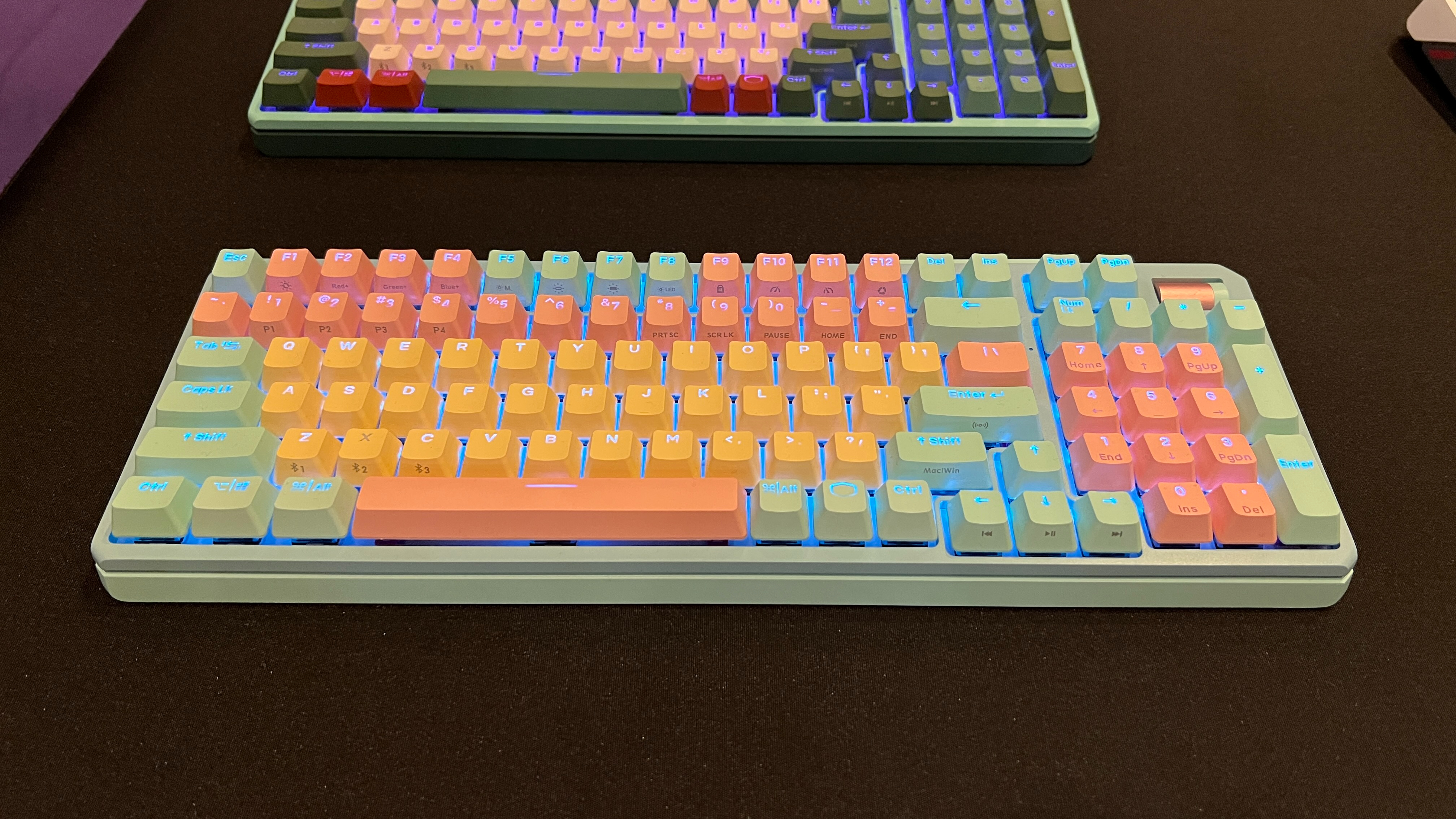
Best of all, the Cooler Master MK770 uses Kailh Box V2 switches in clicky, linear or tactile formats. In our experience, Kailh Box switches offer some of the best typing experiences around and we absolutely love Kailh Box White switches, which are the company’s most popular clicky switch. Cooler Master didn’t tell us exactly which color of Kailh Box clicky switches it’s using but a picture in the press kit shows Box White switches alongside Box Brown (tactile) and Box Red (linear). And, if you don’t like the switches that come with the MK770, it is a hot-swappable keyboard so you can put in your own (perhaps Kailh Box Glazed Green, my fave).
Senior Editor Sarah Jacobsson Purewal had a chance to type on the Cooler Master MK770 at the company’s CES suite and was impressed the snappiness of the clicky and linear models she tried. She also noted that the keyboards have helpful flipout feet that allow you to angle the keyboard in either of angles.
Sarah also took notice of the compact layout, which allows you to fit a numpad into a very compact form factor, and the three-way control wheel. According to Cooler Master, this wheel is customizable via software and can respond to a turn or a press. I imagine using it for volume control or zoom in / out in your browser.
We don’t have exact pricing on the MK770 or availability but it sounds like it’s going to be reasonably priced, somewhere between $100 and $150 when it comes out later this year. This is the kind of premium keyboard that seems to give you a bit of everything: customization, personality, a premium typing experience, a generous layout and plenty of connectivity options.
German Gaming Behemoth Packs RTX 4090 and External Radiator to Cool It
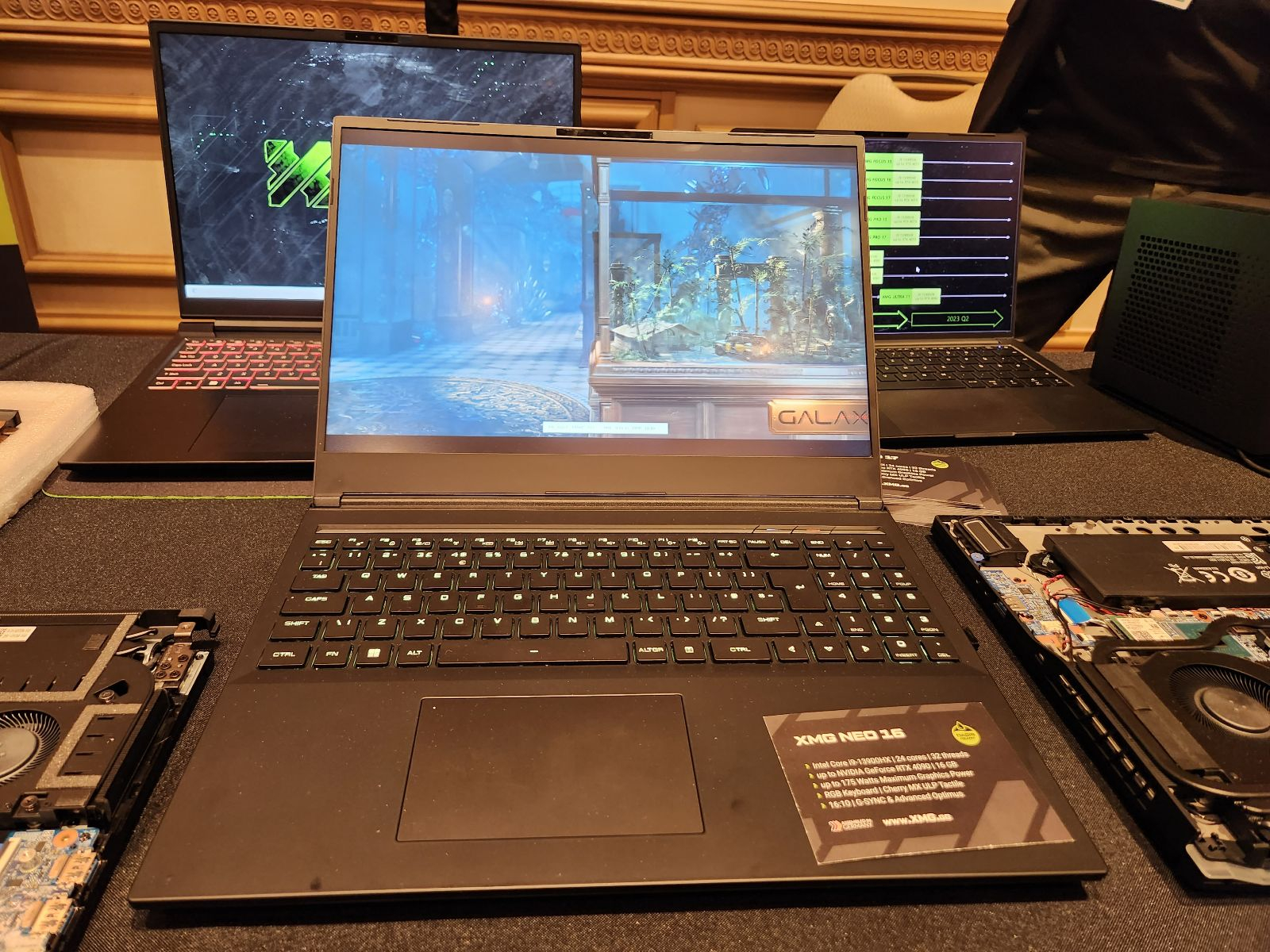
A cool system is a fast system. Every time we talk to gaming laptop OEMs, the conversation quickly turns to cooling and what kinds of unique innovations the manufacturer can make to keep high-wattage parts like the CPU and GPU from getting hot and throttling performance. On desktops, there’s usually room for more fans and large radiators to dissipate heat, but on laptops, not so much.
German laptop vendor XMG is here at CES showing off its new XMG Neo 16, a 16-inch gaming laptop that packs up to a Core i9-13900HX CPU and an RTX 4090 GPU. By default, it uses an internal thermal solution with dual fans, five heat pipes, four air outlets (each with a heat sink) and Thermal Grizzly Conductonaut paste for the chips.
However, if you want to kick the cooling up a notch, you’ll be able to buy an external radiator called the XMG Oasis, which will connect magnetically to liquid cooling ports on the laptop and circulate the warm liquid via a standard hose system like you would see on any AIO cooler. The difference here is that the tubes and radiator are outside of the laptop.
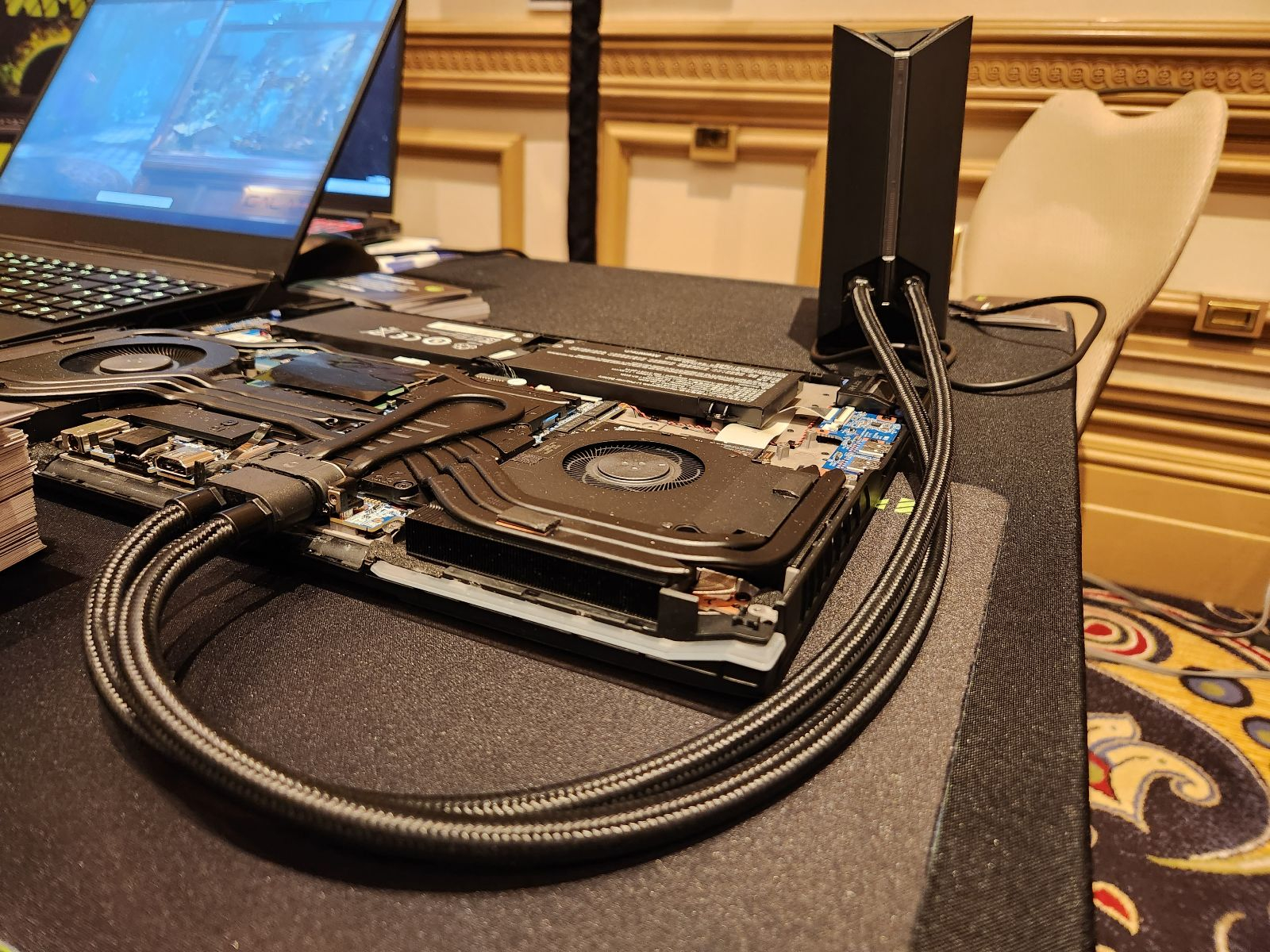
XMG’s Oasis accessory and its Neo laptops are not brand new. The company has been selling an Oasis external radiator since 2022 and its 2022 Neo laptops have a quick release port for it. However, XMG says that the 2023 Oasis will have a new magnetic connector and will be made for the added heat that a Core i9-13900HX and RTX 4090 can generate.
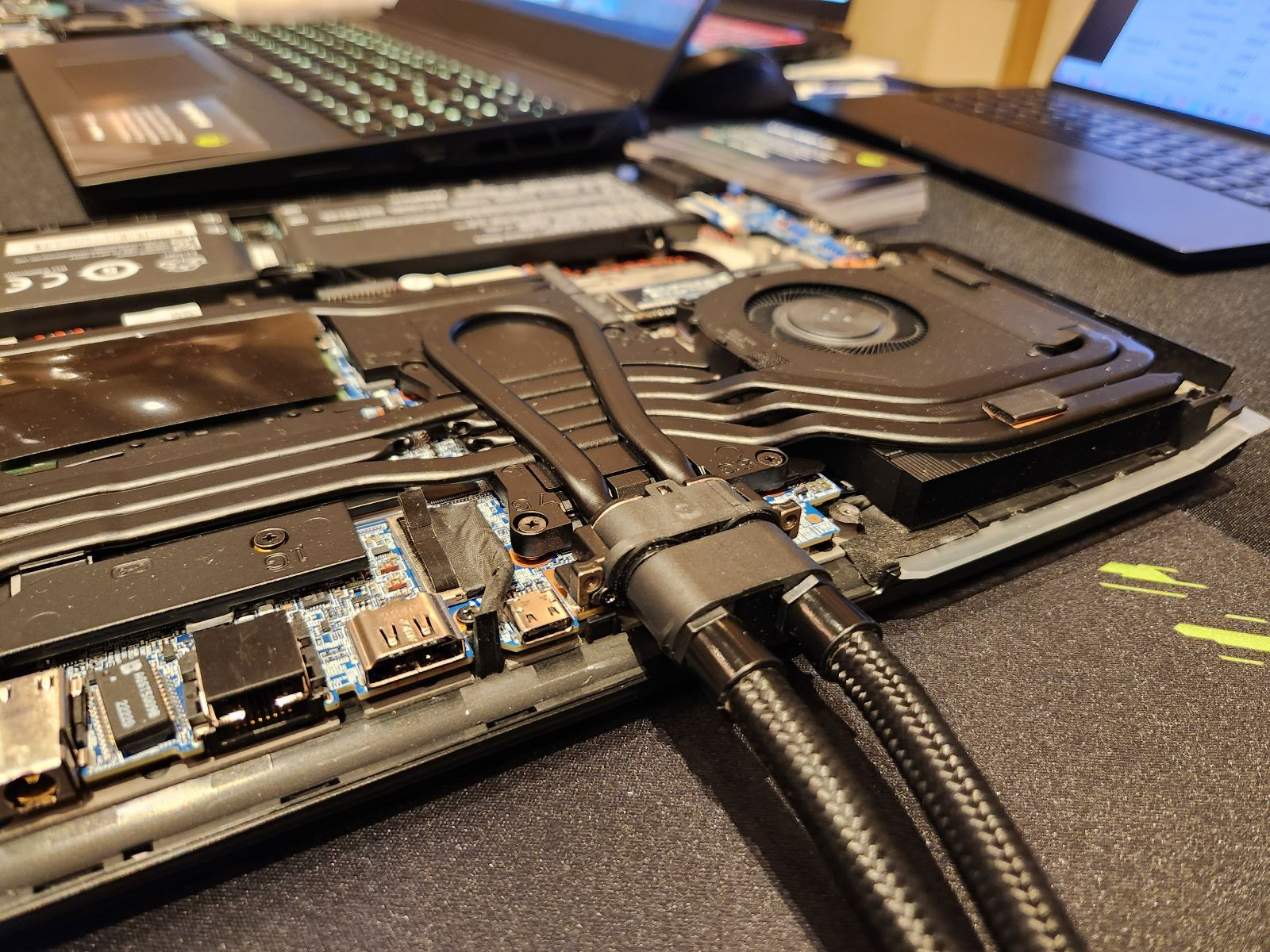
The XMG Neo 16 sports a 16-inch, 2560 x 1600 240 Hz display that promises to hit 350 nits of brightness with 95 percent coverage of the sRGB color space. It comes standard with a Core i9-13900HX CPU that has 8 P cores and 16 E-cores with a 5.4 GHz boost clock. You can configure it with GPUs ranging from an RTX 4060 to an RTX 4090, up to 64GB of DDR5 RAM and varying amounts of SSD storage. You also get a choice of a membrane keyboard or one with Cherry MX ultra low profile tactile switches.
U.S. residents may want to look elsewhere. The XMG Neo 16 and its slightly-larger sibling, the XMG Neo 17 are primarily sold in Europe. They will start shipping in mid-February for a starting price of € 2,199 with an RTX 4060 GPU. Upgrading the graphics card, RAM and storage adds to the price.
Buildable and Expandable Cases Are Trendy This Year

Many people says that PC building is a “DIY” task. So what do you call it when you have to not only build the computer, but the chassis as well? Double DIY?
At CES 2023, we’ve seen three different PC cases from two different vendors that you either have to put together from scratch or modify with expansion parts after the fact. InWin has two such cases: the POC and the Mod Free.
InWin’s POC comes as a series of seven, flat packed SECC steel panels you need to fold, origami-style to create a colorful mini ITX case. The case comes in two different, two-tone colorways: green / yellow (aka Tropical Sweetheart) and blue / black (aka Race Blue). The case also inclues a 120mm ffan and a PCIe 4.0 riser cable.
The POC tower has room for just a single 120mm fan, a 160mm PSU unit and a GPU that’s a maximum of 342mm long. It has a USB 3.2 Gen 2×2 port, two USB 3.2 Gen 1 ports and a 3.5mm audio jack. There’s a dedicated GPU chamber that holds your graphics card vertically.
At InWin’s CES suite Senior Editor Sarah Jacobsson Purewal saw the POC cases and thought the design was attractive, but did not look extremely sturdy. This is clearly a nice product for a fun build, but whether it would hold up over the long haul is an open question. In any case, flat packing the panels saves on packaging materials, which is good for the environment.

InWin also has ModFree, a series of cases that have extra metal add-ons you can use to make them larger so they can accommodate a larger PSU, more fans, more storage or perhaps even a second motherboard.
The company touts this as the “first ever fully modular case,” which we’re not sure is true. However, the idea of throwing on a top section or a new side section to expand your chassis seems kind of cool.
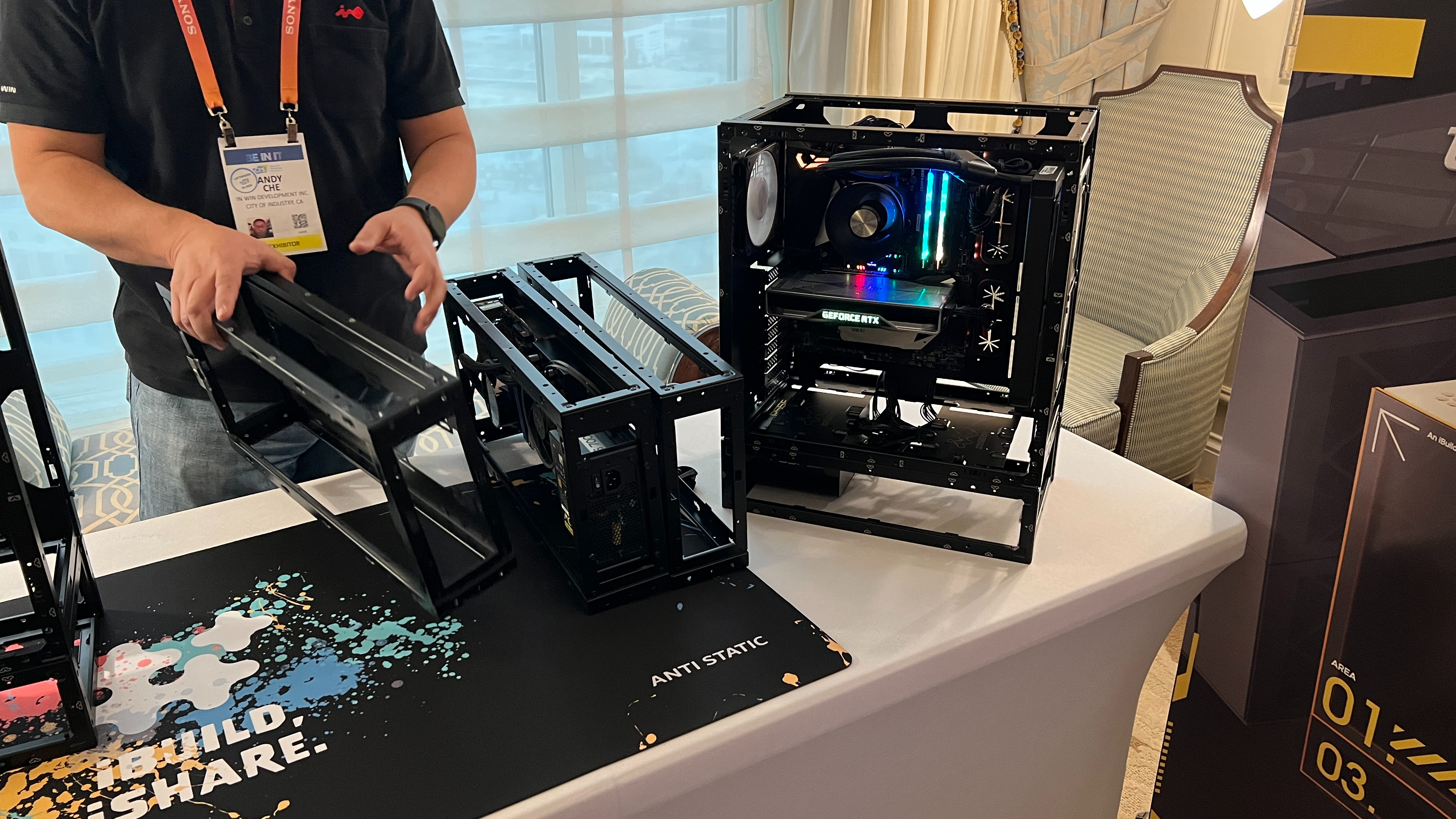
The ModFree will be available in four designs: base edition, stretch edition, deluxe edition and mod tier edition. InWin says the cases can support up to a 420mm radiator, 9 PCIe expansion slots and lots of storage drives.

Cooler Master is also showing off its own flat-pack, build-it-yourself case called the Qube 500. The case supports ATX size motherboards and gives you a variety of different types of panels you can attach to the sides and top, including clear and mesh in different colors.
We saw blue, green and yellow mesh panels at Cooler Master’s suite, but the company told Sarah that it will initially sell the cases with just black or white panels and you’ll have to buy the colorful panels separately. They also plan to sell seasonal colors.
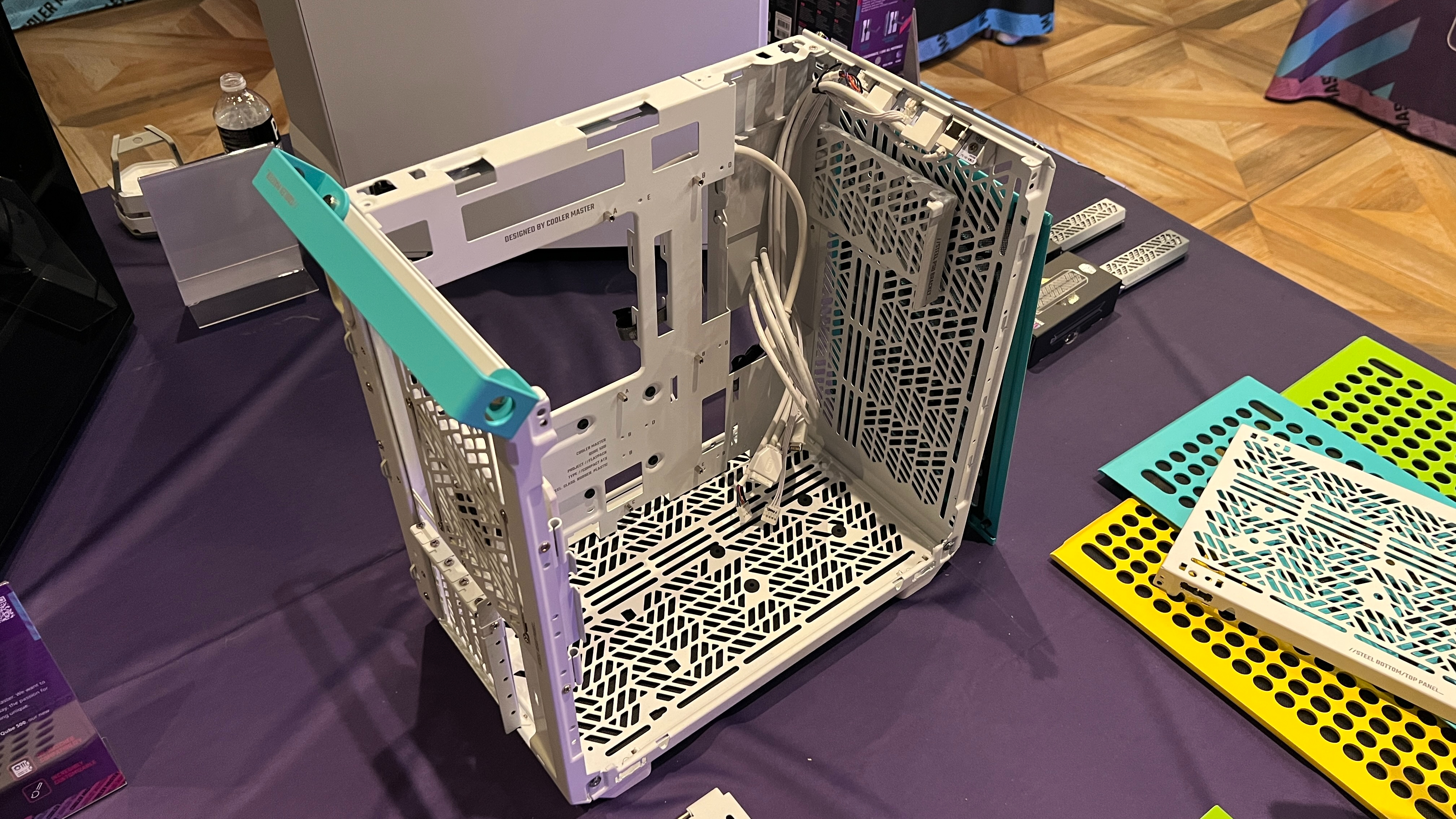
Sarah said she liked the look and feel of the Qube 500 better than the POC. It seemed more solid and it has support for larger motherboards.
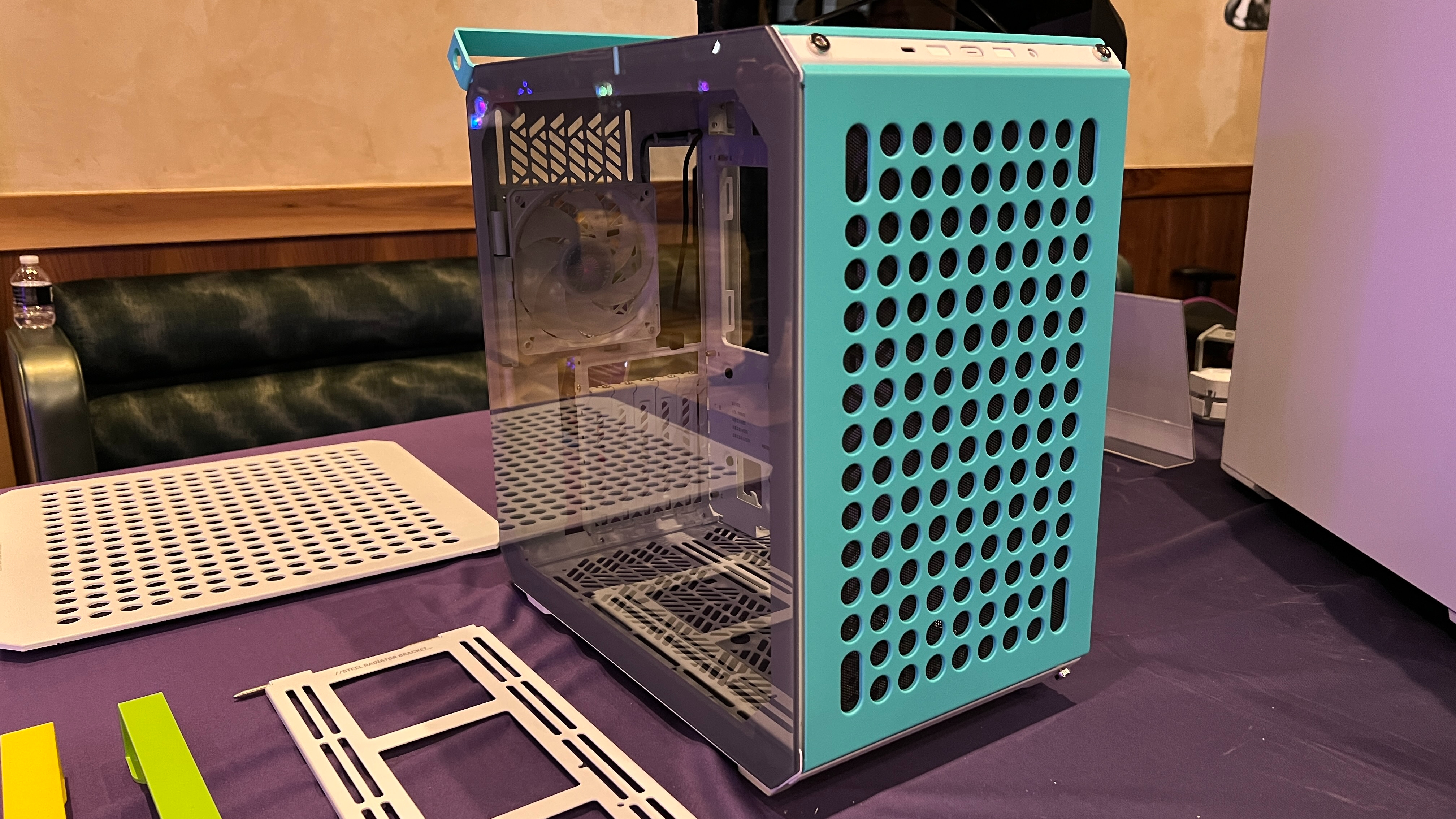
There’s no word yet on pricing or availability for the Qube 500, POC or ModFree. But we’d expect to see them sometime this year.
Wireless Power Gets a Little Bit Closer with Dev Kits
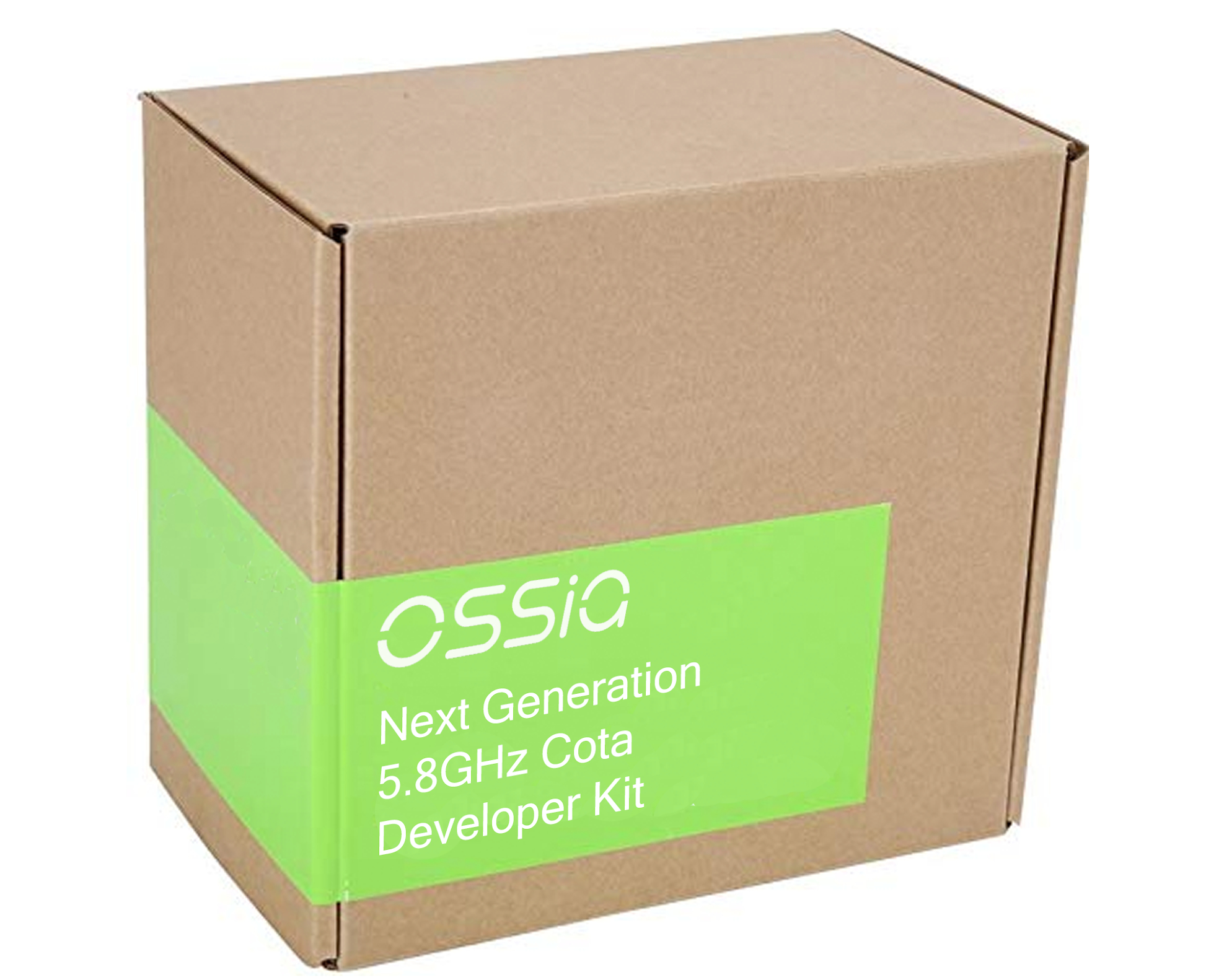
Ossia’s Cota wireless charging technology has been a CES mainstay for years, but we’re still yet to see it in a shipping product. We might, however, be slightly closer. This year’s update from the company is that its next-generation technology, which uses 5.8 GHz frequency to transmit energy back and forth with receiving chips in a base station. This should help it avoid issues around the more popular 2.4 GHz frequency.
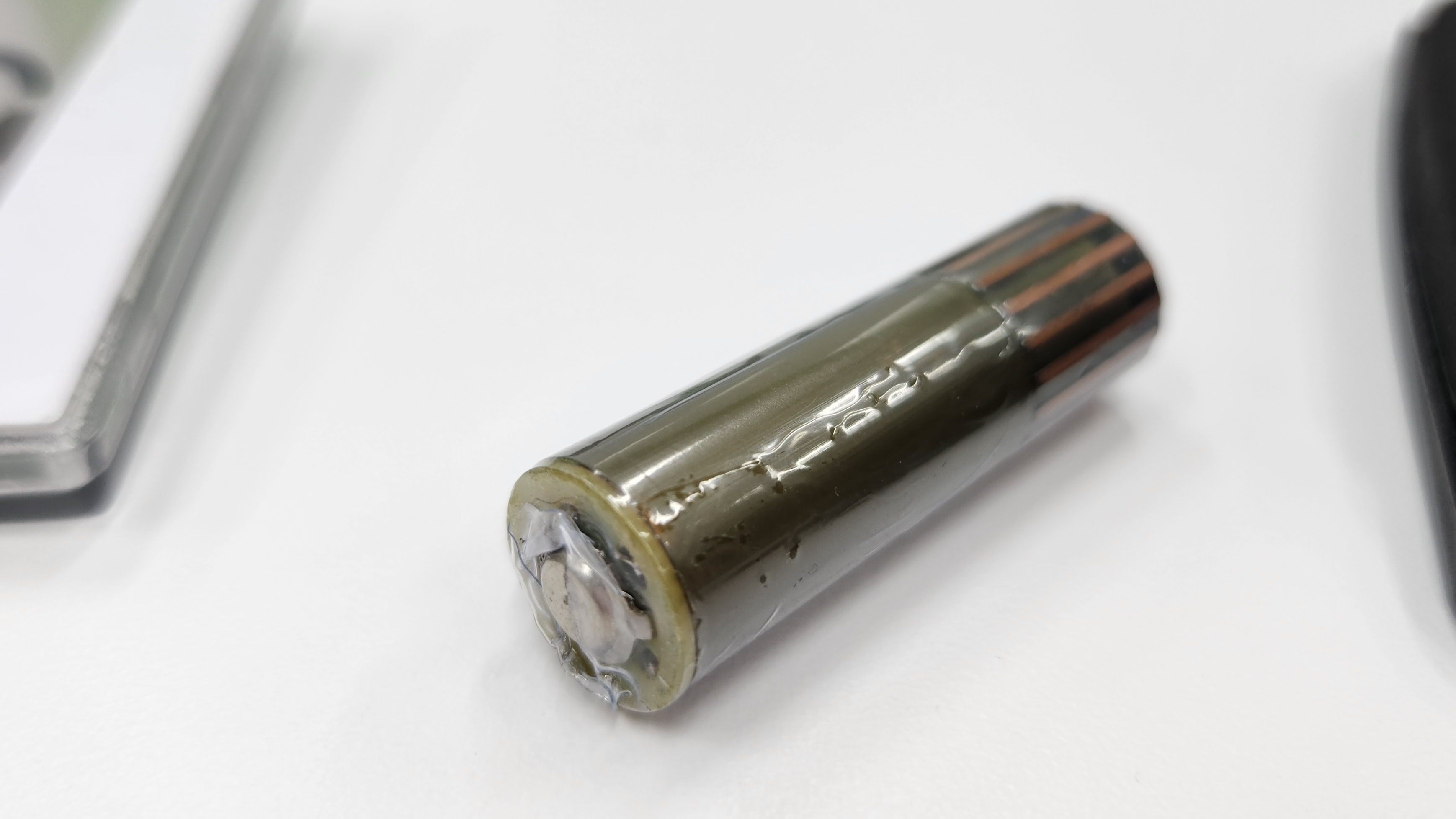
The dev kit will let companies curious about adding the tech to their products give it a shot. Cota inventor Hatam Zeine told Tom’s Hardware to expect the technology in devices shaped like double-A batteries, which could go in your smoke detector, remote control or other devices and, in theory, not need to be replaced as they’re constantly charged.
It’s likely that this kind of technology is going to go to businesses before the consumer market. But we should look forward to more news at Mobile World Congress, where we’ll learn about a new universal base station.
You can learn more about Cota and the company’s vision for it in our full write-up of our meeting with Ossia, which has plenty more comments from Zeine.
Gaming Laptops Are Moving to 16:10 and Getting Bigger
Productivity laptops have moved to 16:10 and even 3:2 aspect ratios over the past few years. Now, it’s time for gaming laptops to go a bit taller.
We’ve seen just about every laptop vendor move away from the traditional 16:9 at CES. You may have noticed a ton of 16 and 18-inch laptops replacing the 15 and 17-inch sizes you’ve come to expect. The new aspect ratio is allowing for those larger diagonal measurements on laptops like the Alienware x16 and m18, Razer Blade 16 and 18, Acer Predator Helios 16 and 18 (and Nitro 16), Asus ROG Strix G16 and G18 and MSI Raider GE78HX and GE68HX.
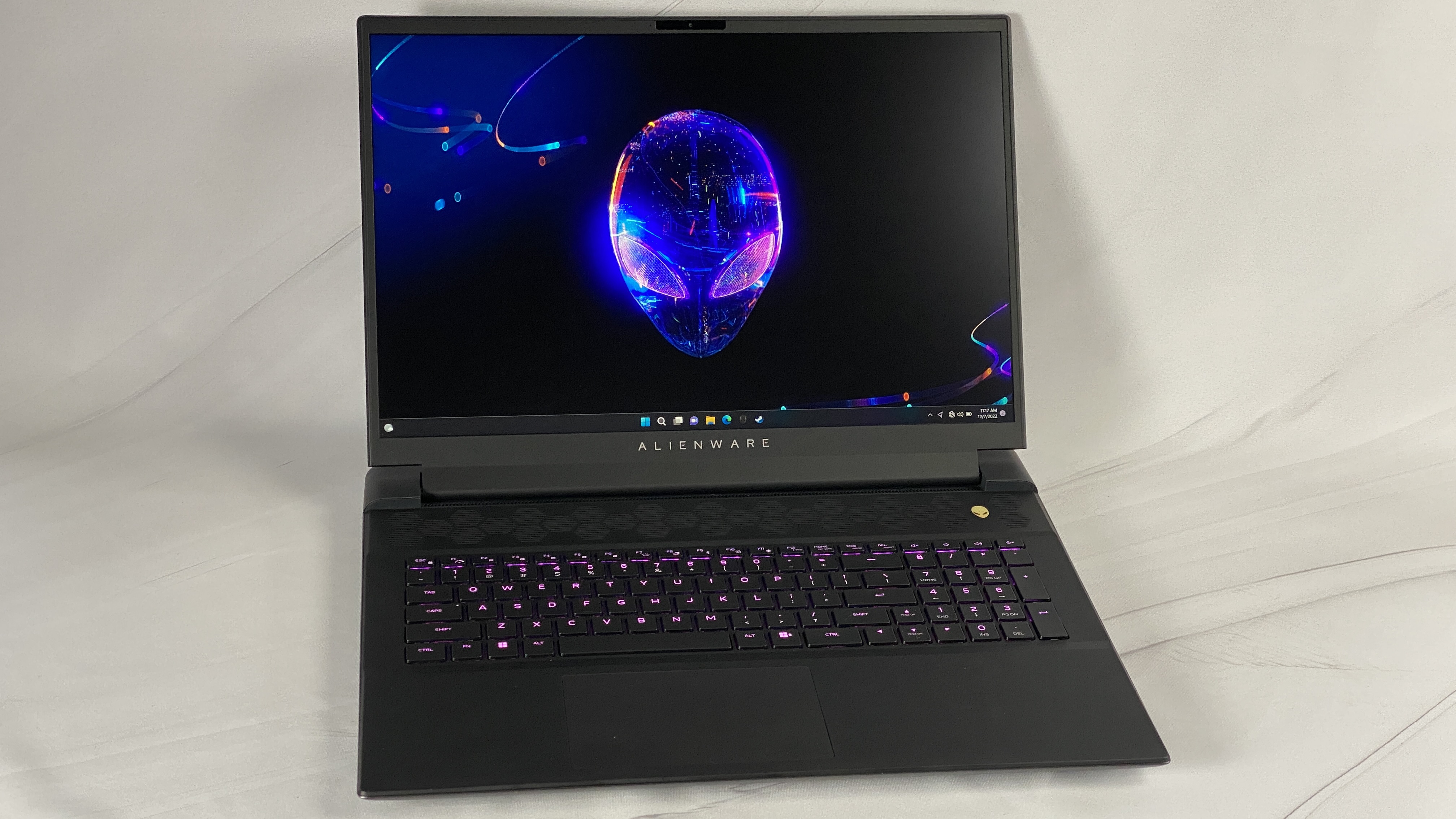
The taller screens are of limited utility for gaming. After all, the majority of desktop monitors and televisions are still 16:9, so that’s considered the default aspect ratio. That being said, many games will support the extra pixels, though your GPU will have to work a bit harder to push them. And you can always pick a 16:9 resolution if you want it.
(This also makes for weird aspect ratios that many laptop companies will obscure. 1920 x 1080 becomes 1920 x 1200 at 16:10. Many manufacturers will label that as “FHD+” and call it a day. Rinse and repeat for QHD+, which is 2560 x 1600, and UHD+, which is 3840 x 2400.)

But these bigger screens are likely to be of more benefit for people who use their gaming laptops for activities other than gaming. Video editors who use the powerful GPUs, for instance, may appreciate having a bit more workspace, as will photo editors and even people who spend lots of time in documents and spreadsheets. This makes sense, to a degree. Someone buying an 18-inch laptop is replacing a desktop, so it should be able to do it all.
That’s not to say 16:9 is gone entirely. You can still find it on the 17-inch MSI Titan GT77 HX (which is getting the Mini LED treatment), Asus Strix Scar 17 and G17, HP Omen 17, Dell G15 and Acer Nitro 17, among others, if that’s your preference.
Of course, these bigger screens aren’t the only changes to laptops at CES. We’re also seeing new 13th Gen CPUs from Intel, 7000-series processors from AMD, and mobile GPUs in the form of Nvidia’s RTX 40-series and AMD’s Radeon RX 7000 graphics.
Our Best of CES List is Out

Our 2023 awards for best of CES are now live. We agonized over winners in key categories, looking for products that are not only high-quality and unique but also harbingers of great things to come in their spaces.
We picked 12 winners in categories ranging from the best CPU (Ryzen 7 7800X3D) to the best laptop (Yoga Book 9i) to the best gaming monitor (Asus ROG Swift OLED PG27AQDM FTW!). There’s more details in our article, but a complete list of winners is below.
- Best CPU: AMD Ryzen 7 7800X3D
- Best SSD: MSI Spatium M570 Pro
- Best PC Case: Hyte Y40
- Best Cooling: Thermaltake Swafan EX12 / EX14
- Best Gaming Laptop: MSI Titan GT77 HX 13V
- Best Laptop: Lenovo Yoga Book 9i
- Best Gaming Monitor: Asus ROG Swift OLED PG27AQDM
- Best High-Refresh Rate Gaming Monitor: Asus Swift Pro PG248QP
- Best Portable Monitor: ViewSonic VX16-OLED
- Best Keyboard: Asus Azoth
- Best Webcam: Razer Kiyo Pro Ultra
- Best Concept: Dell Concept Luna
So, if you look at that list, you might be wondering about the categories we did not pick a winner for. The reality is that there were some categories where we saw products, but they didn’t stand out to us enough to award.
- Mouse / Gaming Mice: We saw some intriguing light-weight wireless entries from Asus, MSI, HyperX and Cooler Master but none of them really stood out to us, at least as far as the demos and information we got.
- GPU: The RTX 4070 Ti launched at CES and we even published our RTX 4070 Ti review. However, the 4070 Ti is a polarizing card that delivers solid performance but is pricey and so we opted not to award it. Nvidia and AMD both announced mobile chips but we honestly didn’t feel capable of assessing them at this point.
- Headsets: There were a number of these, but we just didn’t see a lot of innovation here.
- Desktop PCs: We didn’t see anything that stood out. Dell and HP announced refreshes of their desktops, but these are just updates to the latest CPUs and GPUs. Cooler Master had some interesting concept PCs in the Shark X and Sneaker X, but no word on what will be inside of them (likely they won’t be the fastest components).
CES isn’t over, though. So we will continue to see and highlight new products today.
We Don’t Care What Anyone Says, We Love This Weird Hardware
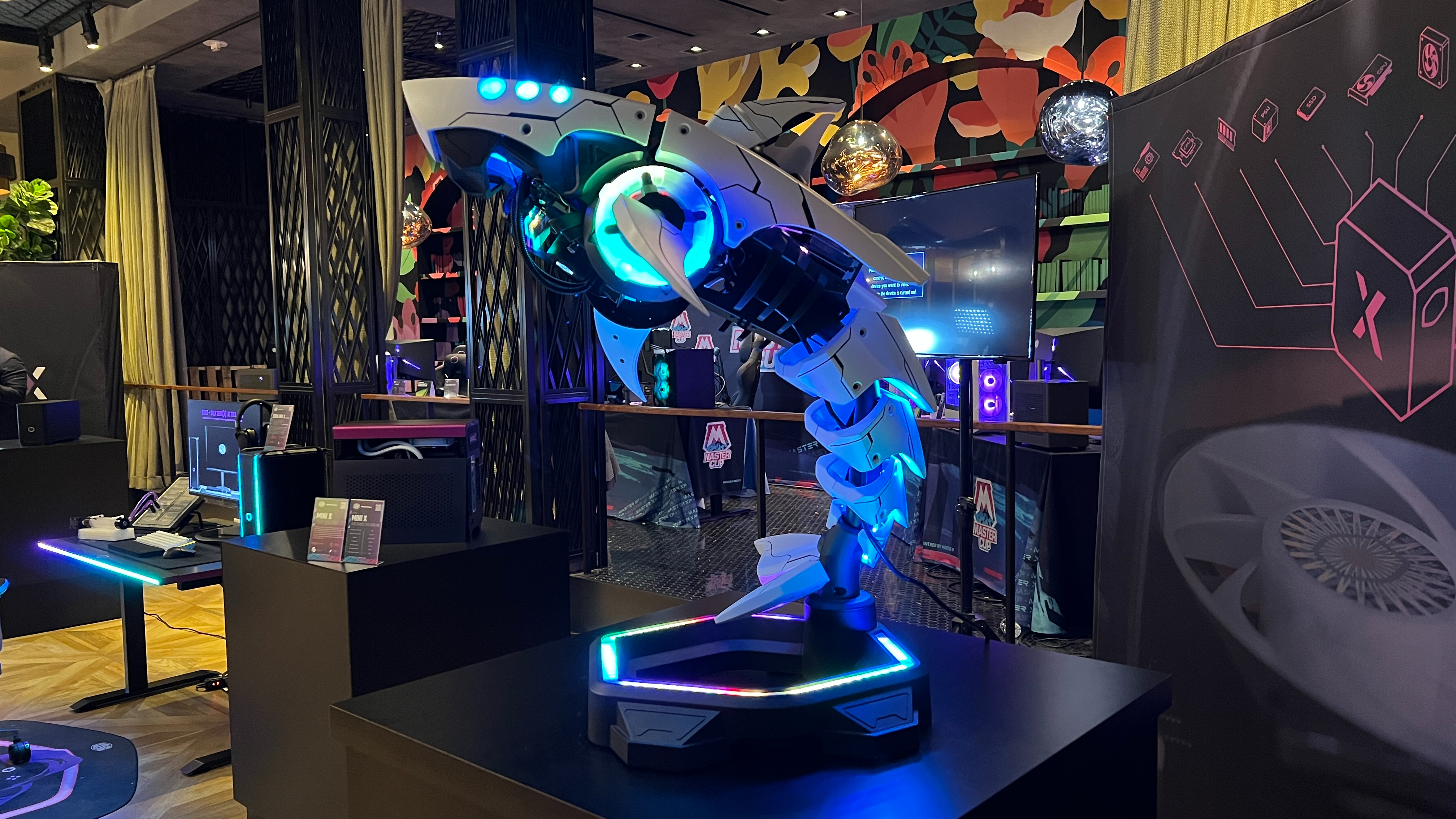
We’ve covered the Best of CES 2023, but we’re always interested in weird (aka unique) stuff too. In fact, if anything, we haven’t seen enough strange-looking tech at this year’s show.
Cooler Master leads the pack with its Shark X and Sneaker X PCs. These have very unique cases that look like a shark and a sneaker, respectively. However, they are going to be sold later this year with mini ITX based PCs inside (no word yet on the components).
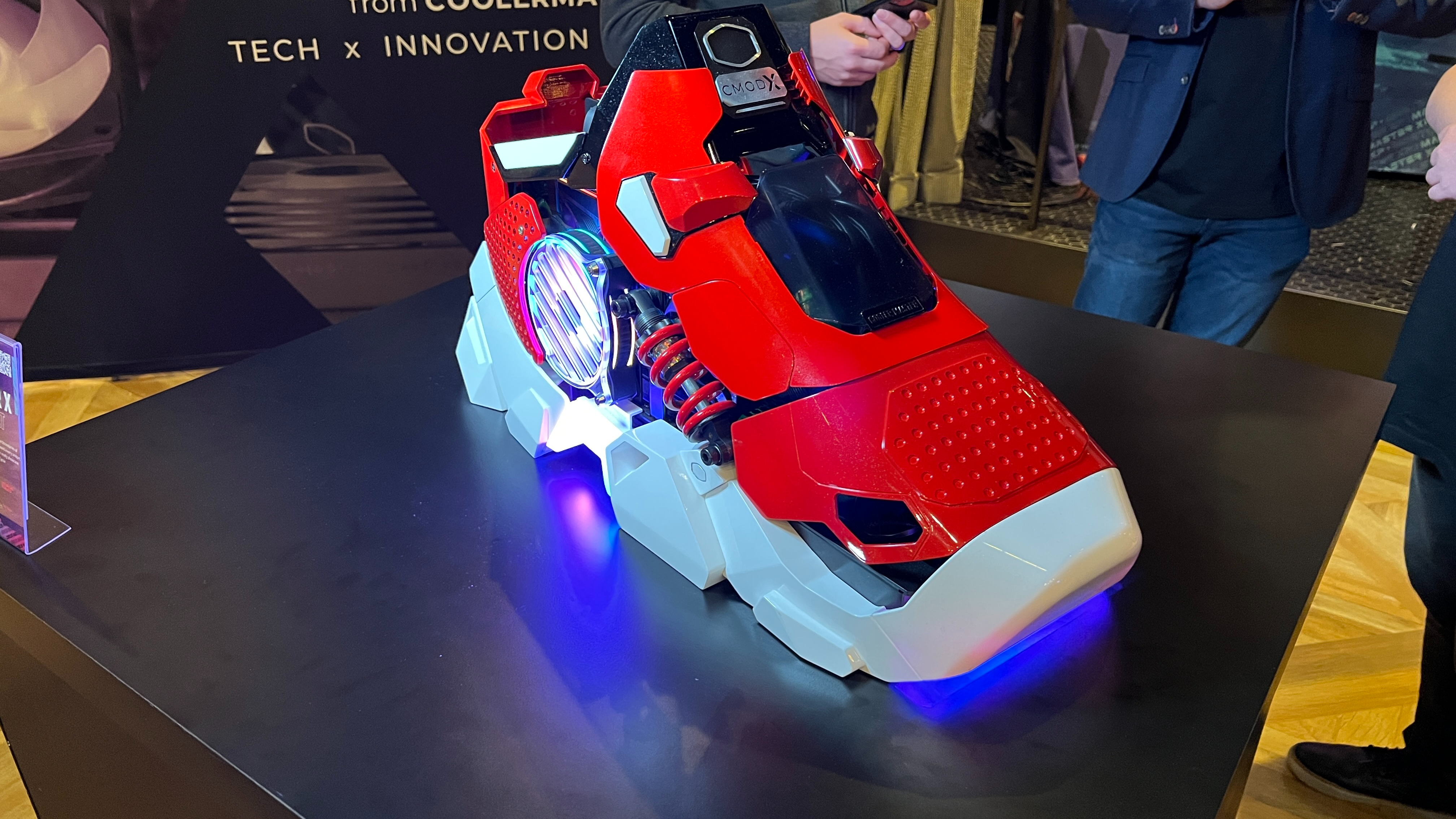
InWin has some weird looking cases too, particularly its Case Monsters, a series of kid-friendly ATX cases that have the faces of friendly characters such as a robot, a cutesy Frankenstein’s monster or an anthropomorphic plane.
The mid-tower cases all have different color schemes and come with headphone holders that stick out from the sides. The Frankenstein Case Monster case, for example, has headphone holders that look like the bolts in the monster’s neck.

HyperX’s new HX3D initiative is all about weird looking accessories. It is working with HP’s 3D printing division to make cutesy looking custom keycaps, microphone holders and headphone attachments. The first product will be keycap that has a cat with a scarf on it.
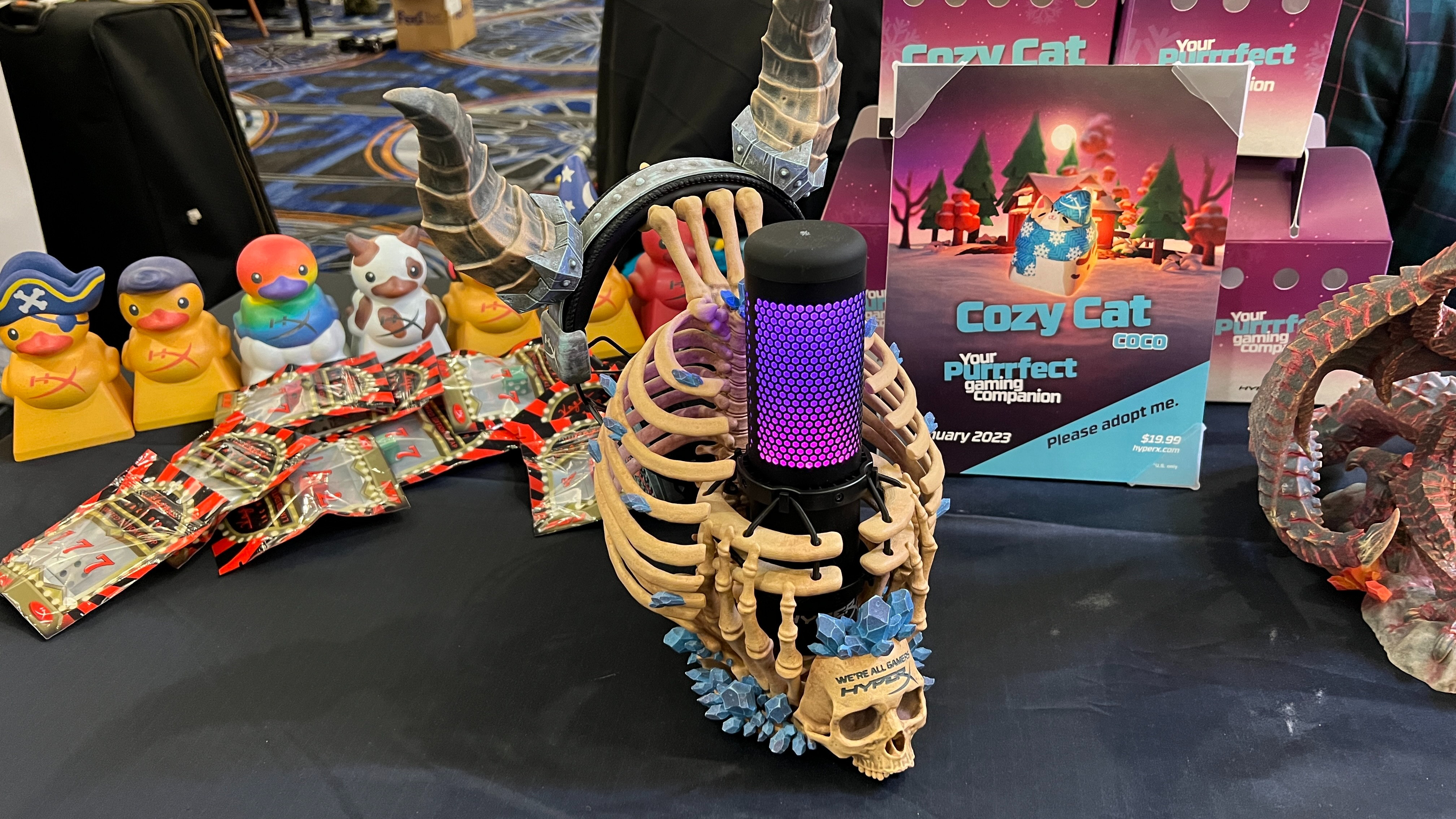
Side Panels That Show Holograms, Serve as Monitors

It seems like the next trendy thing in PC case accessories is turning your side window into something else. Yesterday, we reported on Showcase Hologram’s Hologram Side Panel Kits, which sit either on the inside of your PC’s window or replace it. We also just got a preview of ASRock’s upcoming 13.3-inch side panel kit (opens in new tab), a 1080p monitor that attaches to the inside of your PC window.
The kit, which the company says will go on sale sometime this spring for less than $100, was first announced in November. However, at ASRock’s CES suite, Deputy Managing Editor Paul Alcorn got a chance to see the screen in person and found it sharp and bright, with good viewing angles.
The screen comes with a mounting kit that allows you to attach it securely to the middle of your case window and it plugs into your motherboard using an eDP cable. Here’s where the bad news comes in: your motherboard needs to have an eDP port and only a select number of ASRock boards have this connector. These include the Z790 LiveMixer, Z790 Pro RS/D4, Z790M-ITX WiFi, Z790 Steel Legend WiFi, Z790 PG Lightning, Z790 Pro RS, Z790 PG Lightning/D4.,H610M-ITX/eDP, and B650E PG-ITX WiFi.
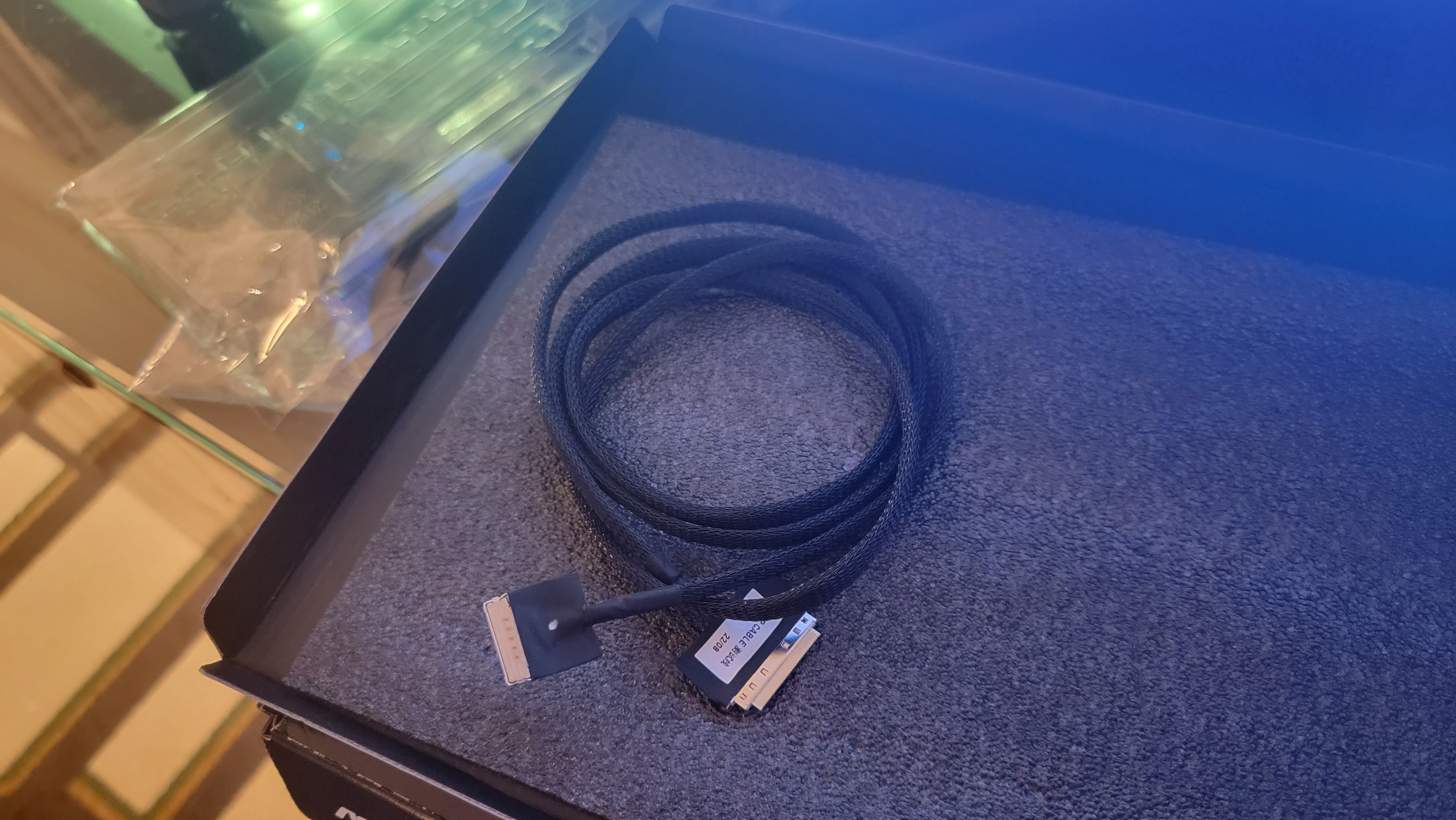
Still, if you have one of these boards or are planning a build and considering one of them, this seems like a really neat idea. Since Windows will recognize this as a complete monitor, you can use it to show anything you want, a Discord chat, your OBS screen while streaming, your email or you could just leave the Tom’s Hardware home page on it 24/7 (we don’t judge).
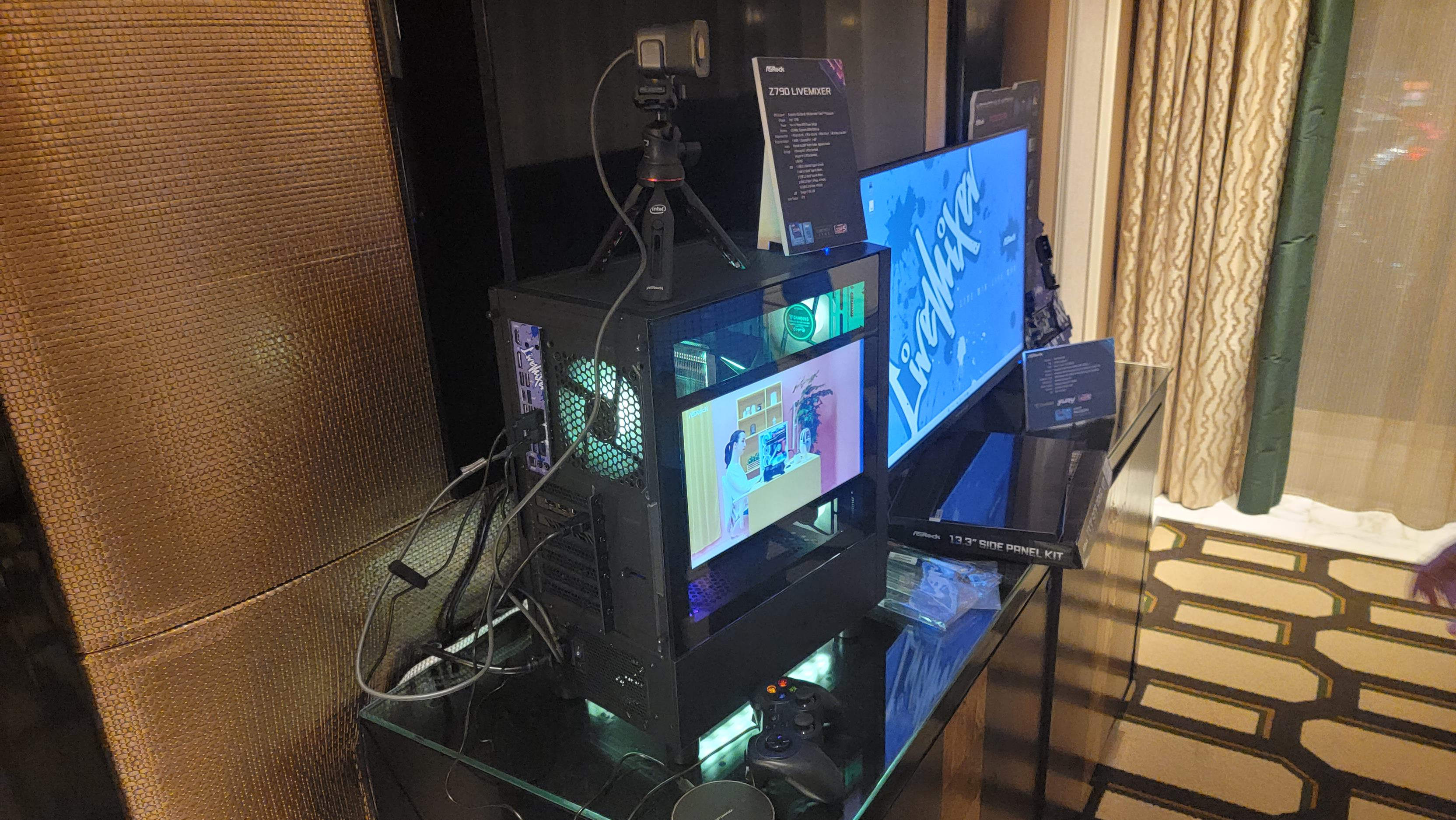
If you don’t have an ASRock motherboard with eDP or you just don’t like the idea of a display obstructing your view of your PC’s innards, Showcase Holograms’ side panel kit could be more for you. Available in small and large sizes for $149 or $199 when it launches later this year, the kit is a transparent window that shows a hologram of your choice.
Senior Editor Sarah Jacobsson Purewal got a look at the Hologram Side Panels and was impressed with how bright and solid the images seemed. In one view, she saw a Mario figure that was rotating in 3D.
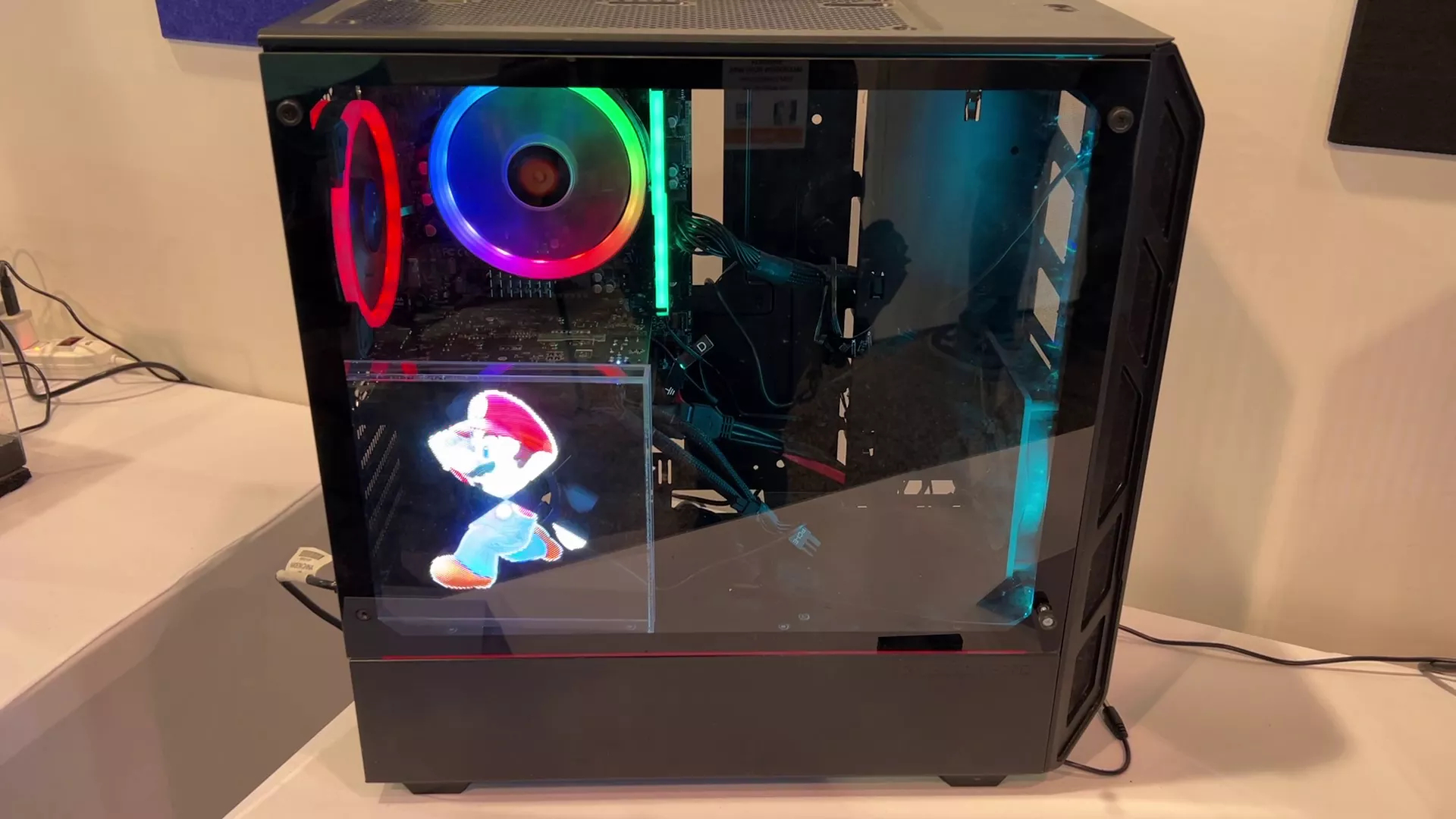
The Showcase kit is controlled via an app and draws its power via USB so it should work with just about any motherboard. You’d need to use the app to provide art or animations. It’s obviously less functional than ASRock’s screen, but it doesn’t block out most of your view either.
Would You Buy a $1,200 Raspberry-Pi Powered Robotic Cat?

When we’re at CES, we’re always on the lookout for brand new tech products that nobody has seen or reported on before. But, in our travels around the show halls, we also end up spying some products that came out before CES but which we haven’t encountered before.
Case in point: while perusing the robotics section of the LVCC, Senior Editor Sarah Jacobsson Purewal encountered the MarsCat, a robotic pet from Elephant Robotics. Available for $1,299, this feline is actually powered by a Raspberry Pi 3B which you can program in Python. But if you look at Elephant Robotics’ product page (opens in new tab), the cat is primarily marketed as a home pet, not a learning tool.
It’s supposed to run around the house on its own like a real pet cat, play with toys, react to being petted or even respond to voice commands. The MarsCat, which has 2-hour battery life, even walks itself over to its charger when it’s running low on juice. The company touts its cat as a good alternative for people who have allergies to real animals.
If $1,299 seems like a lot of money to spend on a robotic pet, consider that Son’ys Aibo robot dog costs $2,899 (opens in new tab), more than double this price. However, the limited demo Sarah saw was not particularly impressive.
She said that the cat seemed to walk in a less-than-realistic way and that it wasn’t very responsive when she petted it (perhaps like some real cats, though).
The movements we saw just weren’t great. However, the idea of programming this, a robot which has a Raspberry Pi inside, seems pretty cool. In addition to the Pi, MarsCat comes with 16 different joints, two 128 x 128 eyes, a 5-MP camera, a speaker, a microphone, a time-of-flight sensor, a capacitive touch sensor and a gyro sensor. Oh, and you can get it in white, gray, ginger or black.